The Rov who cared about shalom bayis Dentist now shapes health policies
Winners of Chassidus in Color contest
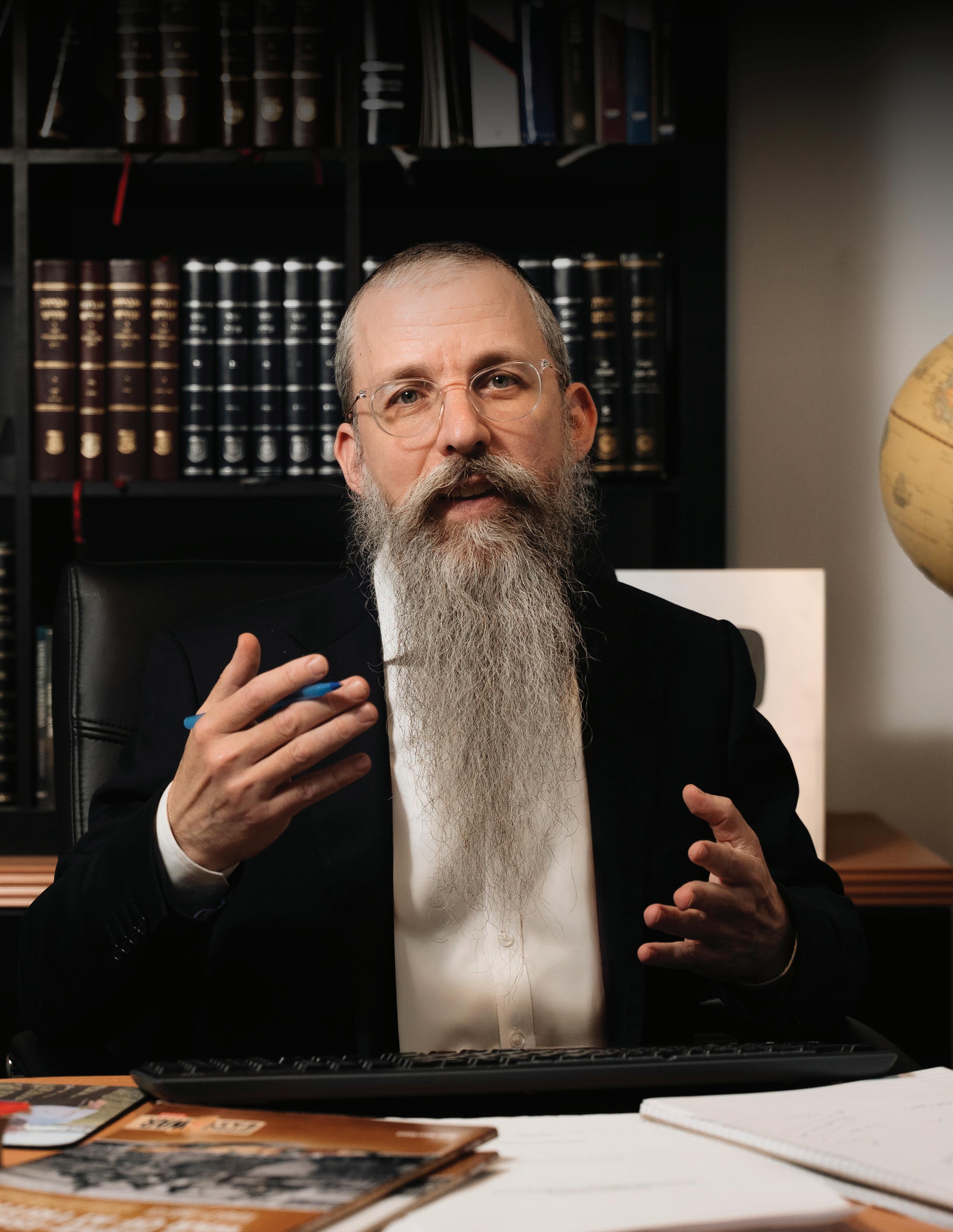
The salads you need this summer



The Rov who cared about shalom bayis Dentist now shapes health policies
Winners of Chassidus in Color contest

The salads you need this summer













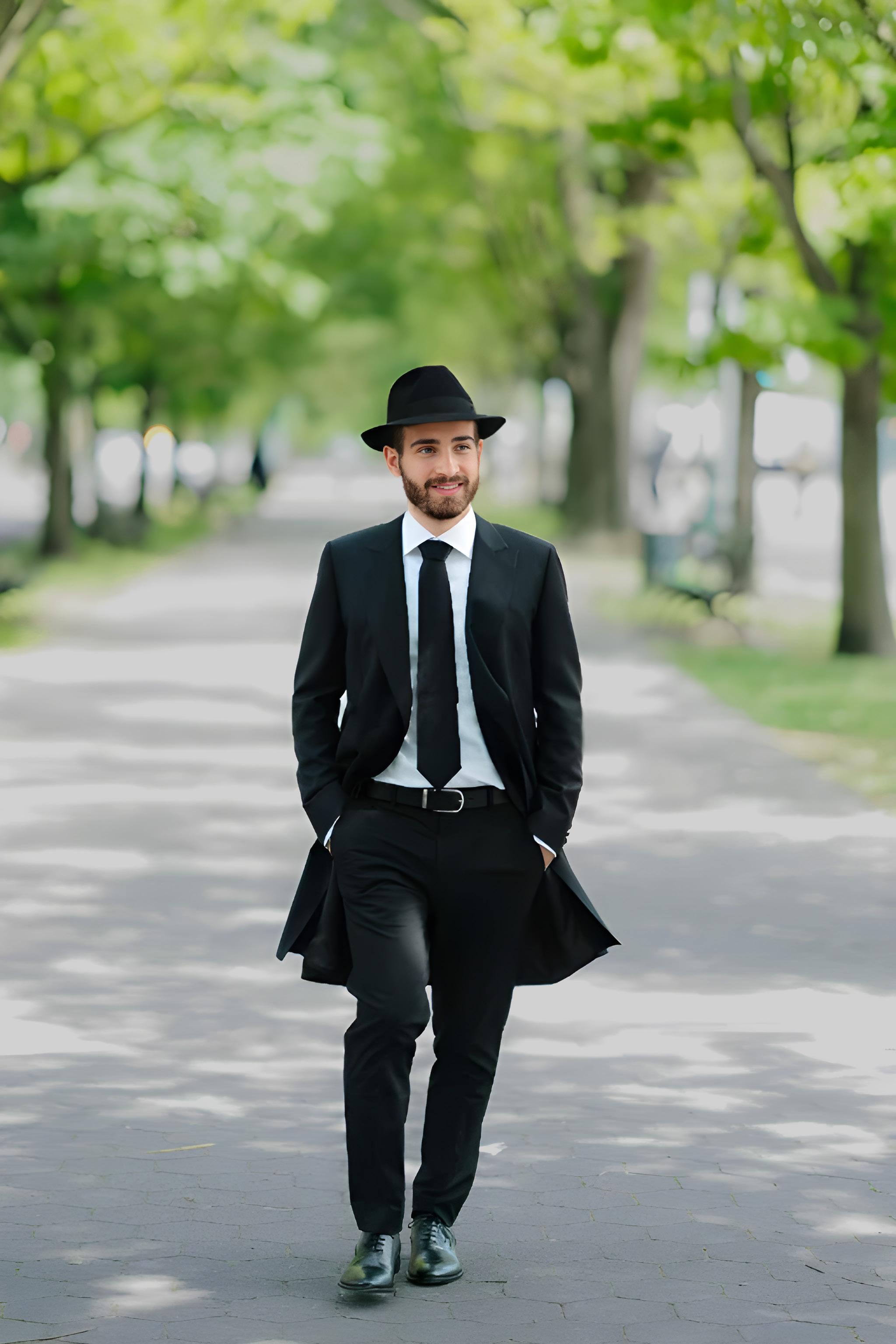

ISSUE 32
TAMMUZ 5785
JULY 2025
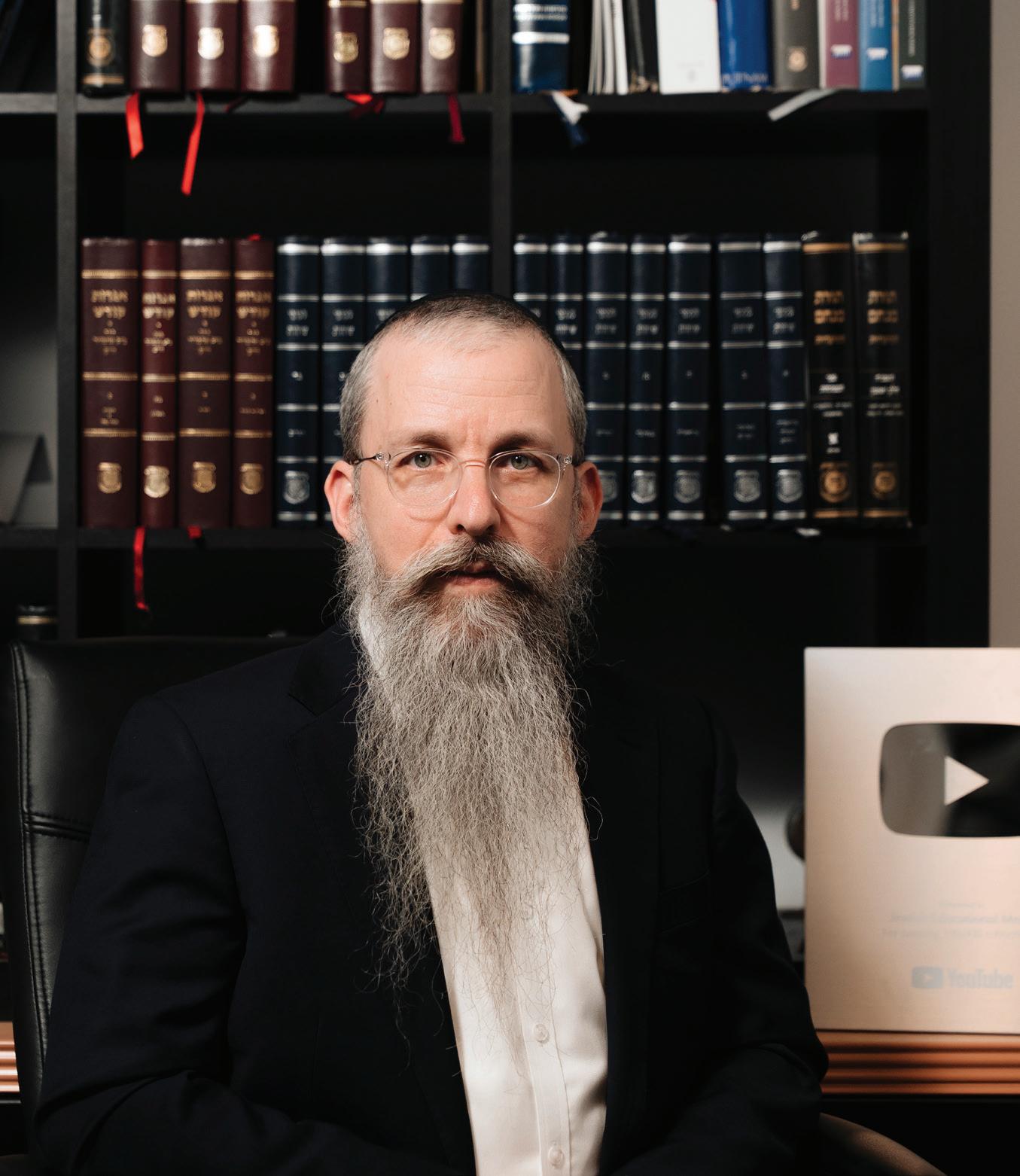
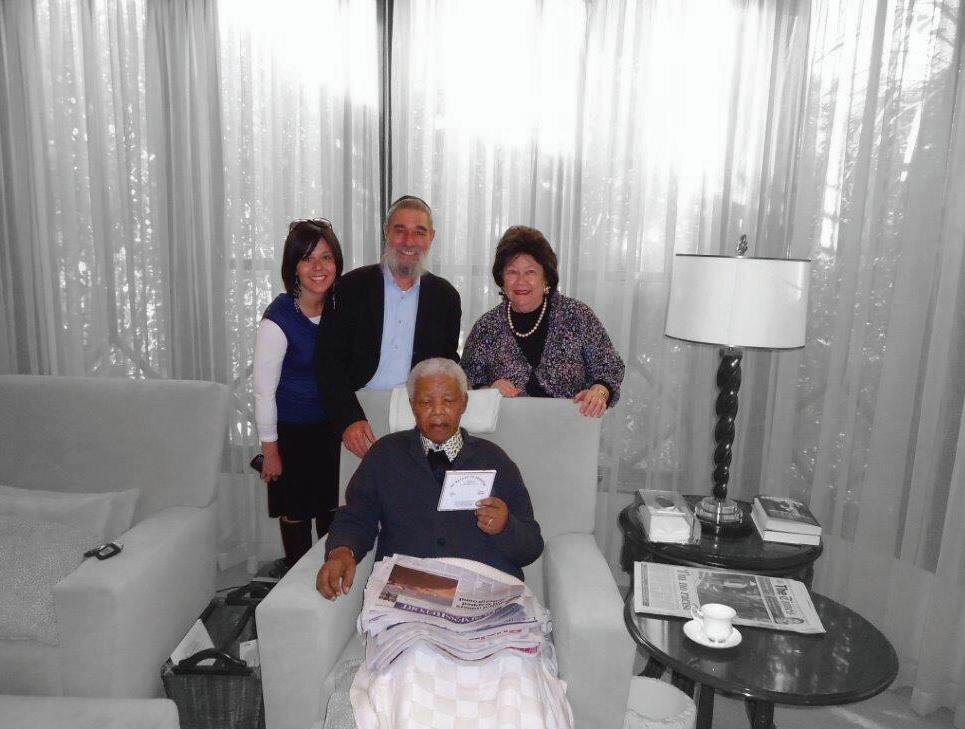
7 8 10 12 22
30
36
Our Greatest Priority
A letter from the Rebbe
From the Publisher
Editorial I Mica Soffer
Scenes from a Darker Year
Rabbi Yehuda Ceitlin
Truth with Strength
Mendel Cohen
A Transformative Toothache
Mendy Wineberg
Fighting For Peace
Avraham Reinitz
Chassidus in Color
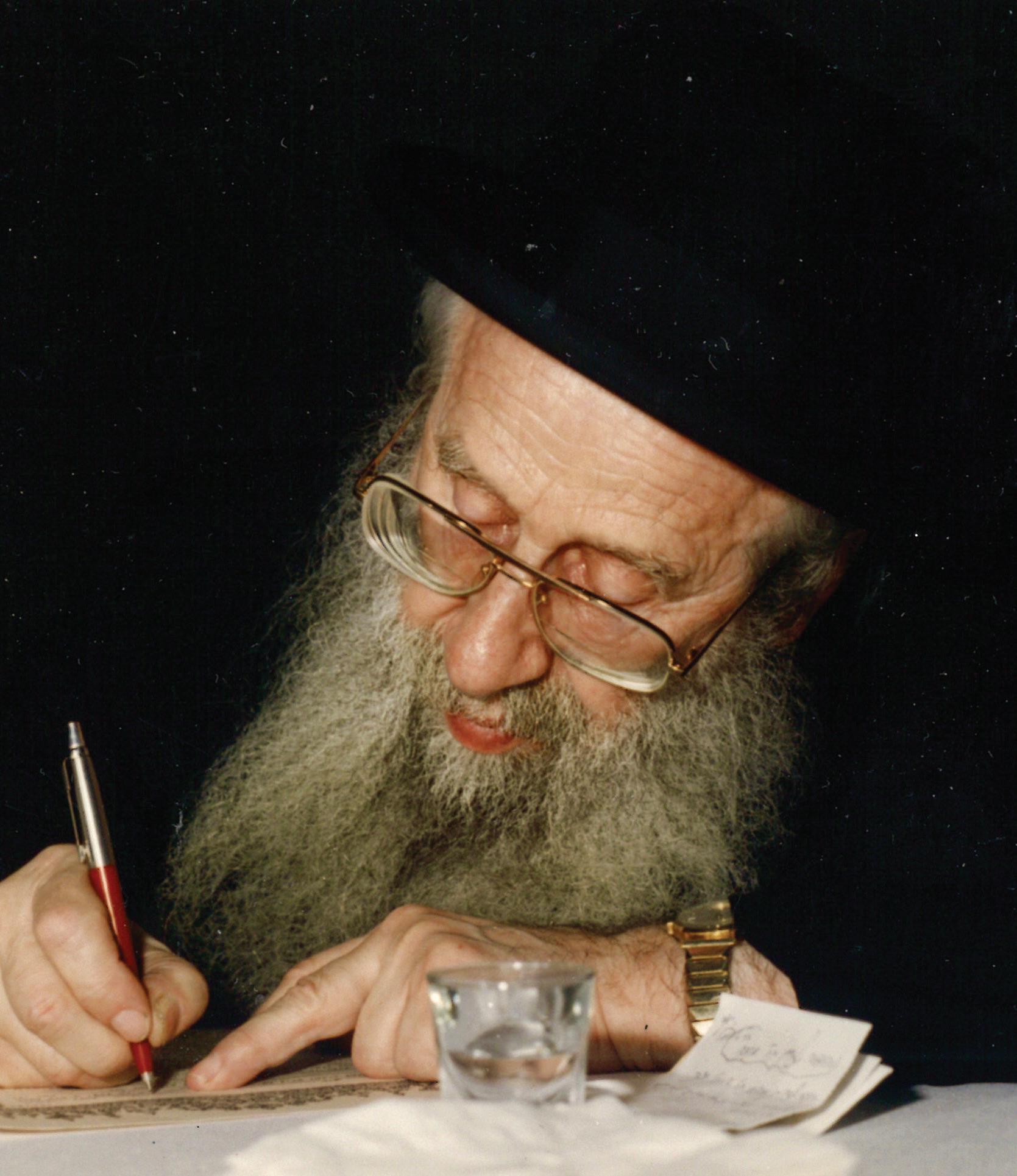
A Rebbe For All
Chinuch Matters
Bayla Rutman - MEF
Kids Korner
Fun I Sari Kopitnikoff
History’s Heroes
Activity I Parsha Studio
Summer Salads
Food I Sruly Meyer
Letter in Mind
Story / Asharon Baltazar
Smart Appliances
Humor I Mordechai Schmutter
President Street Then & Now I Shmuel Blesofsky
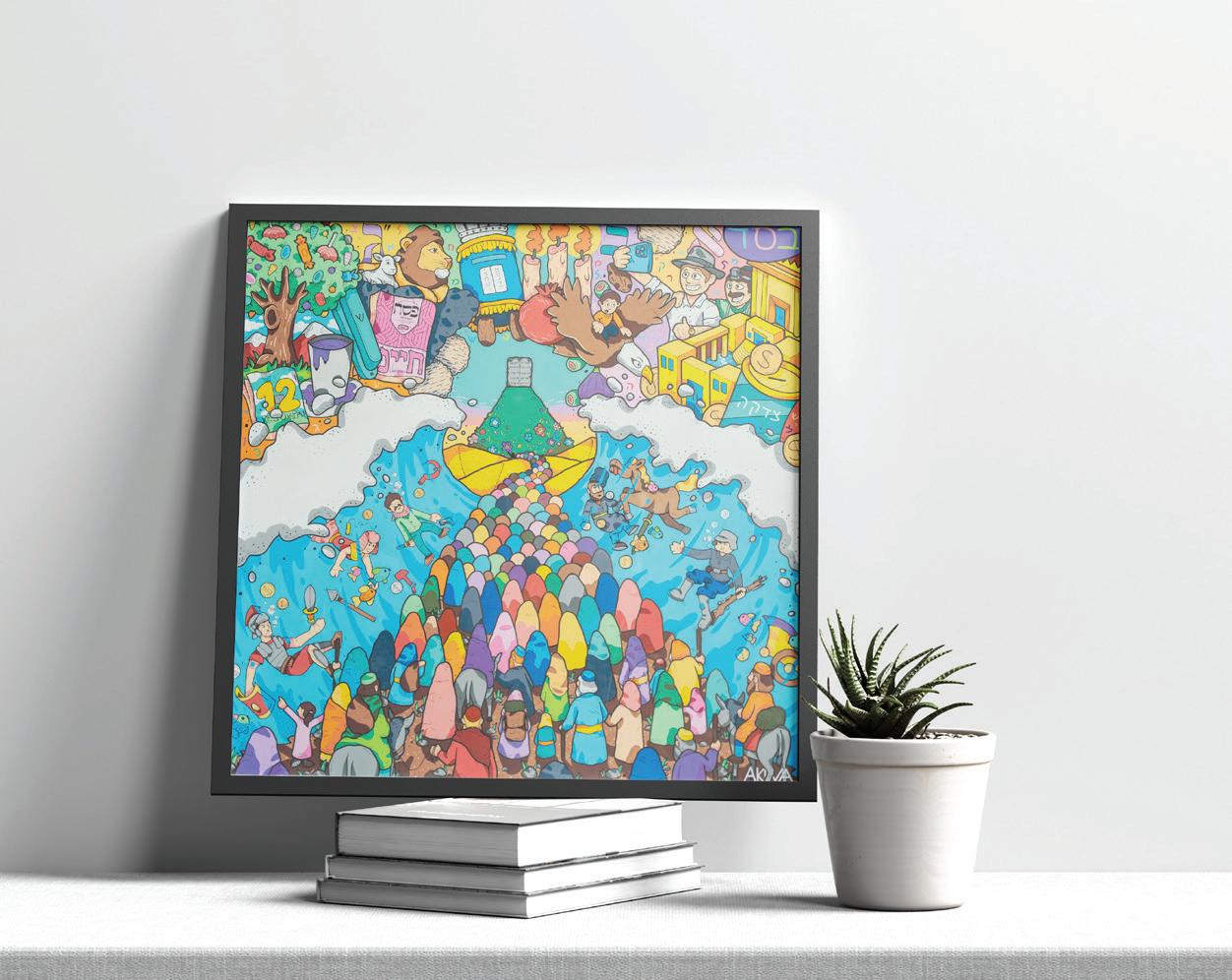
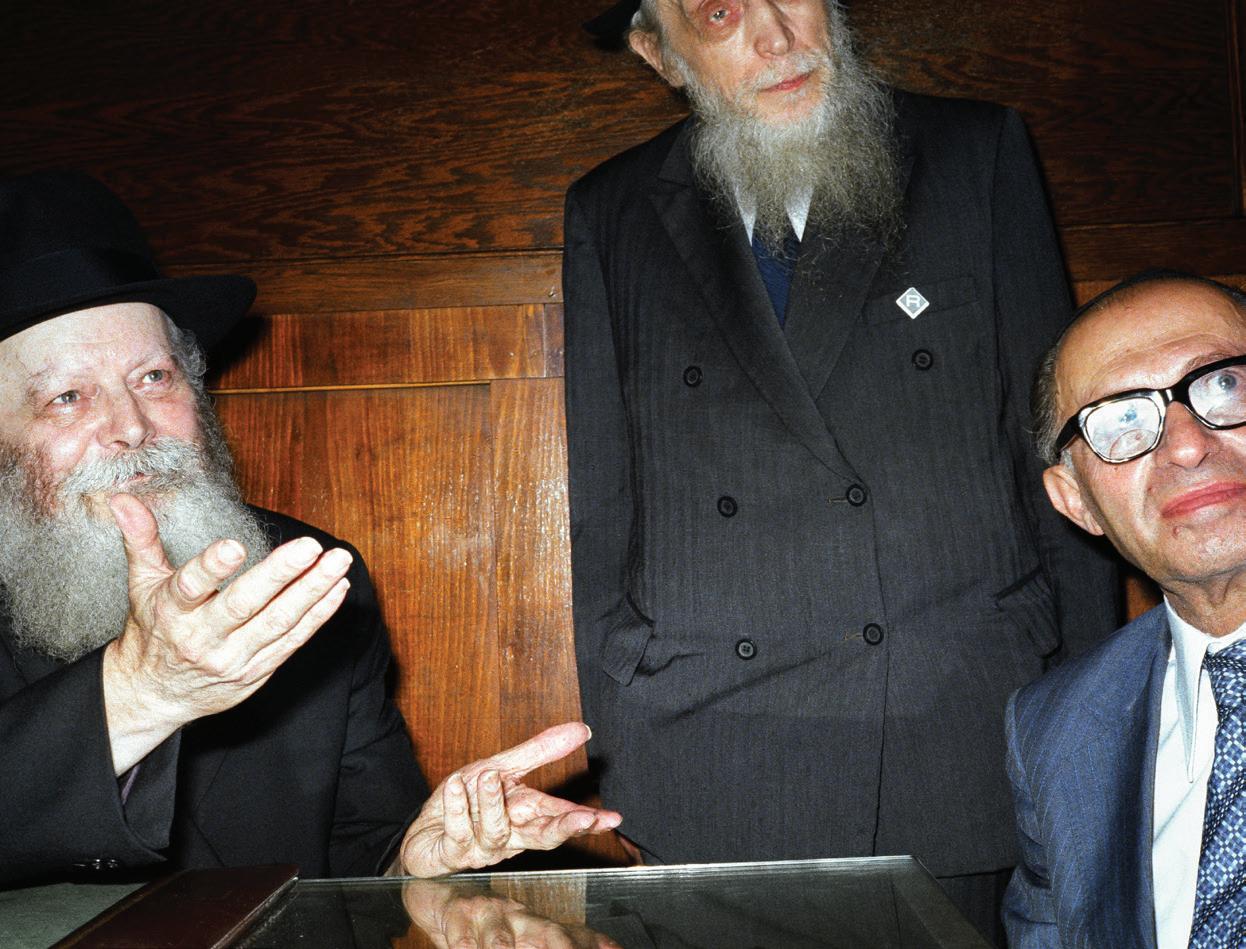


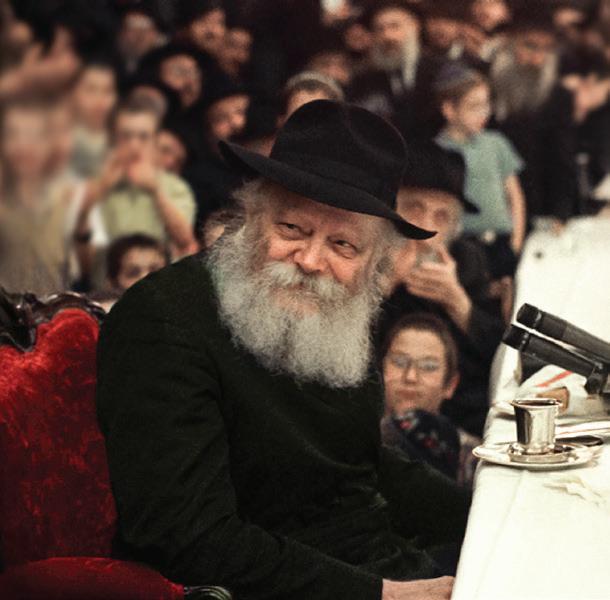
13 Kislev, 5723
December 10, 1962
Brooklyn, N.Y.
Greeting and Blessing:
Everyone is responsible to heed the cry of our fellow Jews
Malchus
I was pleased to receive the news of your forthcoming Dinner on the 20th of Kislev, the day after the historic Day of Liberation of the Alter Rebbe, Rabbi Shneur Zalman, author of the Tanya and Shulchan Aruch and founder of Chabad.
It is both timely and meaningful to recall the following episode from his life and teachings:
The Alter Rebbe shared his house with his oldest married son, Rabbi Dov Ber (who later succeeded him as the Mitteler Rebbe). Rabbi Dov Ber was known for his unusual power of concentration. Once, when Rabbi Dov Ber was engrossed in learning, his baby, sleeping in its cradle nearby, fell out and began to cry. The infant’s father did not hear the baby’s cries. But the infant’s grandfather, the Alter Rebbe, also engrossed in his studies in his room on the upper floor at the time, most certainly did. He interrupted his studies, went downstairs, picked the baby up, soothed it and replaced it in its cradle. Through all this, Rabbi Dov Ber remained quite oblivious.
Subsequently, the Alter Rebbe admonished his son: “No matter how engrossed one may be in the loftiest occupation, one must never remain insensitive to the cry of a child.”
This story has been transmitted to us from generation to generation; I heard it from my father-in-law of saintly memory. It was handed down because of the lasting message it conveys, one which is particularly pertinent to our time. It characterizes one of the basic tenets of the ChabadLubavitch movement—to hearken to the cry of our distressed Jewish children.
The “child” may be an infant in years, a Jewish boy or girl of school age, fallen from the “cradle” of Torah-true Jewish education, or it may be someone who is chronologically an adult yet an “infant” insofar as Jewish life is concerned, an infant in knowledge and experience of the Jewish religion, heritage and way of life.
The souls of these Jewish “children” cry out in anguish, for they live in a spiritual void, whether they are conscious of this or feel it only subconsciously. Every Jew, no matter how preoccupied he may be with any lofty cause, must hear the cries of these Jewish children. Bringing these Jewish children back to their Jewish cradle has priority over all else.
/Signed: Menachem Schneerson
Publisher
Mica Soffer
Editor
Rabbi Yehuda Ceitlin
Associate Editor
Mendy Wineberg
Contributing Writers
Asharon Baltazar
Shmuel Blesofsky
Sari Kopitnikoff
Sruly Meyer
Mordechai Schmutter
Design
Chana Tenenbaum
Cover
Photo: Shalom Burkis
Design: Mendel Shmotkin
Photo Credits
JEM/Living Archive
Special Thanks
Kfar Chabad Magazine
ADVERTISING
ads@COLlive.com
718-427-2174 ext. 2
EDITORIAL INQUIRIES OR SUBMISSIONS
Editor@COLlive.com
718-427-2174 ext. 1
SUBSCRIPTION
To receive a printed copy of the magazine (U.S. addresses only): COLlive.com/magazine
COLlive Magazine is published in print and online periodically by the COLlive Media Group Inc. and is distributed across the United States. COLlive does not endorse any products or services reported about or advertised in COLlive Magazine unless specifically noted. The acceptance of advertising in COLlive Magazine does not constitute a recommendation, approval, or other representation of the quality of products or services or the credibility of any claims made by advertisers, including, but not limited to, the kashrus or advertised food products. The use of any products or services advertised in COLlive Magazine is solely at the user’s risk and COLlive accepts no responsibility or liability in connection therewith.
The Rebbe’s influence continues to transcend time, geography, and demographics. As chassidim, we see this clearly: in the diverse people who visit the Ohel, the endless stream of seforim being published, the institutions constantly being built, and the fulfillment of the Rebbe’s prophetic words.
The Rebbe is with us—yatir mibechayohi, more than during his lifetime, as the Tanya teaches.
While this is evident in many areas, I’d like to highlight one that’s not often discussed: the Rebbe’s continued impact on public affairs and policy - even 31 years after Gimmel Tammuz.
Take, for example, the current race for mayor of New York City. Interestingly, the leading candidates from each major party—Democratic, Republican, and Independent—all share a connection with the Rebbe. Remarkably, none of them are Jewish.
Former Governor Andrew Cuomo recently told COLlive about his earliest memory of visiting Crown Heights with his father, then-Governor Mario Cuomo. “My father loved the Rebbe,” he recalled. “When my father came to visit, the Rebbe told him, ‘Double effort leads to double success.’” Reflecting on his own candidacy, Cuomo added, “I will certainly put in the double effort.”
Incumbent Mayor Eric Adams, who began his rise in politics representing Crown Heights in the State Senate, is known for visiting the Ohel regularly, even without notifying his staff. “When we face difficult times, we go to spiritual leaders for blessings,” he once said. “It’s a connection between the natural and the spiritual.”
Republican candidate Curtis Sliwa received a dollar from the Rebbe after bringing his Guardian Angels group to help patrol Crown Heights following the 1991 riots. Years later, when he lost that dollar, a kind chossid gifted him another—something Sliwa treasures deeply.
Who will win this election remains to be seen. But what is clear is that the Rebbe’s reach continues to shape and influence the public sphere.
We see the same in global affairs. As detailed in our cover story, the current Israel-Iran conflict is another example. The very fact that Israel initiated a preemptive strike aligns with the Rebbe’s long-held approach to national security.
As Rabbi Elkanah Shmotkin of JEM notes, “The hope now is for Israel to carry through the objectives of the battle—all the way,” echoing the Rebbe’s emphatic call for decisive and complete action.
On this Gimmel Tammuz, we daven not only for ourselves but also for the safety and security of Eretz Yisroel. May we soon be reunited with the Rebbe and merit the ultimate peace of the Geulah.
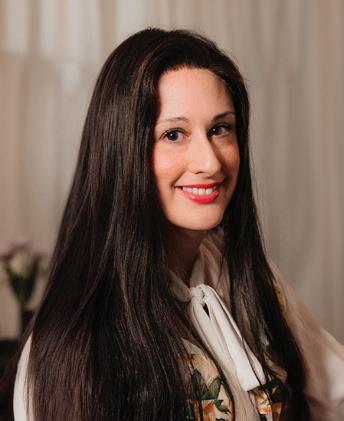
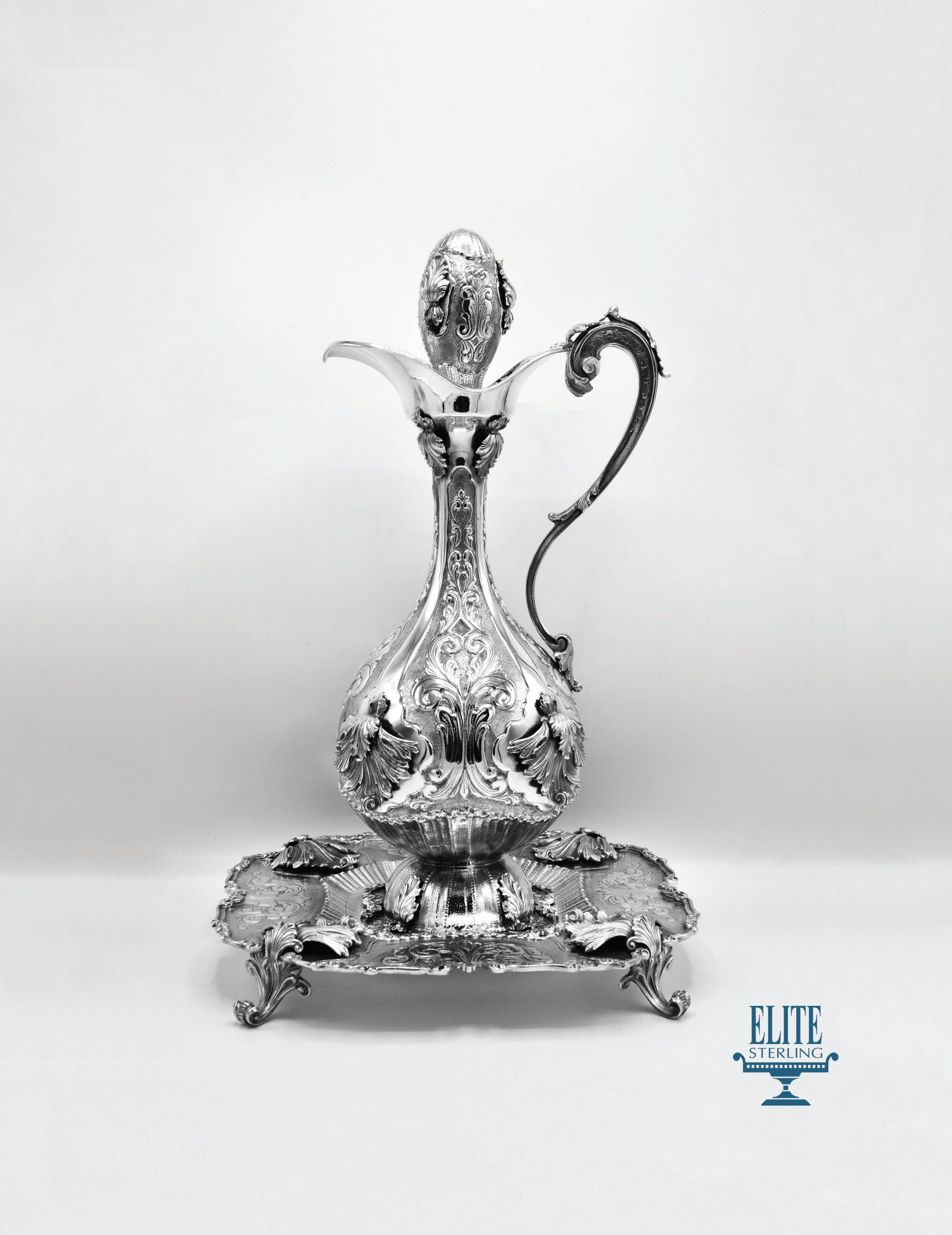
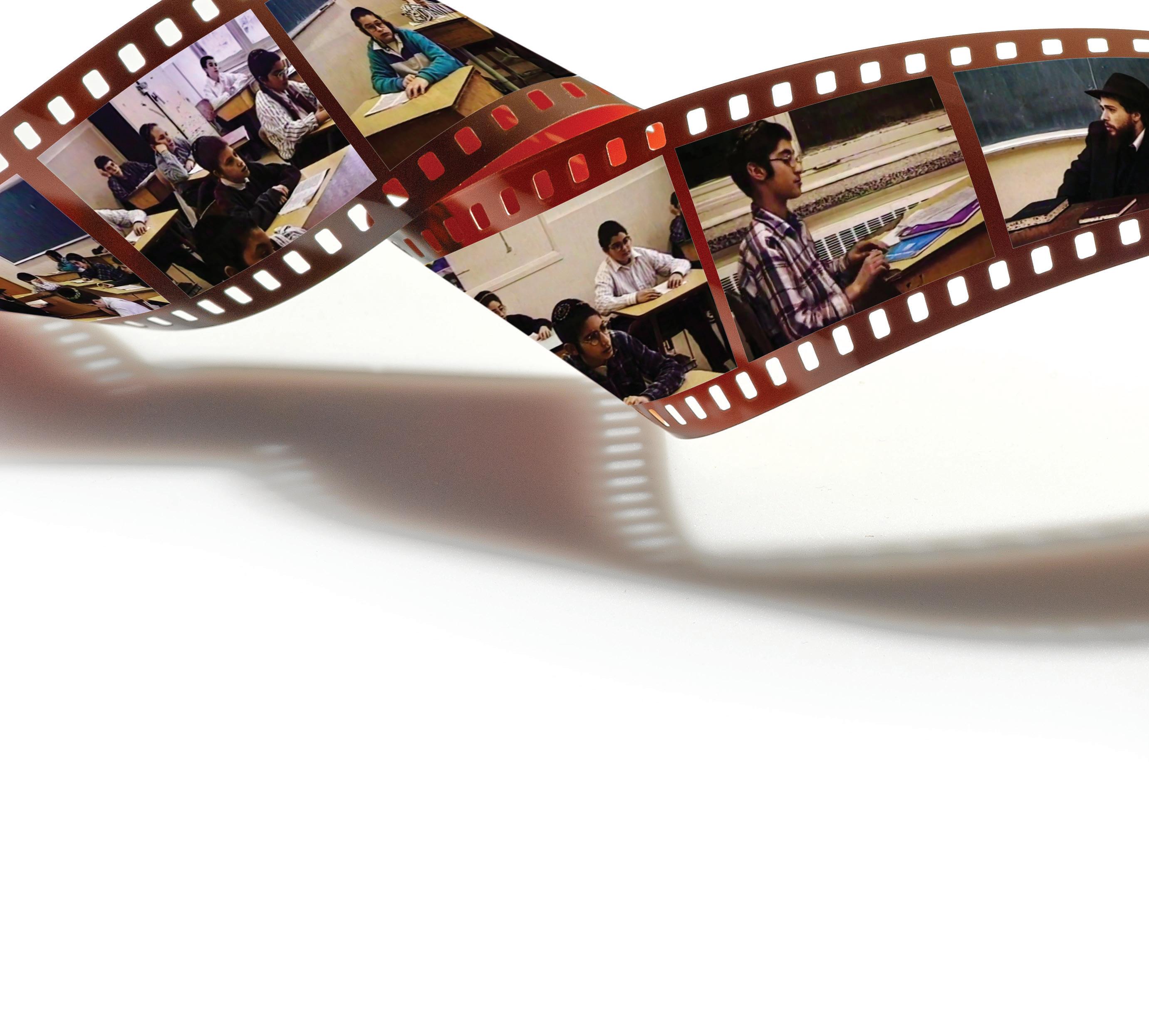
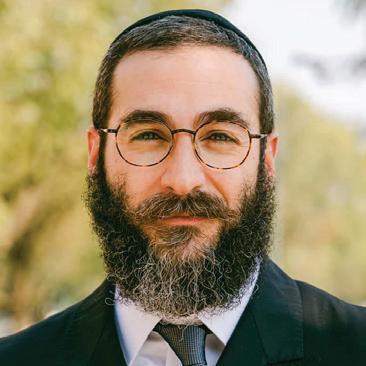
In 5755 (1995), our elementary school class at the Rabbinical College of Canada—Yeshiva Tomchei Tmimim Lubavitch in Montreal received an exciting offer: we would appear in an independent video production. We didn’t know much about the details, but it was a welcome distraction during a difficult time.
Gimmel Tammuz had occurred the previous summer, and the Jewish world was in mourning. Living in the post-Holocaust generation, the Rebbe had breathed vitality into Jewish life. He inspired Jewish people to embrace their faith and urged non-Jews to uphold the Seven Noahide Laws for a better society.
He demanded more of his Chassidim. In his first official maamar, Bosi Legani, the Rebbe
spoke of collective responsibility and called upon his followers to become leaders. He dispatched the best and brightest to guide Jewish communities around the globe. By 5754 (1994), more than 1,200 Shluchim and Shluchos were serving worldwide.
When Gimmel Tammuz came, it wasn’t obvious that any of this would continue. The Rebbe was a spiritual mentor to many and some saw him as a father figure. He lit the way when things were dark and spread hope when it seemed all was lost. With his physical passing, it felt like Chabad itself could be lost.
One response came from a group of Yeshiva students in Kfar Chabad, Israel, who decided to produce a film that would confront our despair and offer a path
forward. They titled it The Faithful Shepherd, and because our teacher was friends with the group, our class in Canada was invited to participate.
We were told we’d play a fictional class in Crown Heights, disrupted by a single student who had lost interest in his studies. This “troublemaker” would arrive late, ignore rules, and distract others during lessons.
I was cast in that role— unsurprisingly, for those who knew me. Before filming began, I even went to a speech coach to help deliver my lines. The unruly behavior didn’t require much acting; it was practically second nature at the time.
In the film, the teacher—played by Noam Wagner, now Rosh Yeshiva
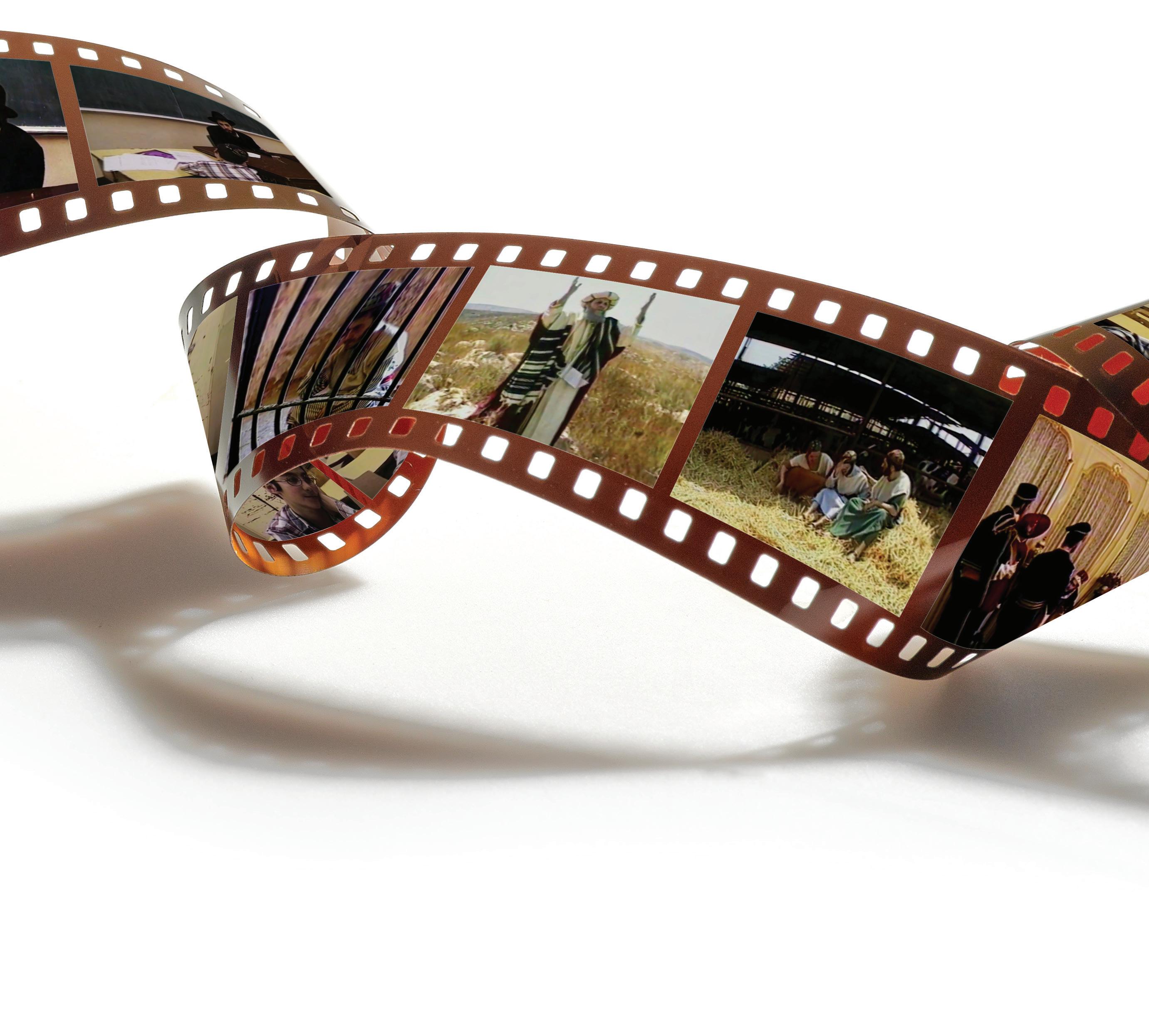
of Yeshiva Gedolah Lubavitch
South Africa—asks about my behavior. “What’s happening to you?” he says. “You were always a good student.”
“Everything is different now,” my character replies. He says the Rebbe had inspired him to become a better person, but since Gimmel Tammuz, “What difference does it make?”
The teacher shares a parable. The script, written by Yochanan Rivkin as a summer camp play (with the now-renowned lecturer Rabbi YY Jacobson playing the lead role), was adapted for film by Mendy Chanin and Shimmy Weinbaum as they learned in Kfar Chabad.
It tells of Chacham Moshe, a beloved Jewish leader who is framed for theft by two jealous
ministers. After planting the king’s treasure in his home, the ministers provoke a royal decree: either he will be executed or the Jews will be expelled.
But just before this, Chacham Moshe mysteriously disappears. Before departing, he urges his students to live with joy and unity as if the Redemption were already here. He assured them they have the strength to endure. “I will always be with you in your difficult times,” he says, “but it’s in your hands now.” Though the students face imprisonment and hardship, they expose the plot and ultimately bring salvation.
My character hears the message—that darkness often precedes light—and decides to change course. He becomes
serious about life and resolves to stay grounded, even after graduating and not having his teacher’s daily guidance.
Unlike my character, it took me years to internalize that message. But it now shapes how I view difficult moments. It’s the same mindset that the people of Israel are adopting in their battle against the evil Iranian regime. Their homes and hospitals are under attack, but they’re in this for the long run, believing better days lie ahead. As the popular Israeli saying goes, the eternal nation is not afraid of a long journey.
Rabbi Yehuda Ceitlin, Editor of COLlive. com and COLlive Magazine, is the Associate Rabbi of Chabad Tucson-Young Israel in Tucson, Arizona. He coordinates the annual Yarchei Kallah gathering of Chabad Rabbonim and Roshei Yeshiva
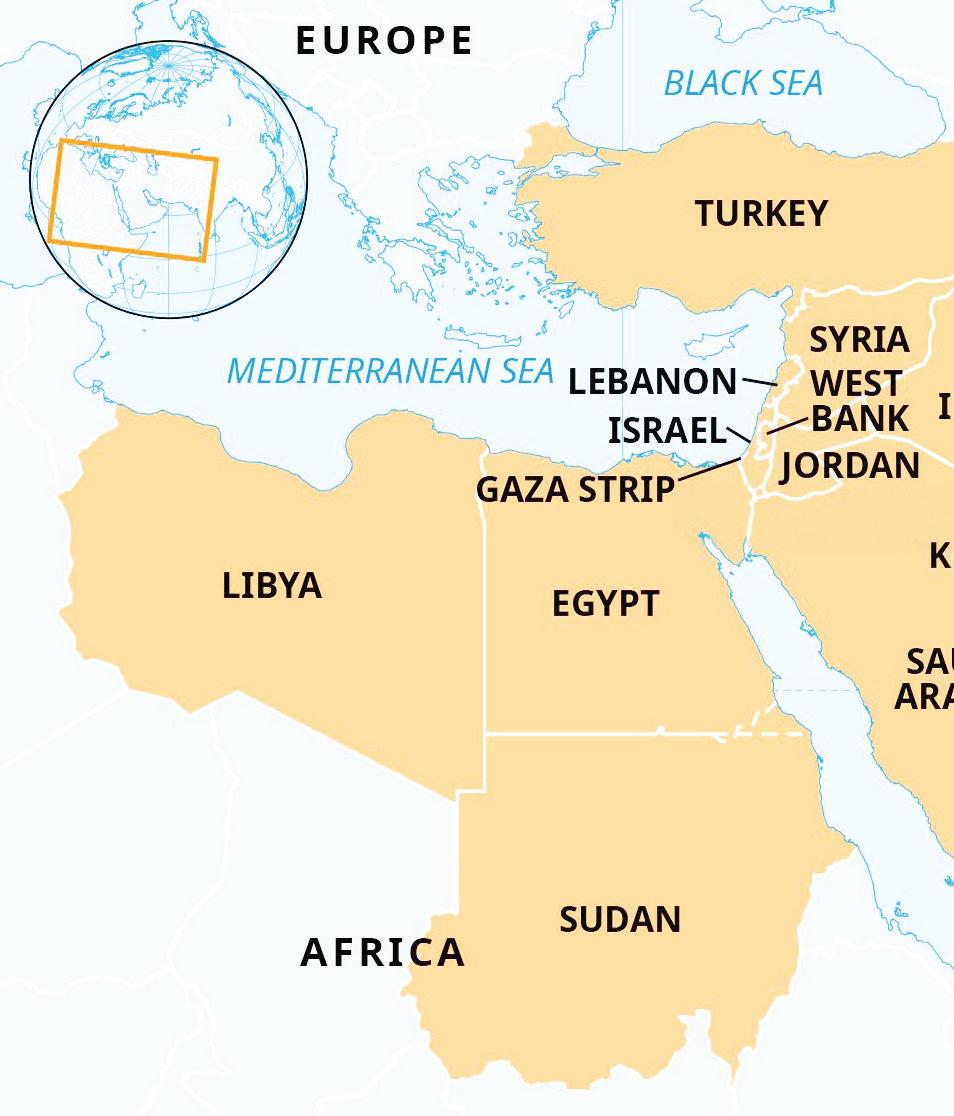
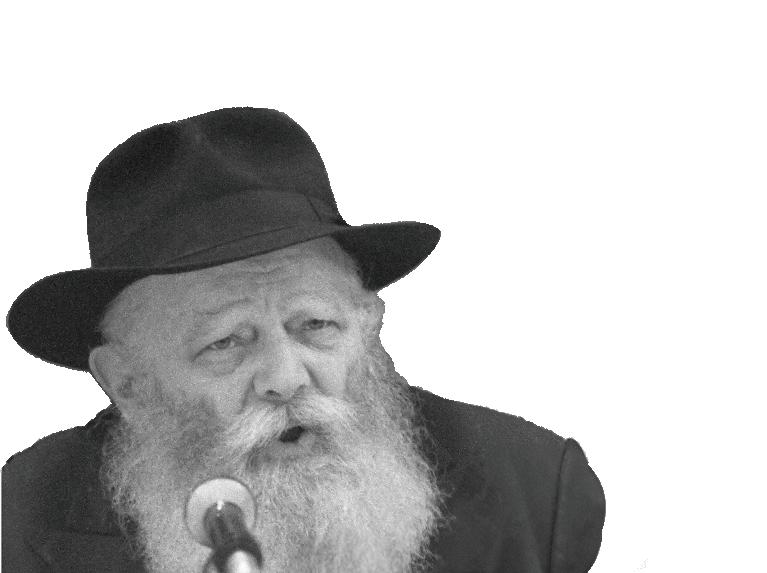


By Mendel Cohen
How the Rebbe's views on Eretz Yisroel are shaping policy
In the aftermath of the tragedies of October 7th, 2023, a surge of energy and urgency spread throughout the Chabad world. Lubavitchers around the world and Shluchim leading communities were eager to defend and speak out on behalf of their brethren in Israel. But as Rabbi Elkanah Shmotkin, director of Jewish Educational Media (JEM), explains, it was clear that in order to amplify the Torah’s approach as articulated by the Rebbe, a simple, clear rendering of the Rebbe’s guidance would be needed.
In the weeks that followed, lines of argument took shape online, and he noticed that some well-meaning efforts lacked accuracy, leading to confusion about the Rebbe’s actual stance.
In order to bring greater clarity and consistency, Shmotkin spearheaded an initiative to carefully study and articulate the Rebbe’s views. Enduring Peace led to a series of initiatives, including a high-end video series, meetings with top Israeli officials, the launch of How Israel Wins—a JLI course for Chabad Houses—books, publications and high-level meetings, and the development of a growing library of videos of the Rebbe shared across social media and YouTube. These materials present the Rebbe’s message in a compelling, accessible way for people around the globe.
In this conversation, Shmotkin reflects on how the initiative came together and offers his thoughts on applying the Rebbe’s guidance to Israel’s broader challenges, including the current conflict with Iran.
Since October 7th, JEM has released a lot of material relating to the Rebbe’s stance on Israel’s security. Was this a new undertaking in light of the situation, or something you had been working on for a long time?
I’ve had a strong interest in the Rebbe’s positions on Israel for a very long time—over 30 years now. Since the beginning of my involvement in JEM, we have highlighted the Rebbe’s Sichos on Israel, interviewed people from Israel’s government, military, and other sectors, and we’ve produced numerous videos featuring the Rebbe’s approach, including films like Peace Upon the Land and the Faithful and Fortified series. Through all these projects, we’ve always had a sensitivity to what wider audiences are able to handle.
That restraint really came from the Rebbe. The Rebbe himself said that certain sichos were too sharp for the wider world to hear. There's even a story where someone played a recording of one such sicha in the Knesset, and the Rebbe was unhappy about it.
So what changed after October 7th?
On October 7th, we began hearing the news of what was going on in Israel. The reports were shocking. I realized fairly quickly that the magnitude of the tragedy was changing people’s thinking in a fundamental way, and that they would now be ready to hear things that they simply wouldn’t accept before.
Within weeks, it also became clear from reading social media posts, that something needed to be done. Wellintentioned shluchim and members of the Chabad community were
trying to assuage their communities, co-workers, and acquaintances and defend Israel’s actions, but, in more than a few cases, they were saying things diametrically opposed to the Rebbe’s views. I’m sure the mistakes were made unknowingly, but they were painful to see.
I recognized that there was a fundamental need to study and understand Torah’s views on Israel’s security, as articulated by the Rebbe, in a deeper way—in simple words that would allow every Shliach to share with their community, and every Jew to share it with another.
How did you go about researching and compiling the material?
The day after October 7th, I began to ask around, trying to identify other individuals who were deeply familiar with the Rebbe’s views on Israel and its security. Together, we formed a think tank of sorts, a “dream team” of young Shluchim. As well, we pulled together a group of very talented individuals, a devoted team was hired within JEM, to work on the project. I want to make special note of Rabbi Levik Korf, who was the first to join me, only several weeks after October 7. We built on work that had been done by JEM in the past, as well as material that had been published by others, such as Rabbi Wolpe in his sefer Daas Torah, which was published in the 1980s.
The goal was to get to the core ideas, and to articulate the Rebbe’s teachings in a way that’s logical, digestible, and actionable.
The Rebbe really appreciated this type of methodical approach. When his mother, Rebbetzin Chana, passed
away in 5725 (1964), he introduced a revolutionary approach to Rashi, spread across hundreds of sichos. Eventually, one individual studied, compiled and organized over 200 foundational rules from those sichos, and the Rebbe was very pleased and highly appreciative of the outcome. We applied the same principle here. When someone listens to an individual sicha about Israel’s security, the person might feel passionate about the issue, but he won’t really know what to do right now, or how the specifics of that talk lead to the solution for today’s problem. But when you extract the core points, the guiding principles, it becomes something people can absorb, apply, and act on. Eventually, we were able to understand and present the Rebbe’s approach as a simple framework.
The group dynamic—the thousands of hours of study, argument, and iterations—resulted in an elegant system that can be studied, taught, and shared.
You mentioned that early on, people—shluchim even—were putting out messages that clashed with the Rebbe’s views. Can you give some examples?
One example is victimhood. People sharing horrible graphic images, alongside messages, hoping to elicit sympathy for Israel, by showing how the enemy are barbarians. The Rebbe was very clear: this doesn’t work. Israel’s claims of legitimacy are far deeper than the victimhood.
Far worse, though. The Rebbe explains that claiming Israel’s rights by pointing to how evil the bad guys
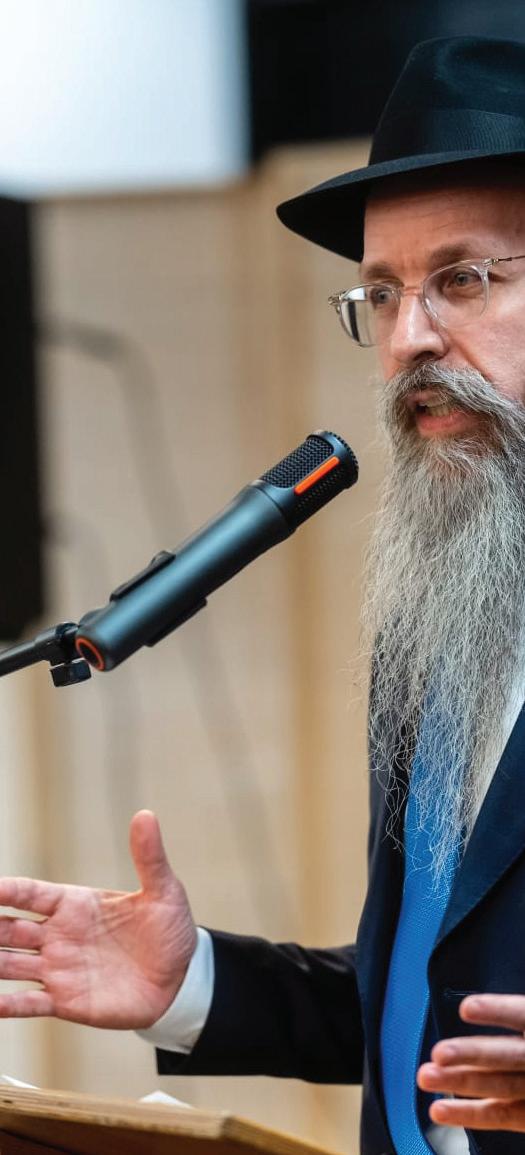
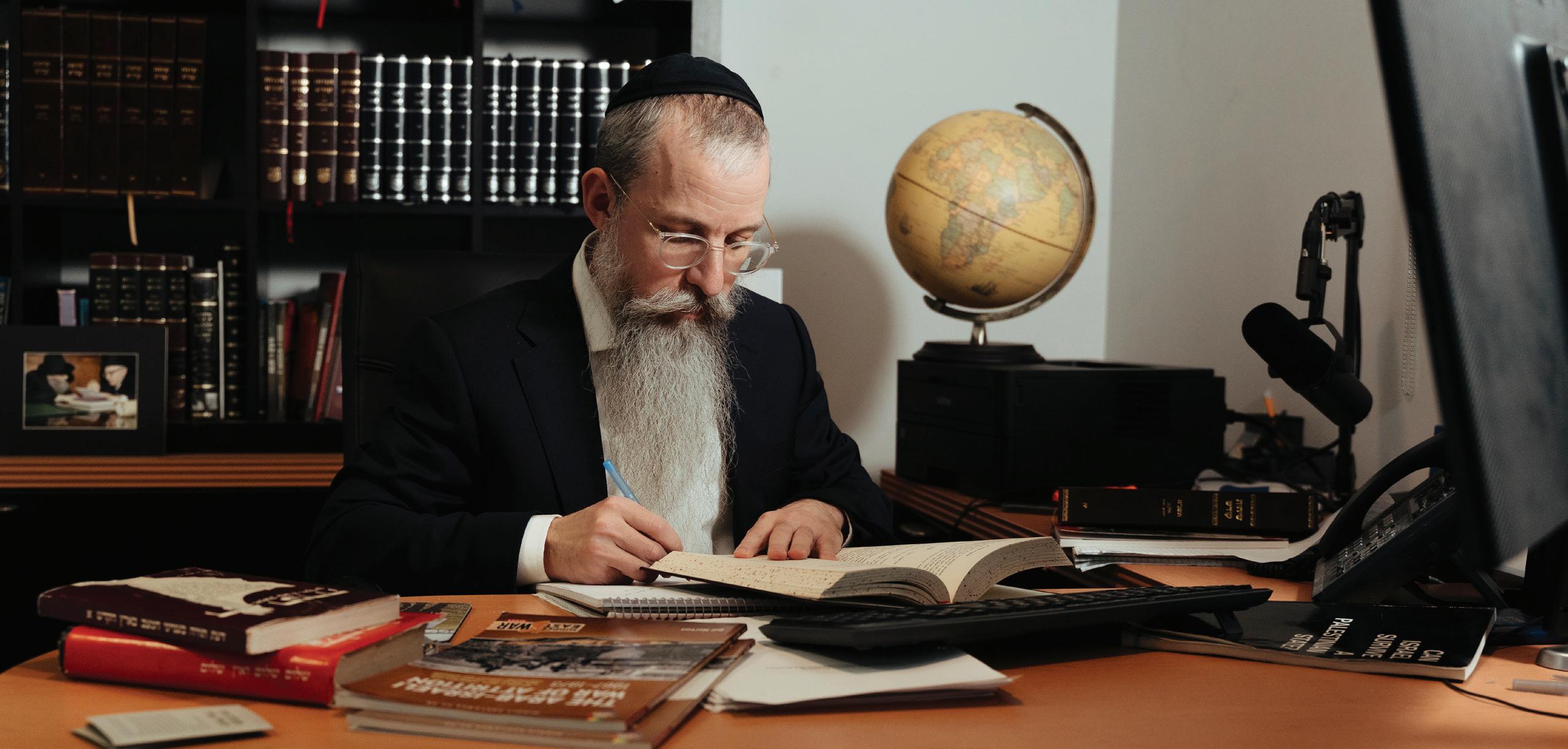
are, or by pointing to UN resolution this-or-that, actually spawns more terrorism.
There’s only one explanation that will work, the Rebbe says, and it’s recorded in the Bible. The Jewish people’s connection with Israel is very simple: G-d gifted it to us.
Another example is the issue of the hostages, which, of course, is extremely sensitive. There are ways to prosecute warfare that have been proven successful, and others that do not work. I’m sure they were wellintentioned, but individuals were out there on social media calling for actions that we know—based on Torah principles and precedents highlighted by the Rebbe—will result in prolonging the hostages’ horrible captivity.
Good intentions were leading to messaging that contradicts Torah’s guidance.
But it has always been clear to me that it’s simply a matter of education. The Rebbe has an army of devoted amplifiers, and it extends way beyond Lubavitch. It’s just that someone
needs to step up, study, clarify, and then teach the song.
A close friend recently asked me, “Why are you preaching to the choir?” I explained that the choir first needs to have notes to read from. Our starting point is to simply get the Rebbe’s opinions straight. Then we can all sing the right song, and then we can amplify it.
Was there anything that jumped out at you as you researched the topic?
The Rebbe’s compassion for every human being comes through very strongly. Here’s an example: When discussing the 1982 Sabra and Shatila massacre—where Israel was unfairly blamed for the murder of Christian Arabs in Lebanon by other Arabs— the Rebbe expressed deep anguish that hundreds of people had been killed. The Rebbe’s position is always grounded in Torah’s values and teachings.
This is a very important distinction that people often miss. The Rebbe is not a right-wing talk show host, G-d forbid. The Rebbe is projecting Torah’s views, and Torah is
compassionate toward every human being. This sometimes expresses itself in interesting and unexpected ways.
What was the result of the research you did?
The landscape is entirely different today. Shluchim and anash are far better educated, and the Rebbe’s clarity is reaching ever-wider circles of Klal Yisrael.
We’ve published many videos on social media and YouTube geared toward varied audiences. The think tank has spawned a lot of publishing—books, articles and lectures.
JEM and the other think tank members have responded to hundreds of incoming inquiries; some of them from very high-level people. We’ve curated clips for hundreds of events and meetings.
The Rebbe’s Roadmap to Peace is a high-end series on YouTube that we’re in middle of producing. It lays out the fundamentals basics in an organized way.
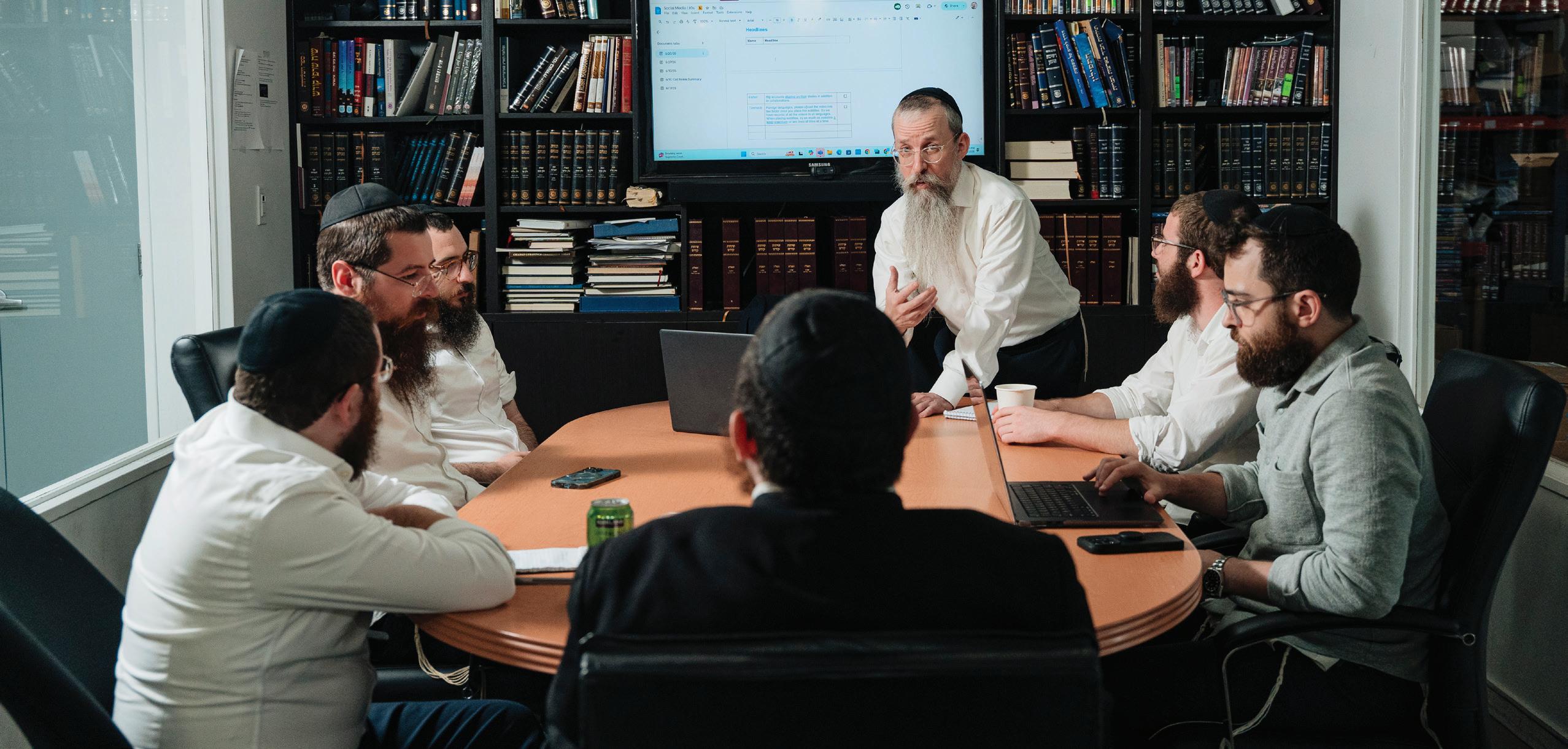
In a unique collaboration with JLI (Jewish Learning Institute), we produced a course called “How Israel Wins - The Rebbe’s Vision for Achieving Lasting Peace.” That course was significant—it gave over 300 shluchim and teachers the tools to articulate the Rebbe’s approach properly.
Rabbi Elisha Pearl, author of SIE’s “Make Peace” is a member of the think tank. His work both benefited from, and contributed to, the group’s collective knowledge.
Between the seminar, our team’s direct presentations to large audiences, podcasts, and talking points, hundreds of thousands have experienced a deep dive into the Rebbe’s—Torah’s— roadmap to peace.
Numerous Shluchim held briefings with senior officials of the US and other governments.
We’re about to launch the Enduring Peace Knowledge Base, a wiki-style project that allows individuals to dive deeper into the Rebbe’s teachings as applied during varied
circumstances. It builds off the tremendous amount of research and study we’ve been doing for the past eighteen months. It will also enable the thousands around the world who study the Rebbe’s teachings on Israel to contribute their knowledge to the wider public.
Every medium has its special advantages. The videos—ranging from the inspirational to intensely educational—have been viewed tens of millions of times, and they achieve something special. Through video, the soldier going into battle in Gaza and the community member in Denmark are both learning directly from the Rebbe himself. The experience of being inspired and taught directly by the Rebbe himself is transformative.
Have there been any indications that your efforts have influenced the Israeli government’s strategy during the war?
I think the full story of the Rebbe’s impact on the decisions made in the course of this conflict will need to be told in years to come, but I’ll say this: On more than one occasion, the
Rebbe’s guidance was presented to the top decision makers in the Prime Minister’s office, and was discussed in depth. Several in the small top circle—including the Prime Minister himself—met the Rebbe in person, so it’s not a hard sell.
We know of at least several pivotal points in the conflict where the course of action was directly influenced by the Rebbe’s words.
The night before one of Secretary Blinken’s first visits to Israel after October 7th, I had a phone call with a very senior Israeli official. I have known him for many years, and it was obvious that they didn’t feel they’d be able to stand up to the immense pressure that the United States was placing on them at the time. It was alarming to hear the duress in his voice. That night we curated a powerful clip of the Rebbe addressing this exact concern and released it on social media, making sure that it was viewed by the top decision makers. We can’t yet know for certain that it was the Rebbe’s words that gave them the fortitude to hold strong, but Israel did end up behaving very differently.
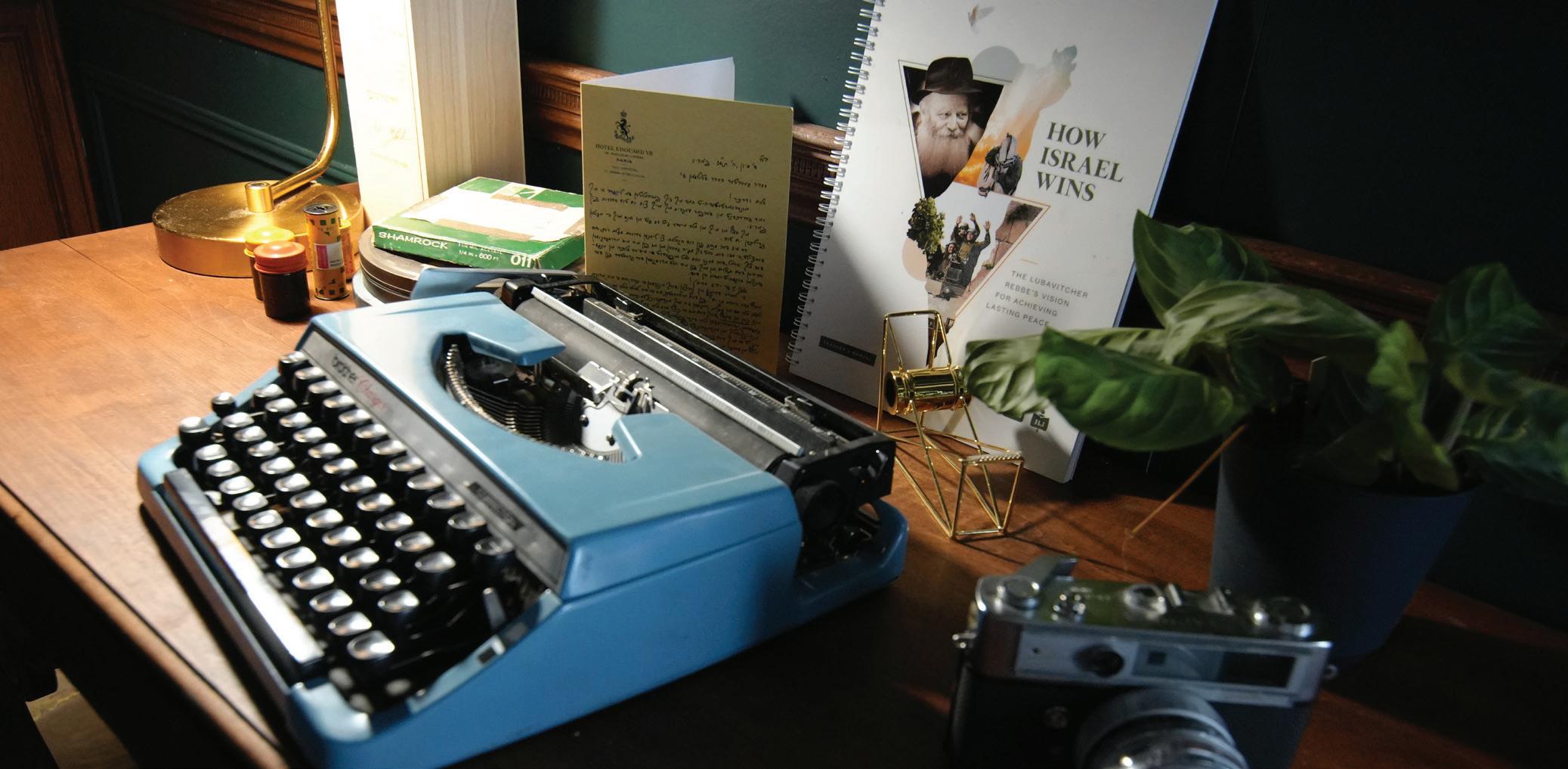
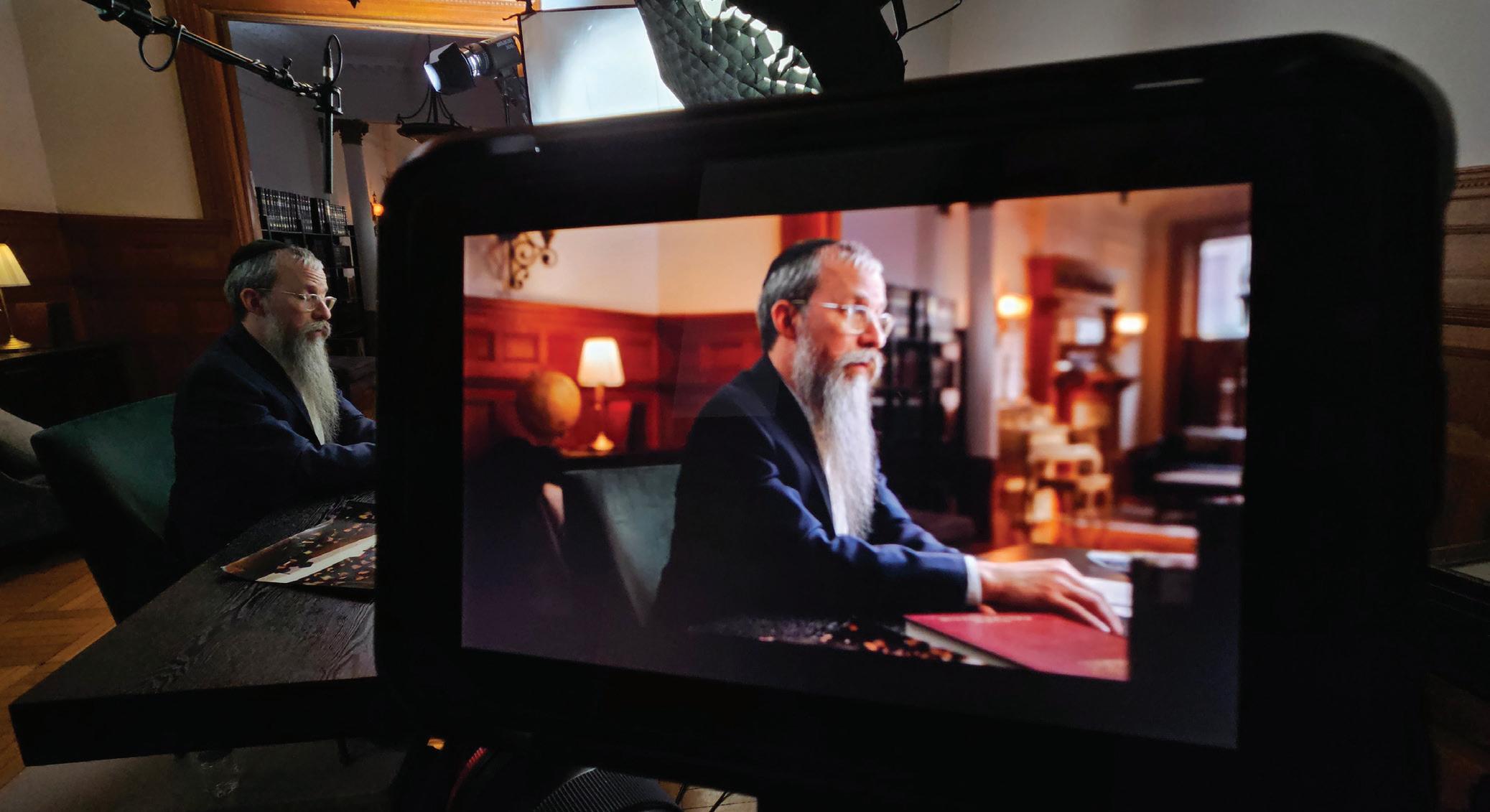
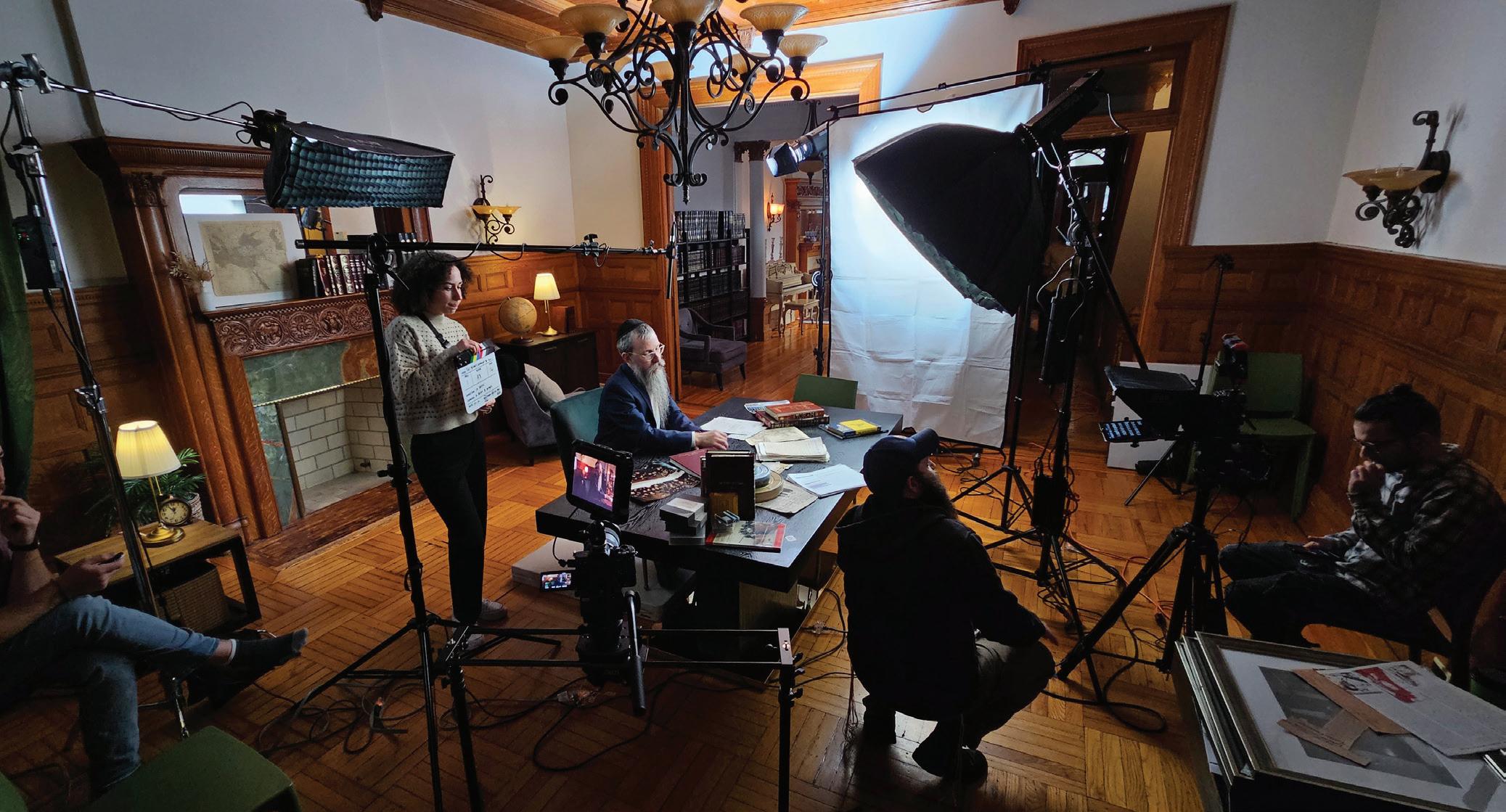
Scan the code to view a two part film that JEM produced on the Rebbe's vision for peace
Israel has now been at war for almost two years. In your opinion, has Israel’s conduct during this time aligned with the Rebbe’s views? They’ve done many things right— actions the Rebbe urged Israel to take on many occasions through the years. Here’s the “tell”: Over the past eighteen months, where Israel has seen victories and miraculous outcomes, it has been an almost 1:1 match to the formulas that Torah lays out.
There are a few very notable strategic gains that Israel has made during this period which the Rebbe had been calling for for decades. I think the Rebbe is quite pleased when Jews are winning. By the way, in the long run, it actually turns out better for the adversary, as well.
I must note that there are also a number of key areas where Israel has fallen short thus far, where they need to be reminded to be proud Jews, shake off the shackles of exile, and do what needs to be done.
The good news is that Torah’s solutions are logical, they’re simple, and they have worked every single time in history that they have been applied. So whenever the leadership is ready, they can apply them.
The Rebbe teaches us to always focus on the positive, so the fact that, for the most part, they’re holding very strong, that they haven’t folded under all of the intense pressures from the world, has been a welcome surprise to many.
The war has now shifted to Iran. How would the Rebbe want the Israeli government to conduct this war?
During conflicts, the Rebbe consistently urged Israel’s government to pursue the objectives of war until they are achieved, the threat has been neutralized, and a clear victory is in hand—and to do so as quickly as humanly possible.
And, focus on the day after. The conclusions of previous conflicts,
unfortunately, have all played out the same way: Israel conducts a successful military campaign, often making huge sacrifices in lives lost, and then domestic and international pressure begins. Rather than consolidating the positions gained after the win, a “ceasefire” is called and, somehow, Israel manages to squander the gains—either by handing back hard-won terrain that is essential its security, or by endangering its security in some other way—breaking through some diplomatic red line. After most conflicts, it has actually done both.
The best way to prevent further bloodshed is by making decisions based on security considerations alone, removing the danger entirely, seeing the war through to its end, and then not ceding whatever gains were achieved—neither on the battlefield, nor in the international arena.
Israel also needs to avoid the urge to over-explain its actions to the world. The Rebbe pointed out that such efforts invite further pressure from the international community. They quickly discern that Israel is begging for approval, coming from an inferiority complex.
I should note that the Rebbe’s guidance includes a very, very large body of material on how Israel should manage its relationship with the United States. This relationship has been vital for Israel’s security, and the Rebbe pointed to the trends: What works every time, what never works, and exactly how to handle the good times, as well as the rough patches. Israel has done many things right these past few months. G-d willing, this conflict will end soon, with Israel continuing to do things right. If they keep it up, we can finally experience security the way Torah is hoping we’ll choose to: a true and enduring peace. May Hashem watch over our brethren in Eretz Yisroel and keep them safe until the coming of Moshiach, may it be very soon!


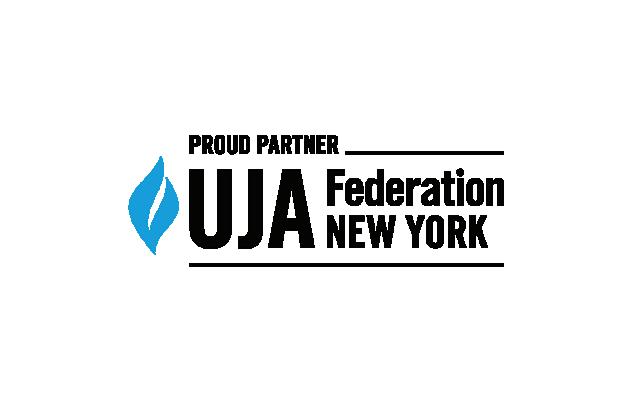





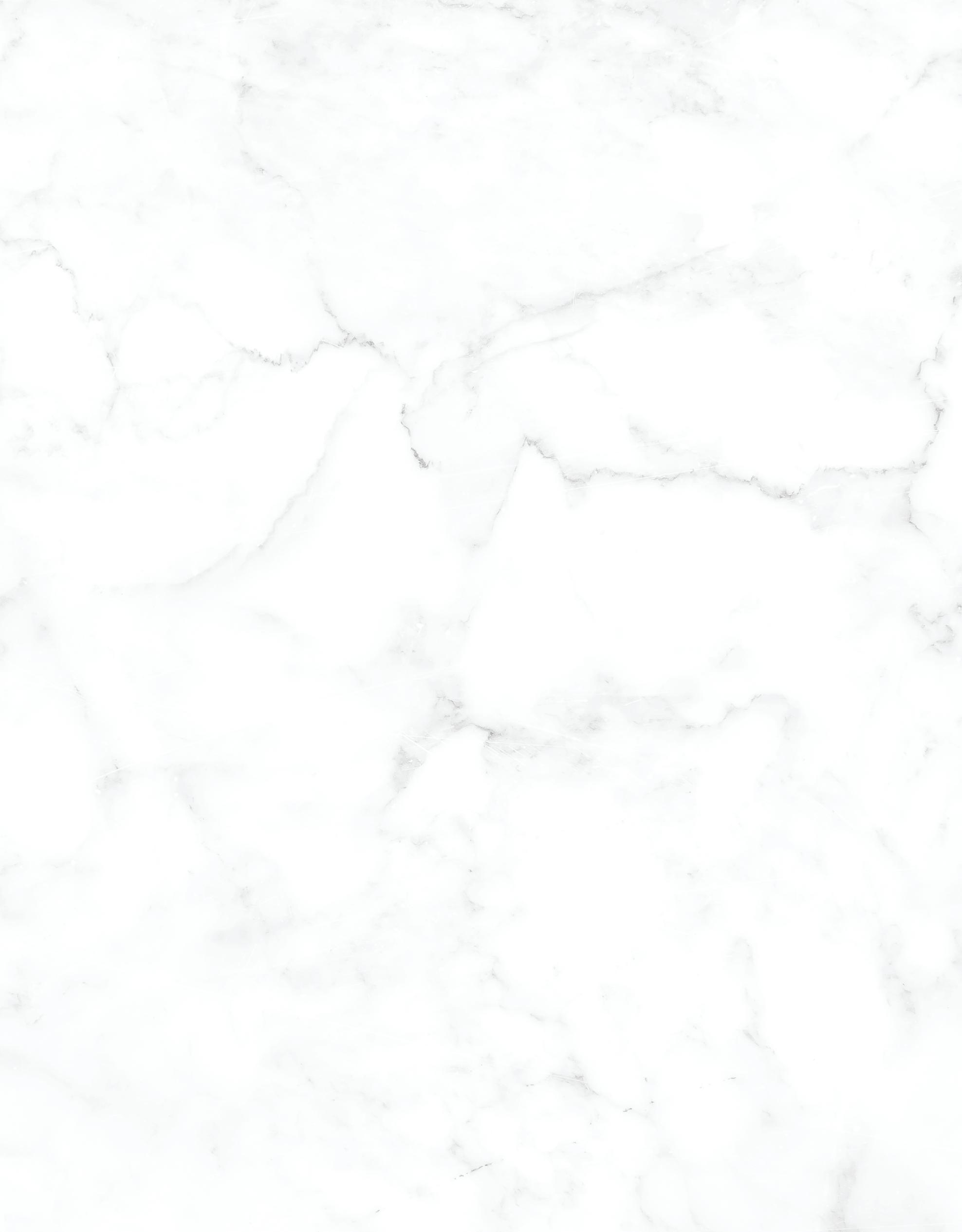













By Mendy Wineberg
Dr Michael Rudolph’s life, from dentistry to public health, was shaped by the Rebbe
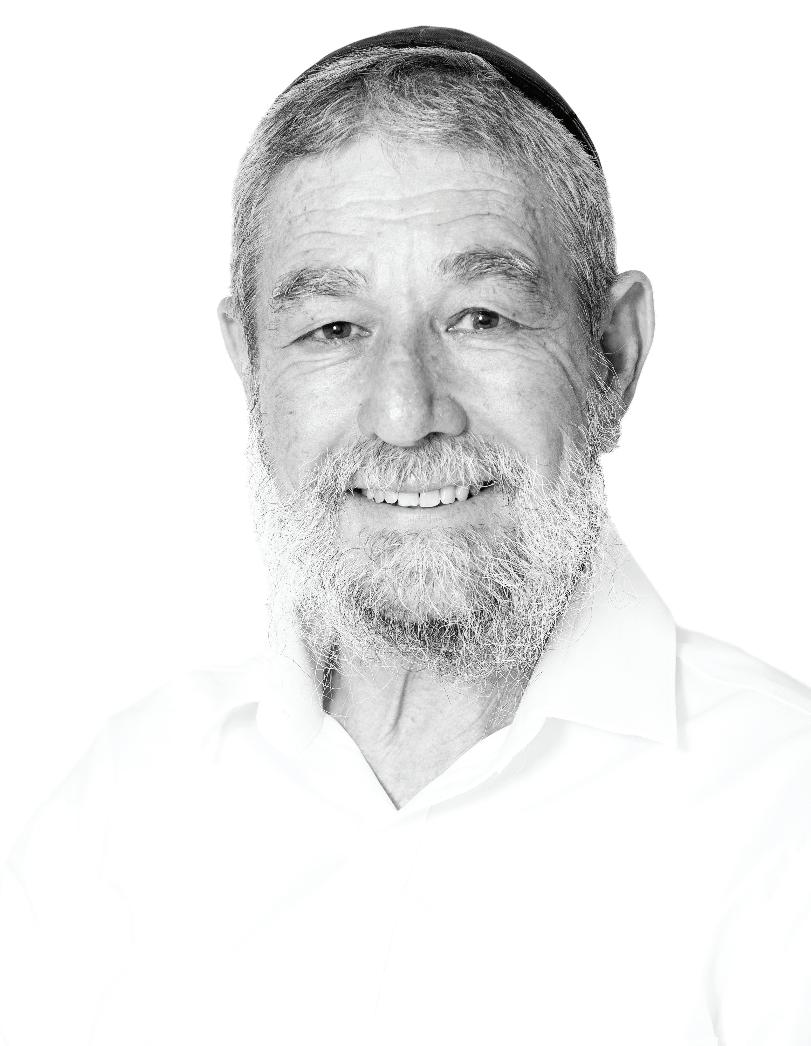
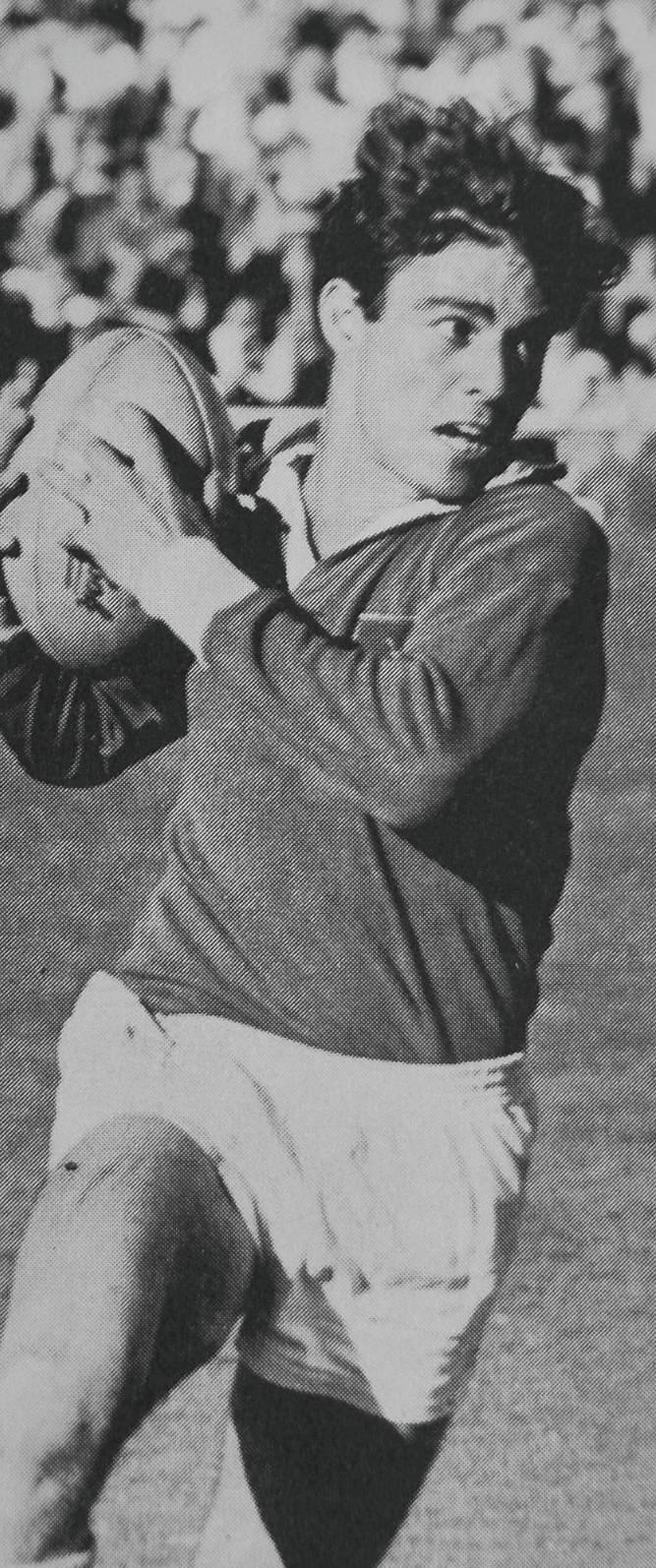
Professor Dr. Michael Rudolph was a young dentist in the mid-1970s, working hard to establish his new practice in the Savoy neighborhood of Johannesburg, South Africa. He wasn’t observant, but his patients included several adults and children from the then relatively small Chabad community. One morning, his secretary, Louise Rabin, informed him that a Chabad rabbi named Mendel Lipskar needed some dental care for a painful tooth, and Michael was happy to oblige. It would happily turn out to be a positive appointment for Rabbi Lipskar and his tooth, but more importantly, a life-changing interaction for the curious and soft-spoken young dentist.
“Rabbi Lipskar, although a bit nervous, as many patients are, retained his equilibrium and renowned charisma, and we began talking. Somehow, even with several dental instruments including a suction tube in his mouth, we still managed to have a meaningful conversation, which demonstrated his gift of the gab,” remembers Rudolph with a smile.
The visit ended with an invitation to the Lipskars’ home for a Shabbos meal where a packed dining room of guests were gathered. The energetic and warm Shabbos environment immediately put one at ease and the food was delicious. However, what moved Rudolph most was the deep and thought-provoking sicha of the Rebbe that Rabbi Lipskar shared. It was enough to entice him back the next week, this time for the Friday night service at the Harrow Road Shul. Soon, Rudolph was attending shul more regularly and his journey to become a frum Jew and a Lubavitcher chossid was well underway.
Michael Rudolph was born in Middelburg in 1946, a small town about two hours from Johannesburg. It was a popular place for travellers from the big city to stop and fill up their cars and to get a cup of coffee and rusks on their way to the Kruger National Game Park. The Rudolph home in Middelburg was well known for hosting many visitors over the years. There were only eighteen Jewish families in Middelburg, and young Michael attended the local cheder where he was taught by Reverend Abramowitz. He grew up in a traditional Jewish home where Kiddush was made on Friday nights and Pesach and the High Holidays were observed to some extent. Beyond that, Rudolph knew little about basic Jewish life and practice.
Michael’s family moved to Johannesburg a few years later, and Michael was enrolled in the prestigious King Edward VII School, known for its high academic standards

and competitive sports teams. He especially enjoyed the unity and camaraderie that accompanied a life in sports. He excelled at rugby, later playing for the successful University of Witwatersrand (Wits) 1st team as well as the provincial team.
A career in medicine seemed an obvious choice for Michael as many members of his family were physicians, including his father, uncles and his older brother, who was then a medical student. After completing his mandatory year of service in the South African Army, Michael opted to specialize in dentistry and qualified as a dentist from Wits University in Johannesburg in 1970.
“My dad was a dedicated physician, leaving our house early in the mornings and getting home late, which meant that we didn’t get to see him very much. One of the reasons I pursued dentistry was because it would allow me to live a more balanced lifestyle.”
After six difficult years of studying, Rudolph was eager for a new experience, which he found in
London, where his degree was recognized and he could work. He returned after a year to start his own private practice in Johannesburg.
Rudolph was married for a few years and had a young daughter, Jacqui, but the marriage ended in divorce. This difficult phase was short-lived, and shortly after, he was introduced to Jeanne Zaidel, a highly talented musician who had also recently been divorced.
“In a matter of just a few days, four different people reached out to tell me that they wanted to introduce me to ‘someone’ – a destiny from Hashem. It turned out that they all had Jeanne in mind.” The two got married later that year and were blessed with four daughters, Natalie, Sara, Tamar and Nisi.
Rudolph never considered himself an academic (as much of his time at university was spent on the rugby field), so he was pleasantly surprised to receive an invitation from Wits University to pursue studies in Public Health at Harvard University and to start a new department of Public Health Dentistry at the
reputable Wits Dental School.
Harvard University in Boston was well known for its course in Public Health - and this seemed an exciting new venture for Michael and Jeanne as they embarked on their new life together. It proved to be a wonderful period in Boston with Michael graduating with a Master's in Public Health, Jeanne working on her music doctorate, and also giving birth to their Boston baby, Natalie.
The Rudolphs returned to South Africa, and negotiations began with Wits University for Michael’s intended academic position. Several circumstances had changed, including political uncertainty in SA after the Riots of 1976 and a substantially lower salary offered compared to private practice. Although there were some exciting opportunities in academia, he wasn’t sure if it was the right move for him, as it was a major career change with far less income.
He consulted many friends and relatives, but no one managed to sway him either way. One evening at the home of Rabbi Koppel Bacher,
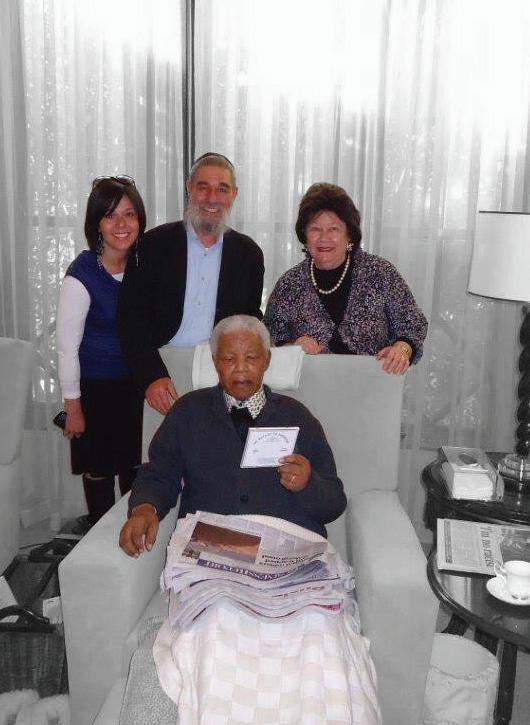
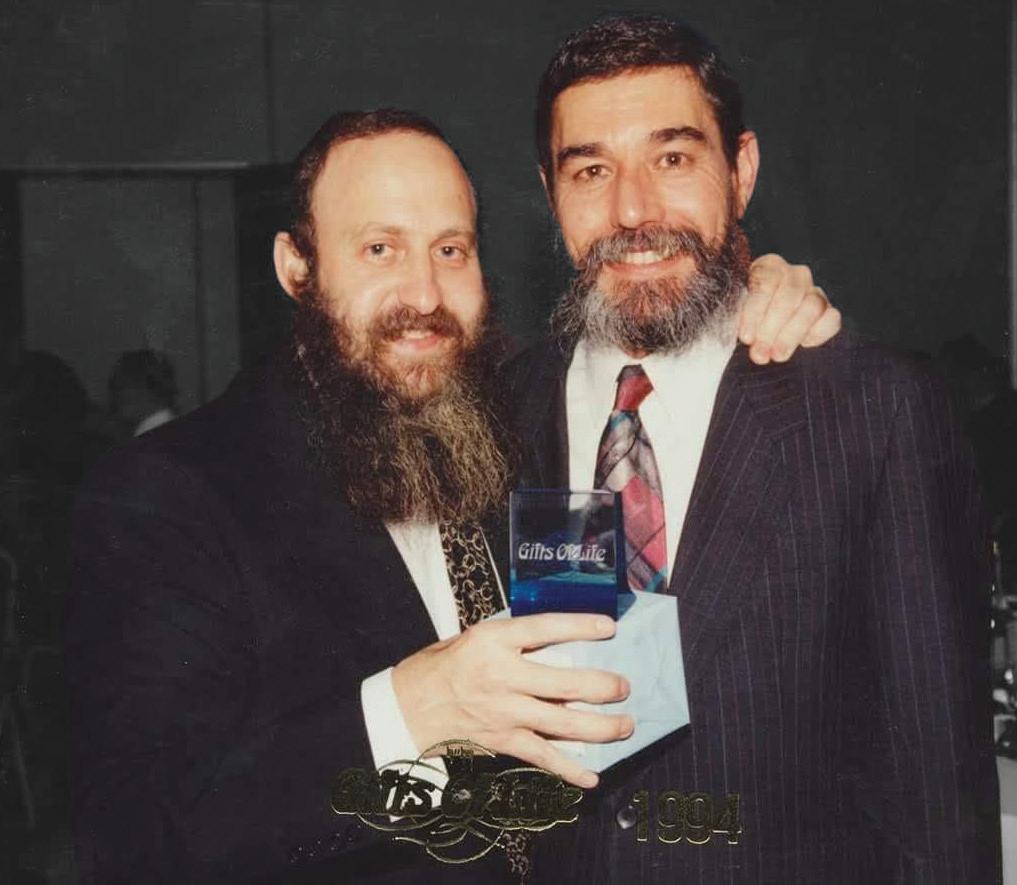
the founding member of the Chabad community in South Africa, he asked Rabbi Bacher his opinion. Rabbi Bacher suggested that he ask the Rebbe’s shliach, Rabbi Yosef Wineberg, who happened to be visiting South Africa at the time and was staying at the Bachers’ home. Rabbi Wineberg immediately suggested that he travel to New York and ask the Rebbe for direction.
At the time, the Rudolphs hadn’t quite committed to a Chabad life, and Jeanne was still growing in her Yiddishkeit. Yet, the idea resonated strongly, and they made plans to visit New York.
“We arrived on Thursday, Erev Purim 1981. The next four days were filled with incredible energy and simcha,” he fondly recalls. “Those days of concentrated joy greatly influenced my life motto ‘simcha poretz geder’‘joy breaks through all barriers’.
“At one of the Rebbe’s farbrengens at 770, I asked the chossid standing next to me to give me an idea of what the Rebbe was talking about because I didn’t understand Yiddish. He promised to do so at the niggun
break, but in the meantime, he advised me to listen with an open heart and allow the Rebbe’s words to penetrate. It was so different from the structured, rational intellectual experiences I was used to having at University, where every issue had to be understood to its core, and I appreciated this radically different approach. I allowed my newly discovered neshomah to freely experience the niggun as well.”
“
Whereas before he had felt so much doubt, Rudolph walked out of the yechidus with total clarity and confidence.
Michael and Jeanne joined the queue for yechidus on Sunday night and were ushered into the Rebbe’s office at about 2 am.
“I handed the Rebbe the note I had prepared explaining my quandary, and he immediately advised me to pursue my public health career, a non-clinical discipline, while adding that I should “keep my hand in”, a line that seemed a paradox, but I came to understand the deeper meaning much later.
“To Jeanne, he gave wonderful brochos for success in her music career and he encouraged her to embellish some of the niggunim she had learned, including the Mitteler Rebbe’s Kapelye, her favourite niggun for performances.” However, the Rebbe impressed on Jeanne that she should never embellish or change the Alter Rebbe’s Niggun, known as the Four Stanzas; it is to remain in its original form. “That niggun is pure and should not be touched,” the Rebbe said.
As he recounts the next part of the yechidus, Rudolph’s voice chokes with emotion.
“We then handed the Rebbe a picture of our three daughters, Jacqui, Natalie, and Sara (Jeanne was pregnant with Tamar), and with a
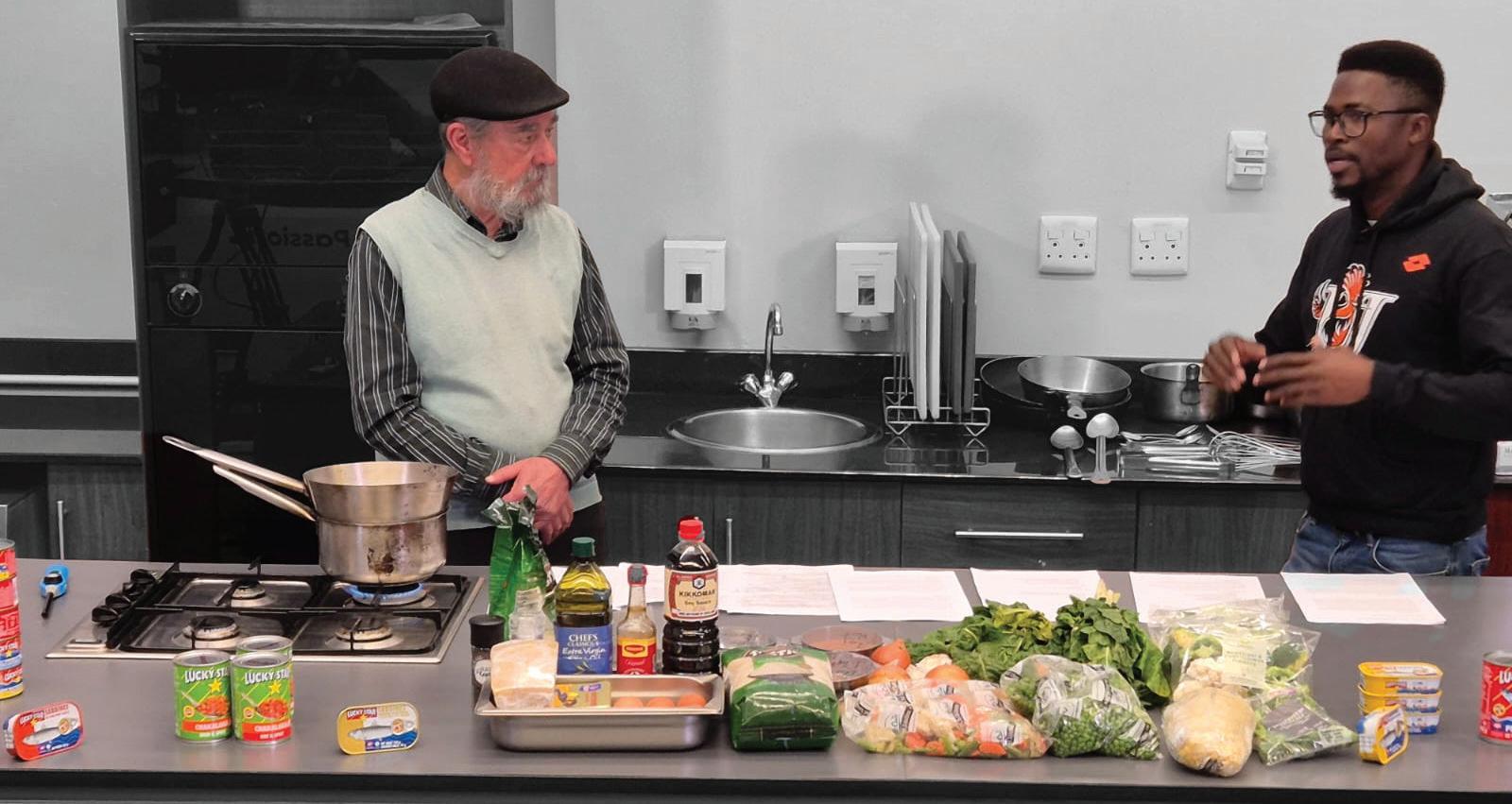
loving, grandfatherly-like smile, the Rebbe took it and said, ‘You have the originals at home, so I will keep this photo with me.’
Whereas before he had felt so much doubt, Rudolph walked out of the yechidus with total clarity and confidence.
“That meeting changed my life. I felt confident about what I needed to do and encouraged by the Rebbe’s brochos that I could achieve my objectives in my new career.”
Over the next three and a half decades, both Michael and Jeanne achieved remarkable successes in their respective fields - Jeanne as Professor of Music Composition and Michael as a Professor of Public Health.
Jeannie has used her talents to compose original compositions related to Torah themes, including the Sefirot Symphony for Orchestra and Virtuoso 1 for piano, which includes the Didan Natzach melody illustrating the triumph in the Rebbe’s regaining of the holy seforim.
In 1995, she was appointed by President Nelson Mandela to join the team working on the new South African National Anthem, which was intended to represent all South Africans by combining all eleven national languages - English, Afrikaans and 5 African language groups (covering all except the Venda language).
In the 1990s, Michael focused on public health dentistry issues, which included many trips to remote rural areas of South Africa where there were very few dentists. His exposure to poverty, malnutrition, and unemployment, amongst other social and economic problems in the country, broadened his efforts to tackle critical issues ranging from mitigating the effects of climate change to addressing the huge water-energyfood challenges. By mobilizing experts in these fields, creating collaborative partnerships, and managing day-today logistics, Rudolph has acted as the glue holding many different projects together across the country.
Food insecurity and nutritional deficiency are critical problems facing
many South Africans. So Rudolph embarked on a project to set up model vegetable farms at schools, villages and campuses to help feed people and also show them how to replicate such farms on their own.
“As a dentist, I had my clean and sanitised hands in people’s mouthsnow, I have my dirty hands in the soil. The Rebbe’s words, ‘to keep my hands in’, took on a literal meaning.”
His work takes him to all parts of South Africa as well as to other countries in Africa and beyond. Wherever he goes, the sight of a bearded, religious Jew eating his kosher food, davening with tefillin, and learning Torah makes for a powerful kiddush Hashem.
As their careers progressed, so did their growth in Yiddishkeit. The Rudolphs became active members of the Chabad community and, in particular, the Torah Academy School and Shul, serving in various leadership capacities over the years. For them, the friends they made became like family, and the Shul their second home.
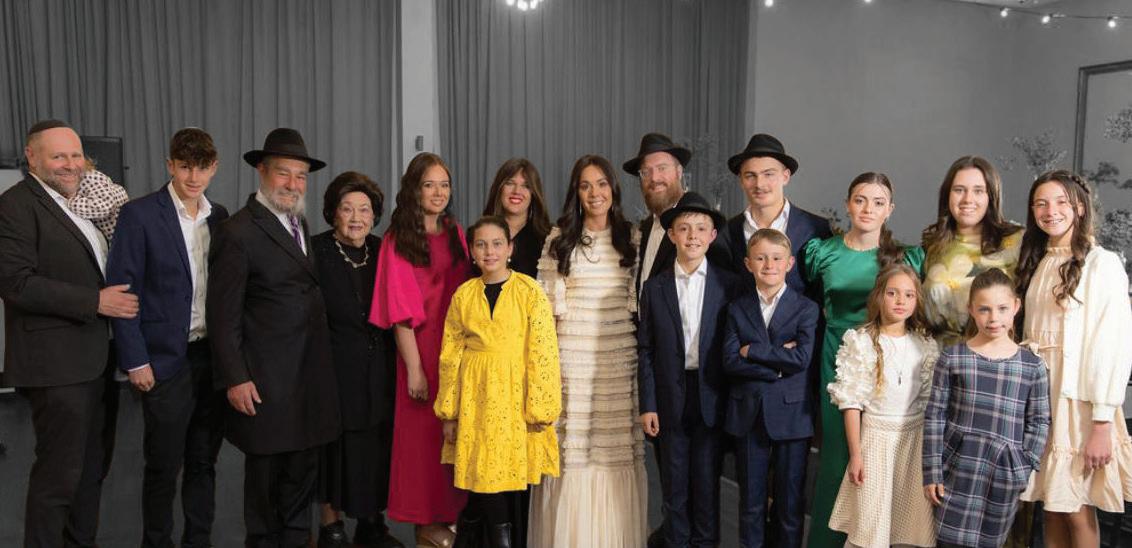
When Jeannie fell ill with Hodgkin's Lymphoma in 1996, the community rallied around them with round-theclock support and deliveries of food and spiritual upliftment. “I don’t think we needed to cook a Shabbos meal for six months,” remembers Rudolph. “The love and support were beyond anything we had ever seen.”
Rudolph’s closeness to the Rebbe deepened in the years after his visit. As part of his position at the University, he was granted a paid trip overseas to attend a conference every two years. As hashgocho protis would have it, the conferences related to his discipline would always take place during Tishrei in different cities around the United States, which enabled him to spend uplifting and momentous times of Tishrei with the Rebbe in 1983, ‘85, ‘87 and ‘89.
“My main ‘home’ in Crown Heights was with Rabbi Shimon and Esther Goldman, who looked after me like one of their own family,” he describes. “Their home was filled with chassidishe warmth and hospitality, and they would make
me feel so welcome. However, Rabbi Goldman told me that on Shemini Atzeres and Simchas Torah, I’d have to fend for myself as his place at hakafos was so jam-packed, there simply was no place for me to join him. Finding my own place turned out to be a difficult task, with thousands of chassidim and visitors squeezed into every inch of the shul, including the multiple-level bleachers.
“I was walking around feeling quite lost when an obviously sensitive and caring chossid shouted to me from the top level and offered me enough space to stand on one foot. However, this offer was made on the condition that I would replace my ‘short’ suit jacket with a kapota on Shabbos and Yom Tov. I agreed and spent the next 4 hours dancing at hakafos with only one foot on the bench and holding onto an imaginary rope as I was at the end of the bleachers.”
In the excitement of the moment, however, his commitment to wear a kapota was forgotten.
A few years later, he was again
dancing at hakafos, this time with some more space in the Torah Academy Shul. Suddenly, unplanned and unexpectedly, he felt a kapota being slipped onto him by his friend Yaakov Shishler, and the memory of his commitment in 770 came back to him.
“I began to wear a kapota with much hesitation because I didn’t know if it was appropriate for me. Today, I continue to wear it with much pride as a Lubavitcher chossid,” says Rudolph. “My special moments with the Rebbe and being part of the Chabad community in South Africa have had and still have a huge impact on my life and that of my children, grandchildren, and our great-grandchild, B”H.”
Michael continues to approach life with the same energy, youthful curiosity, and passion that first drew him to a dvar Torah at the Lipskars’ Shabbos table. His unassuming presence, warm smile, and tireless energy reflect a journey of transformation inspired by the Rebbe and chassidus.
By Starlit
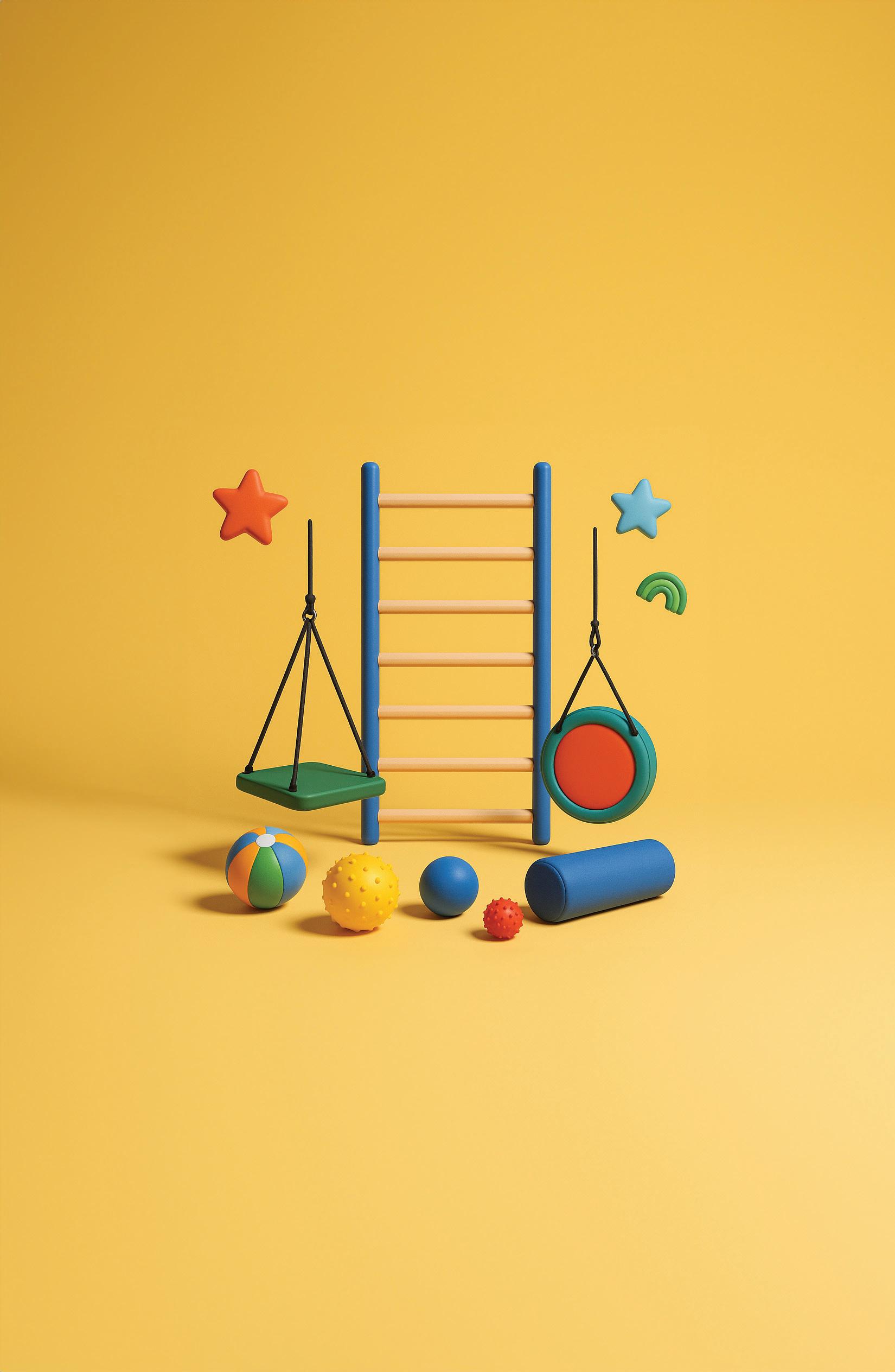
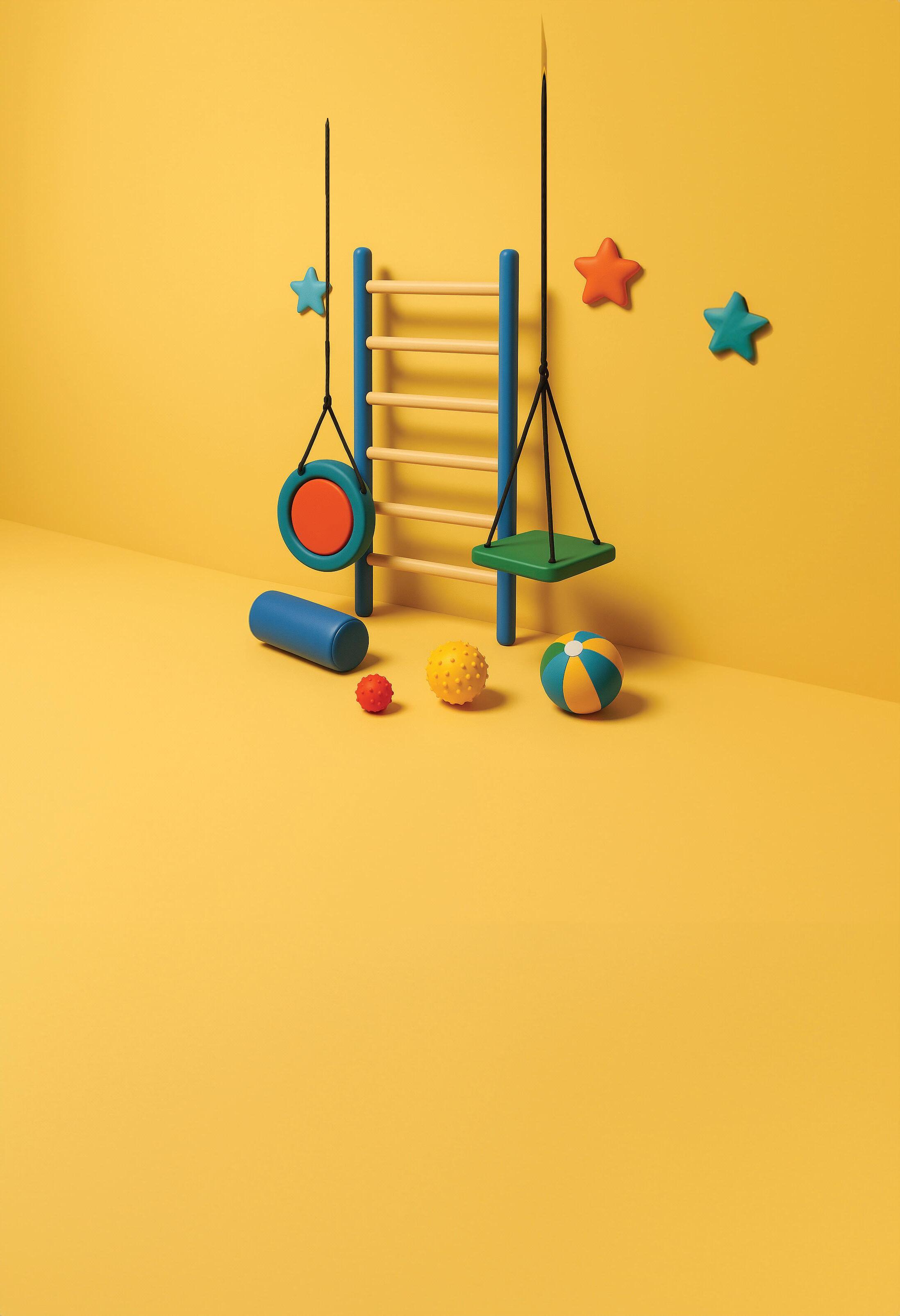
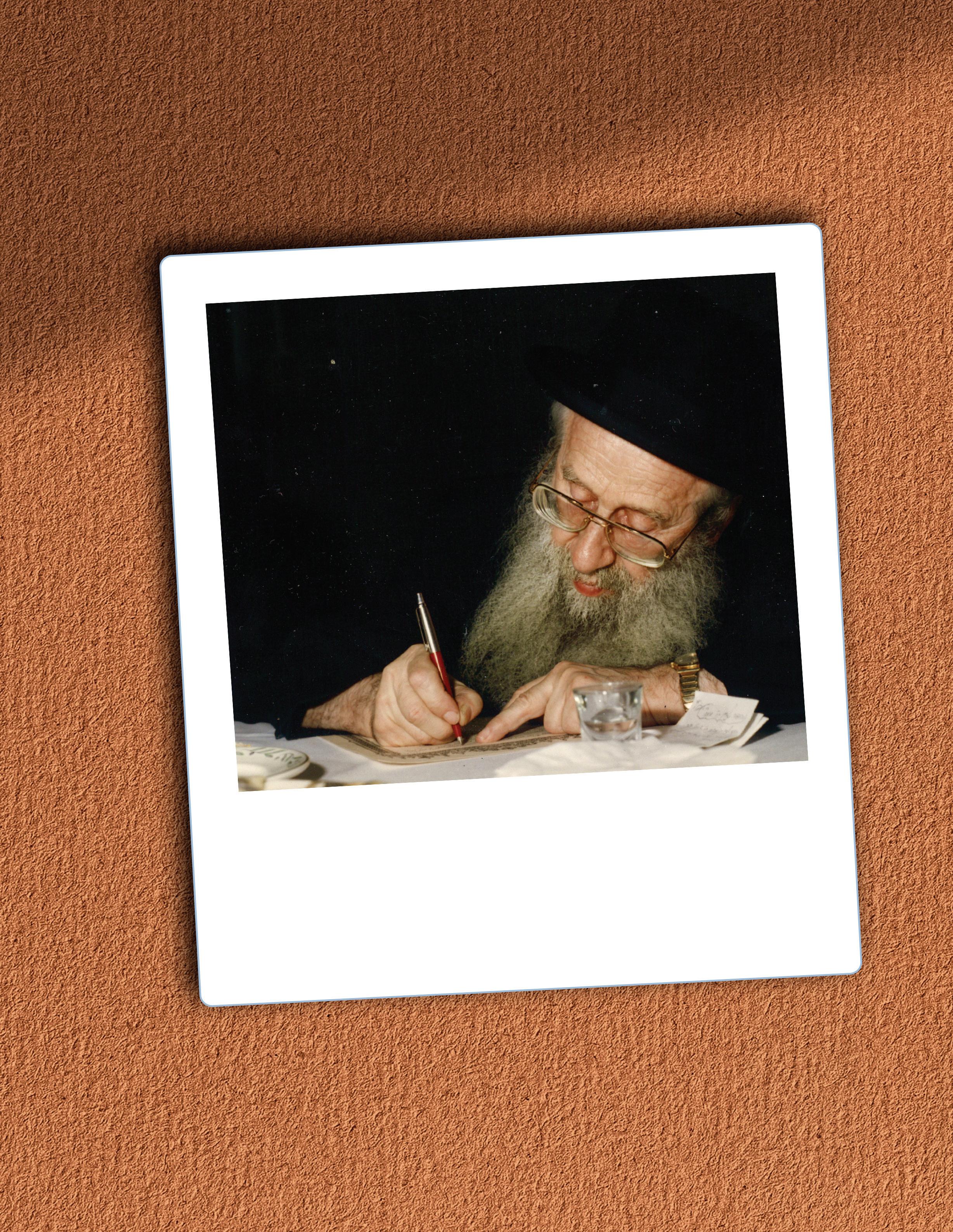
Rabbi Yitzchok Hendel wrote many gittin, but strived for shalom bayis

An excerpt from the new book by Avraham Reinitz, “A Chassidishe Rav - English Edition - The Life Story of Gaon and Chassid Rabbi Yitzchak HaKohen Hendel”
TToday, when marital counseling has largely become the domain of professionals and psychologists, many question the role of a Rav in interpersonal dynamics. Yet, Rabbi Yitzchok Hendel, of blessed memory, achieved remarkable success in this field, fostering marital harmony—both within the Chabad community in Montreal, Canada, which he led for many years, and even beyond it.
Sunday was his most challenging day of the week as he sat at the Beth Din of Montreal for divorce proceedings. Fellow dayanim looked up to him and relied solely on him in the arrangement of gittin. He, in turn, would shed tears even for couples he had never met before; when he oversaw multiple gittin in one day, he cried even more
Even in instances where the couple had already finished their civil divorce proceedings and only approached the beis din to facilitate a get, Rabbi Hendel would still patiently inquire, “Perhaps there’s room to try one last effort to bring peace between you?” One of his consistent arguments to these couples was that during their wedding ceremony, the Sheva
"
Sealing one’s lips during a dispute gives them mastery over their fury
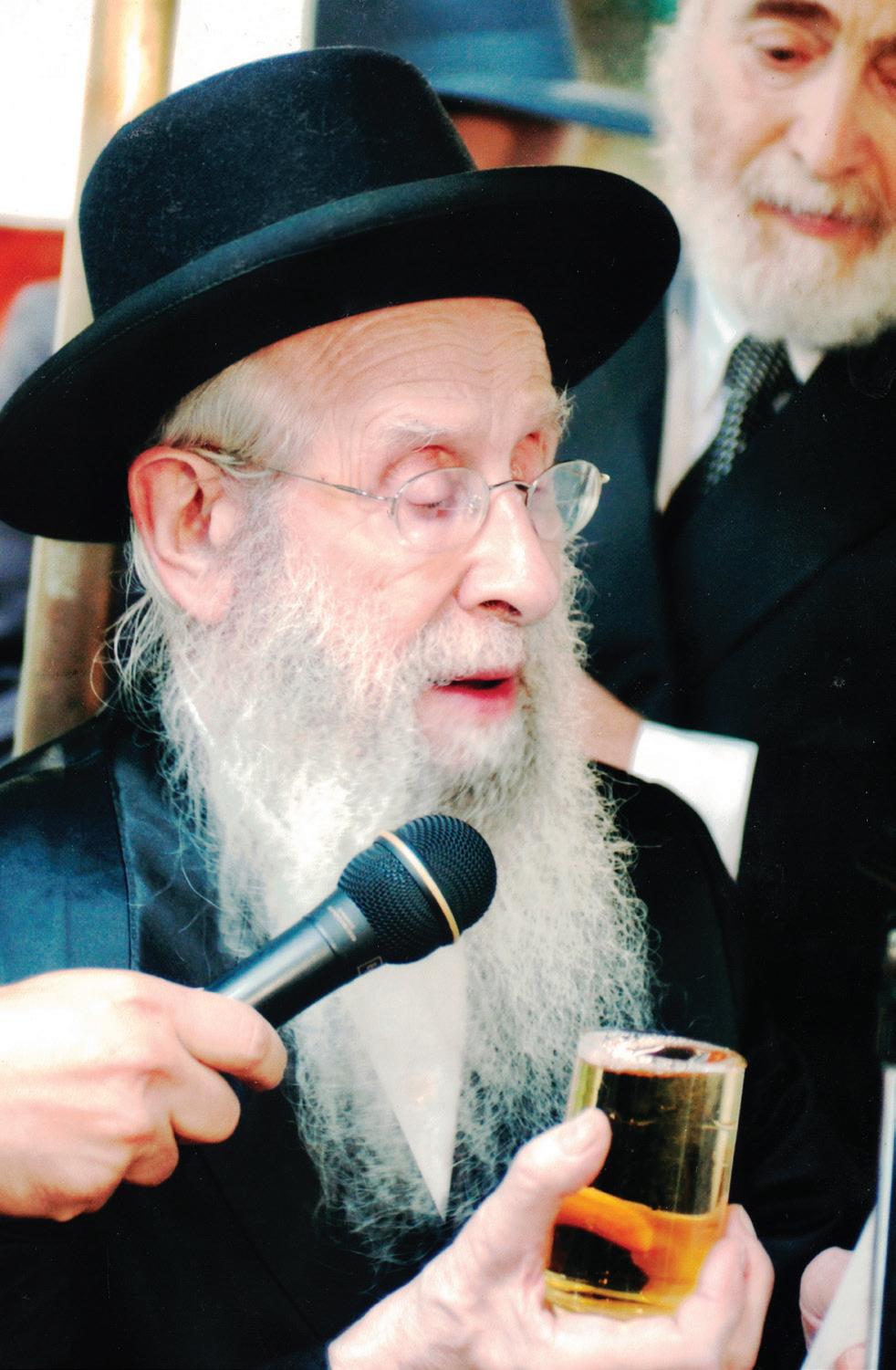
Rabbi Yitzchok Hendel officiates a chuppah in his later years
Brochos were recited, invoking Hashem’s unity in relation to their union. By breaking apart the marital home, the Divine unity would also be shattered.
In the case of a frum couple, Rabbi Hendel saw no reason to rush to a verdict. Instead, he persistently tried various approaches for reconciliation. However, when it came to non-religious couples, he feared there might be additional complications, due to the permissiveness of today’s society once the word “divorce” comes into play. When such couples approached him, the first question he asked was whether they observed Shabbos. If the answer was negative, he often said, “If so, you may not even be
aware of the laws of family purity. How do you expect there to be peace in your marriage?”
Multiple instances occurred when his fellow dayanim tried to dissuade Rabbi Hendel’s efforts, especially when the couple's differences seemed insurmountable. Yet, Rabbi Hendel persisted and, in many cases, managed to foster peace even within the confines of the divorce court.
“There was one instance,” recounts Dayan Dovid Refoel Banon, “where Rabbi Hendel succeeded in reconciling a couple, and a year or two later, they had a boy. I was the Mohel and Rabbi Hendel was Sandek. Once we were walking together, and upon seeing the newborn, Rabbi Hendel excitedly said to me, ‘Boruch Hashem! Here is our child!’”
In the Rebbe’s letters, we often find guidance on addressing marital issues by meeting with the “local Rabbinic authority” or a “trusted Rav who is a friend.” Rabbi Hendel epitomized both these roles—for many in Montreal, he was both their spiritual leader and a friend. The very fact that couples felt confident enough to knock on his door at two in the morning speaks volumes about the connection he shared with his community.
Rabbi Hendel dedicated himself selflessly to foster peace in households, without thought of monetary reimbursement. Time held no constraint for Rabbi Hendel when it came to shalom bayis. He would venture out even in the middle of the night, ready to spend hours in a single household striving to restore peace.
One night, around four in the morning, Reb Shmuel Zalmanov's
phone rang. Picking it up, he recognized Rabbi Hendel’s voice: “Shmuel, are you awake? Come over now.” Reb Shmuel rushed over, where he found the Rav clad in his robe, who said to him, “You understand Hebrew well, come in.”
Entering, he encountered a Sefardic couple whose first language was Hebrew, embroiled in an intense argument. They sat for about an hour, with Reb Shmuel translating Rabbi Hendel’s sage advice. In the end, harmony was restored. Later, Reb Shmuel discovered that the couple had already agreed to divorce and had come to Rabbi Hendel to resolve an argument over how to divide their finances! Thanks to Rabbi Hendel, they stayed together; today, they are blessed with grandchildren.
Part of the secret to his success in resolving marital discord was his sheer aversion to conflict. He could decisively tell a husband that, for the sake of marital peace, he should avoid harping on certain matters. To a wife, for instance, he might assert that, even if some issues seemed insurmountable, the well-being of the children necessitated doing everything possible to avoid divorce. He had the gift of articulating a person’s primary mission in this world: once a couple has children, they should never harm the very children they raised.
Another key to his success was his patience. He sat with couples for hours upon end, imparting a feeling that he was attentive to all the problems they faced. Even when someone spoke nonsense, he knew how to make them feel important. When a conversation leaned towards someone being in the wrong, he never used blunt language; instead, he lowered his eyes in embarrassment, remaining silent for
lengthy moments. Palpable shame would fill the room, leading the spouse to be overwhelmed with guilt. In this manner, people left his presence satisfied, having never been accused outright of being wrong.
Rabbi Hendel never sided with one party. He maintained a neutral stance, offering advice as though from the sidelines. Sometimes, while listening to both sides, he would ask one, “What do you think should be done in this situation?” In this way, he led couples to arrive at the ideal solution themselves.
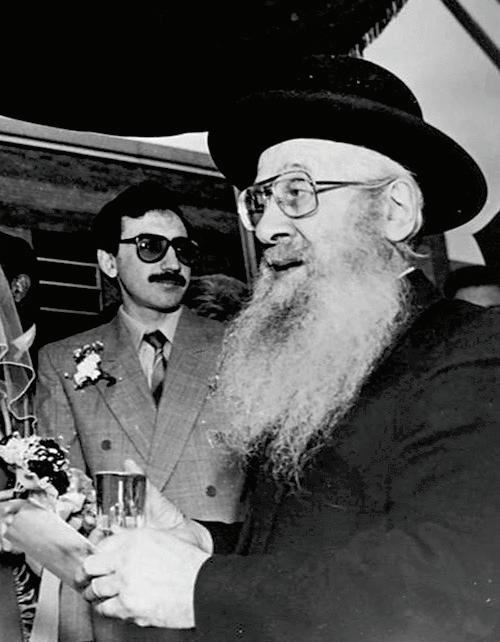
Once, Rabbi Hendel called someone at eleven at night, requesting that he come to his home to act as an interpreter for a French-speaking couple at his door. This translator came home with two profound insights Rabbi Hendel shared with the couple:
a) When two individuals quarrel, each party wishes to emerge victorious. The truth is, when both are striving to win, both end up losing. Conversely, when each is willing to lose, both will end up triumphing.
b) When he wanted to emphasize the importance of observing the laws of Taharas Hamishpacha, he stated, “Your marital relationship will be renewed each time, much like after the wedding.”
When meeting couples, Rabbi Hendel made it a point to ensure their discussions remained calm.
Rabbi Yitzchok Hendel officiating a chuppah in Montreal
“Words of the wise are heard softly,” he frequently reminded them. “When you shout, you’re consumed by your own feelings. If you resist the urge to shout, there’s a far greater chance that you’d consider the other’s perspective. When someone speaks, they open their mouth in a semicircle, leaving space for the listener. But when you yell, your mouth opens wide in a circle, offering no room for another.”
He often referenced advice from the Rebbe’s letters: Sealing one’s lips during a dispute gives them mastery over their fury. Addressing husbands, he emphasized the paramount importance of valuing their wives and appreciating their continuous, often unseen, work at home.
Part of his conversations focused on the link between financial woes and
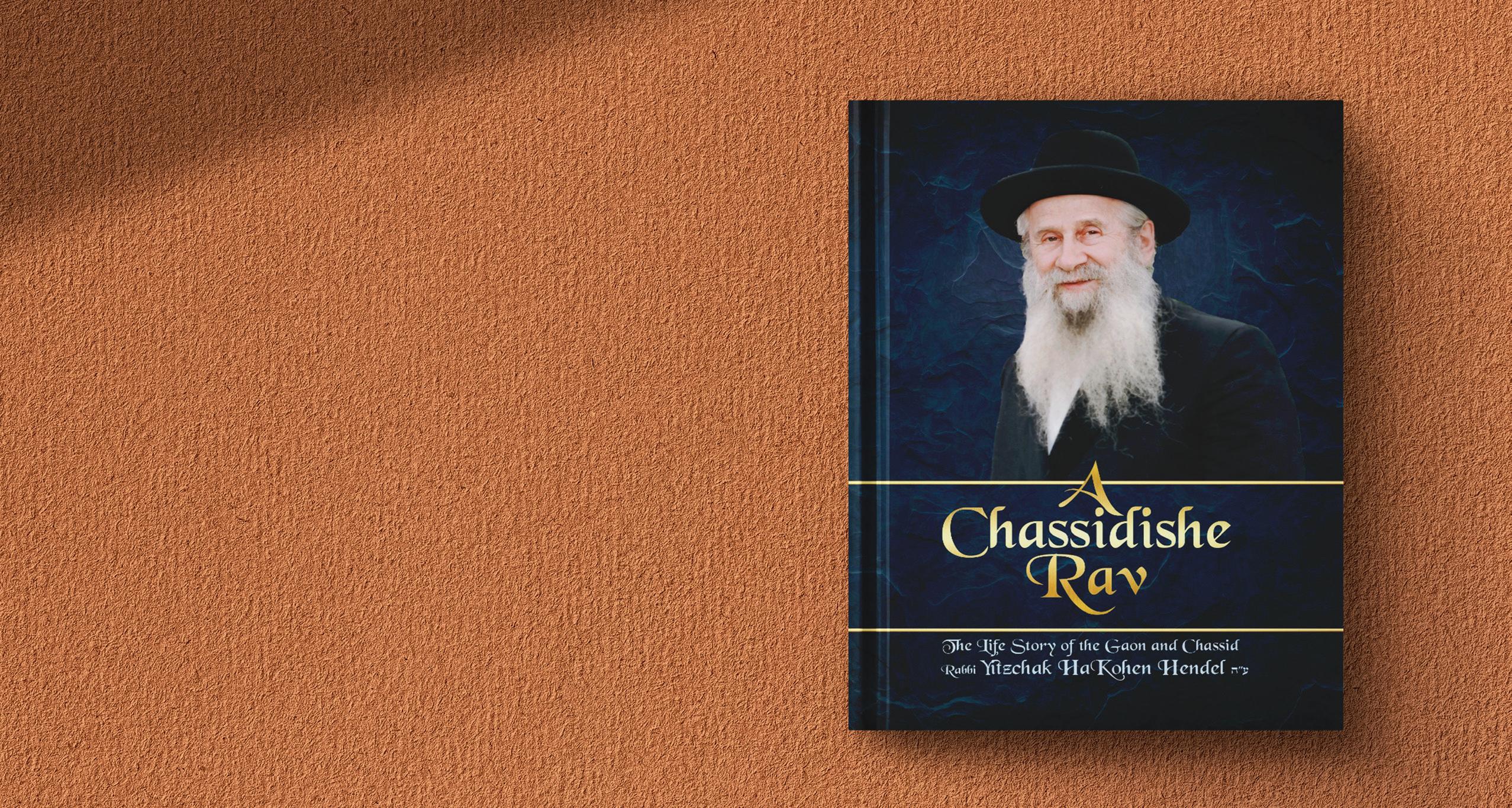
marital discord. “Your husband’s financial troubles aren’t his alone,” he would tell the spouse. “Financial strain creates psychological tension on both of you, which in turn can erode marital peace. Keep in mind that peace is a vessel to receive Divine blessings. A cycle emerges: financial hardship strains a marriage, but prioritizing peace will indirectly invite greater prosperity.”
If a husband complained that his wife did not contribute financially, Rabbi Hendel passionately pushed back that the struggles and stresses related to childcare take a heavy toll, given the challenges of raising children and the incessant cycle of cooking and laundry. “If you want to help your wife, ensure she has regular breaks,” he advised, “whether for Torah classes, shopping, or parttime employment. It can bolster her health and resilience, offering a respite from the overwhelming weight of chores resting on her shoulders.”
When financial strains were
complicating a couple’s relationship, Rabbi Hendel went out of his way to arrange food, financial support, or get affluent community members to step in with assistance. In one poignant instance, a family was on the brink of divorce due to the husband’s inability to secure employment. Rabbi Hendel tried convincing the wife of her husband’s inherent goodness, explaining that it was their financial hardship, not his character, which was causing their marital distress. But as the situation deteriorated, the husband left.
A few days later, the wife heard a knock at her door. To her astonishment, it was Rabbi Hendel, standing there with a gift in hand. Rabbi Hendel explained that her husband was eager to reconcile and had even bought her a special gift. “Given the circumstances, he was too ashamed to present it himself, so he asked me to deliver it on his behalf,” he said. Without considering if this act might undermine his status as the Rav, he spared no effort in the pursuit of peace.
As Rabbi Hendel advanced in age, his family tried to ensure that he remained undisturbed and comfortable at home. But every time he heard of a family in need of marital reconciliation, he insisted on being taken to their residence, despite the toll on his health.
When Rabbi Hendel moved into the home of his daughter and son-inlaw, Mrs. Sara Leah and Rabbi Meyer Plotkin, a distressed couple rang the bell at two in the morning. The couple asked to speak with Rabbi Hendel, insisting that the matter was of great importance.
Rabbi Hendel overheard the commotion, arose, inquired about the disturbance, and warmly invited them in. He spoke with them earnestly for hours, until dawn — only for them to return an hour later with further details that required counsel. Patiently, Rabbi Hendel sat with them and then, with a gentle smile, remarked, “I’m glad I won’t be needing an alarm to wake me for Shacharis.”

TThe excitement and momentum of the second annual Chassidus in Color competition: Geula Edition was felt around the world, with submissions pouring in from the United States, Israel, Chile, England, Ukraine, and Argentina— just to name a few.
The artwork of the top 70 finalists was displayed throughout the month of Iyar at Ari Kirschenbaum’s Maor Art Gallery and Yitzy Geisinsky’s Betzalel Art Gallery, where it was judged by an esteemed panel: Rabbi Yossi Paltiel, Michoel Muchnik, Rabbi Mendel Wolf, Mush Kanner, Estee Klein, and Esther Maxwell. On 20 Iyar, the winners were announced in a stunning gallery presentation at the Jewish Children’s Museum in Crown Heights, accompanied by words of inspiration from Rabbi Simon Jacobson and Michoel Muchnik.
What sets this contest apart from other art competitions is the deeper vision behind it, explained Rabbi Menachem Meltzer, Director of the competition. “Traditionally, ideas are conveyed through words, with art serving as a complement. This competition aims to shift that dynamic, making the image the primary means of communication, with words playing a supporting role,” Meltzer said. “In the realm of Chassidus and the Yiddishe world, there is a vast domain where art not only conveys concepts but does so with greater effectiveness and emotional depth.”
Rabbi Simon Jacobson, host of the contest on ChassidusApplied. com, shared, “As a young man, I was always aware that the purpose of Torah was to apply it to life, and that’s what an artist is doing: revealing its energy. When an artist creates, they are looking at the same thing you are, but they give you an
inner perspective.”
This year’s contest was expanded to include the Tzivos Hashem division, with special tiers for ages 7–14. As this year’s competition wraps up, the topic for next year has already been announced. Tefilla and Tanya were chosen as the themes that artists will be challenged to convey, each requiring its own unique skill set. Tefilla was selected due to popular demand, while Tanya was chosen to emphasize the contest’s overarching goal: for artists to express deep Chassidic concepts through visual mediums.
With this year’s gallery offering a truly immersive Geula experience, we can only imagine what next year’s entries will bring. A special thank you goes to Miriam Rappaport, herself a rising artist, whose countless hours of dedication and effort helped make the contest the success it was.

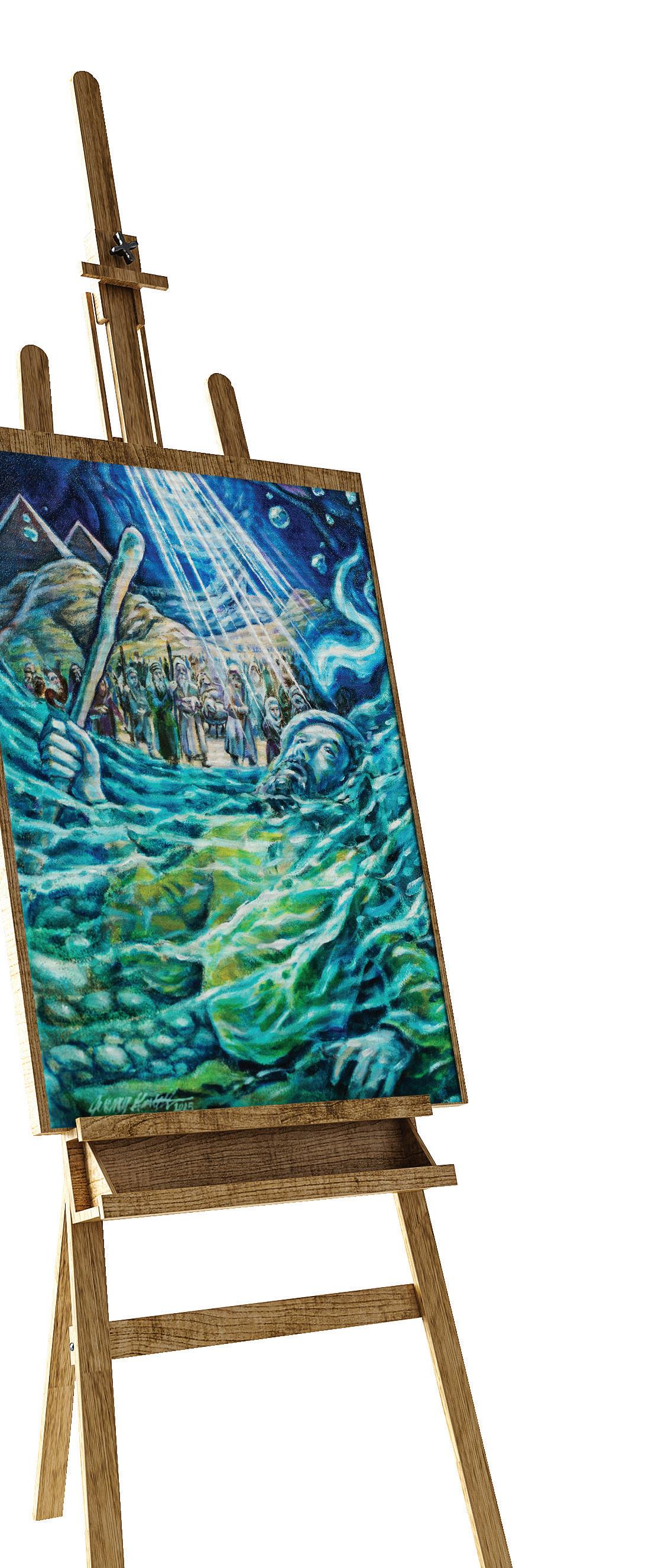
Brooklyn, NY
"The Perfect Faith of Nachshon"
Barely out of slavery, the fledgling Israelite nation stood at the shore of the yam suf, trapped by the sea and Pharaoh’s army. Panic set in—but not for Nachshon ben Aminadav. He was the archetypal Chabadnik, ever striving and never relenting in the service of Hashem. He didn’t think about how to sacrifice himself, rather to do what Hashem says—and if it required self-sacrifice, he was ready for that too, just like Avraham Avinu. As the Rebbe said: “One fellow named Nachshon jumped into the sea… He knew that G - d wanted Israel to move onward toward Sinai. There was a sea in his way. So he jumped into the sea and plowed on toward his goal.” When one approaches the world like Nachshon—in which there is one agenda: to get closer to the goal—then Hashem performs krias yam suf and removes the obstacle.
Source: Likkutei Sichos Vol. 1
Material: Oils on board
Dimensions: 13x19"

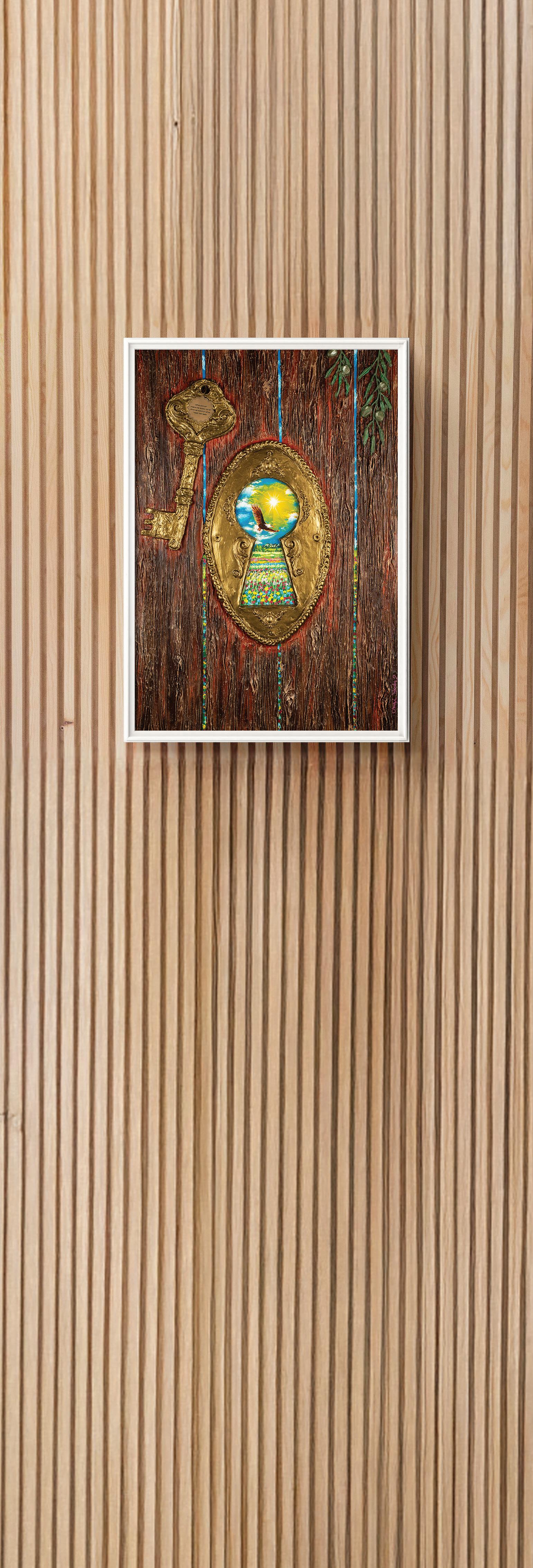
Brooklyn, NY
This piece explores the quiet tension between concealment and revelation. Redemption doesn’t destroy exile—it transforms it. Even within darkness, sparks of Geula already exist. We need only open the door and let the light in. A weathered door stands before us—marked by sorrow, time, and story. Yet its cracks do not conceal; they invite. Through the keyhole, a burst of light reveals a radiant garden, a soaring eagle, the promise of redemption not beyond the door, but within it. The worn key nearby speaks of memory and potential. Above, olive branches descend—symbols of resilience and hidden light, like the oil of the Menorah. Geula is not distant. It’s here—shining through the cracks, waiting to be revealed.
Source: Likkutei Sichos, Vol. 35, Shemos
Material: Acrylic on canvas, mixed media
Dimensions: 24x36"
Santiago, Chile
When Moshiach comes, “golah” will become “geulah” through the introduction of the letter א. This letter represents the consciousness of G-d as the Creator and Master of everything that exists, as well as the revelation of pnimiyus haTorah, the inner dimension of the Torah. Once this completion occurs, the world will reach its perfect, ideal state where the strong will no longer harm, exploit and kill the weak, but rather all individuals, peoples and nations, large or small, rich or poor, will follow the lead of the Jewish people, the children of G-d, to serve Him in peaceful harmony.
Source: Likkutei Sichos Vol. 1
Material: Oil on canvas
Dimensions: 19x25"
"Geula Journeys"
In Chassidus, Krias Yam Suf - the splitting of the Sea - revealed hidden G-dliness, awakening faith, and prepared the soul. Matan Torah then unified heaven and earth, introducing the possibility to bring holiness into this world through Torah and Mitzvos. The Moshiach era completes this process, when G-d's essence will be fully revealed and the world
transformed into a dwelling place for G-d. Together, the 3 integral scenes shown in this painting mark a journey from revelation to integration to ultimate fulfillment.
Material: Wooden canvas and acrylic paint markers
Dimensions: 40x40”

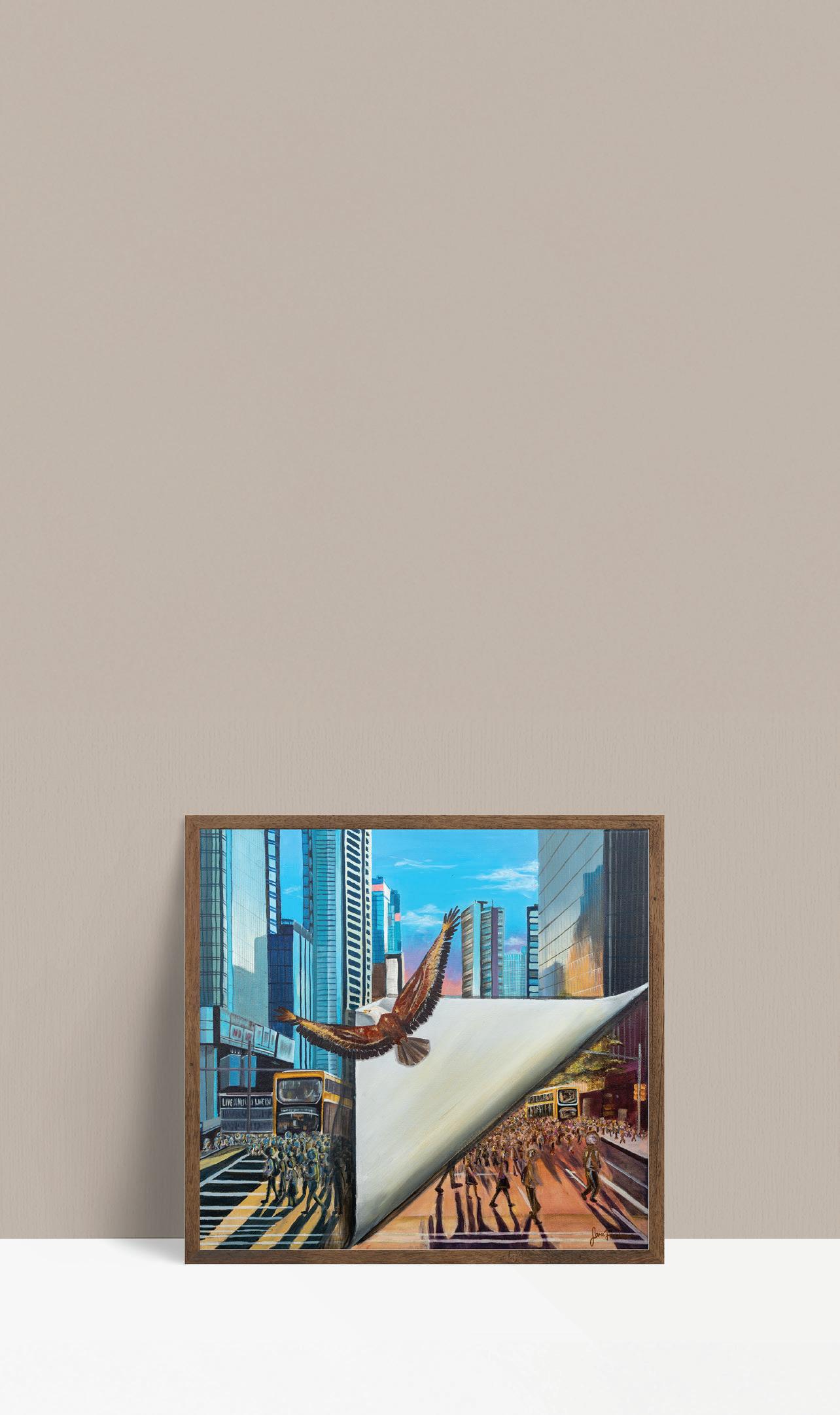
Crown Heights, NY
"From Golus to Ge'ulah"
Chabad Chassidus teaches that bringing Moshiach is a gradual process, built not only on our efforts, but also on those who came before us. In Basi Legani, the Rebbe describes our generation as the “seventh”—special not through our own merit, but because we follow the
Hallandale Beach, Florida
When Moshiach comes, the world will continue as we know it— —yet the Rebbe teaches that the revelation of Hashem’s light will be so intense that even our physical bodies will perceive the Divine energy sustaining creation. It will be as if a veil is lifted, revealing the G-dliness that was always present in every part of our world. In Galus, each of us carries a divine spark, cloaked in physicality, and our task is to awaken these sparks and prepare ourselves and the world for redemption. Now, standing at the edge of Geulah, it is through our Torah and Mitzvos that we will merit the full revelation of Hashem’s light and the arrival of Moshiach, on eagle’s wings, speedily in our days.
Source: Sicha Shabbos Parshas Vayetzei; Tes Kislev 5752
Material: Acrylic on canvas with metallic highlights
Dimensions: 24x24”
first. As the Rebbe says, we are like dwarfs on giants’ shoulders. This painting reflects the painful stages of golus—from Egypt and the Beis Hamikdash's destruction, to the Holocaust and post–October 7th Israel—set against the dawn of Redemption. In the spirit of Basi Legani, “I have come to My garden,” the wolf and lamb lie peacefully near the rebuilt Beis Hamikdash. May we soon merit to say: “Next year in Jerusalem!”
Tanya explains that everything in this world, even the inanimate, has the constant words of Hashem infused into it, keeping it in existence. The differences found in creation to create each specific form are derived from the exact combination of letters of the 10 utterances connected with that entity. For if Hashem were to stop uttering the 10 utterances for even one moment, the world would cease to exist. This picture depicts how we will actually be able to see this in the era of Moshiach, as it says in the possuk
The magnifying glass represents the lens of Moshiach, revealing that which was previously hidden, the words of Hashem found in everything around us.
Source: Tanya and Likkutei Sichos Vol. 14
Material: Color pencil
Dimensions: 14x17”
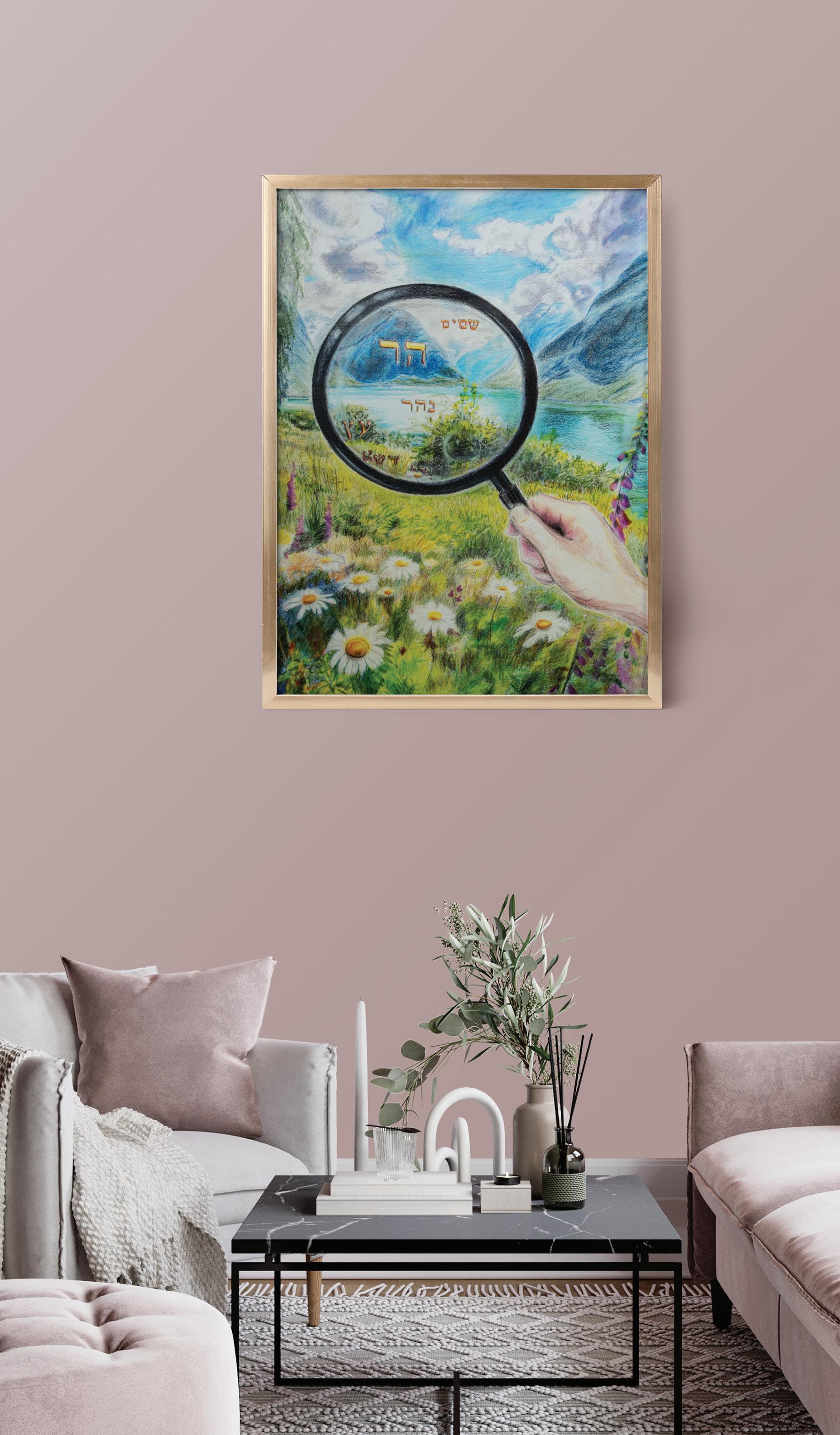
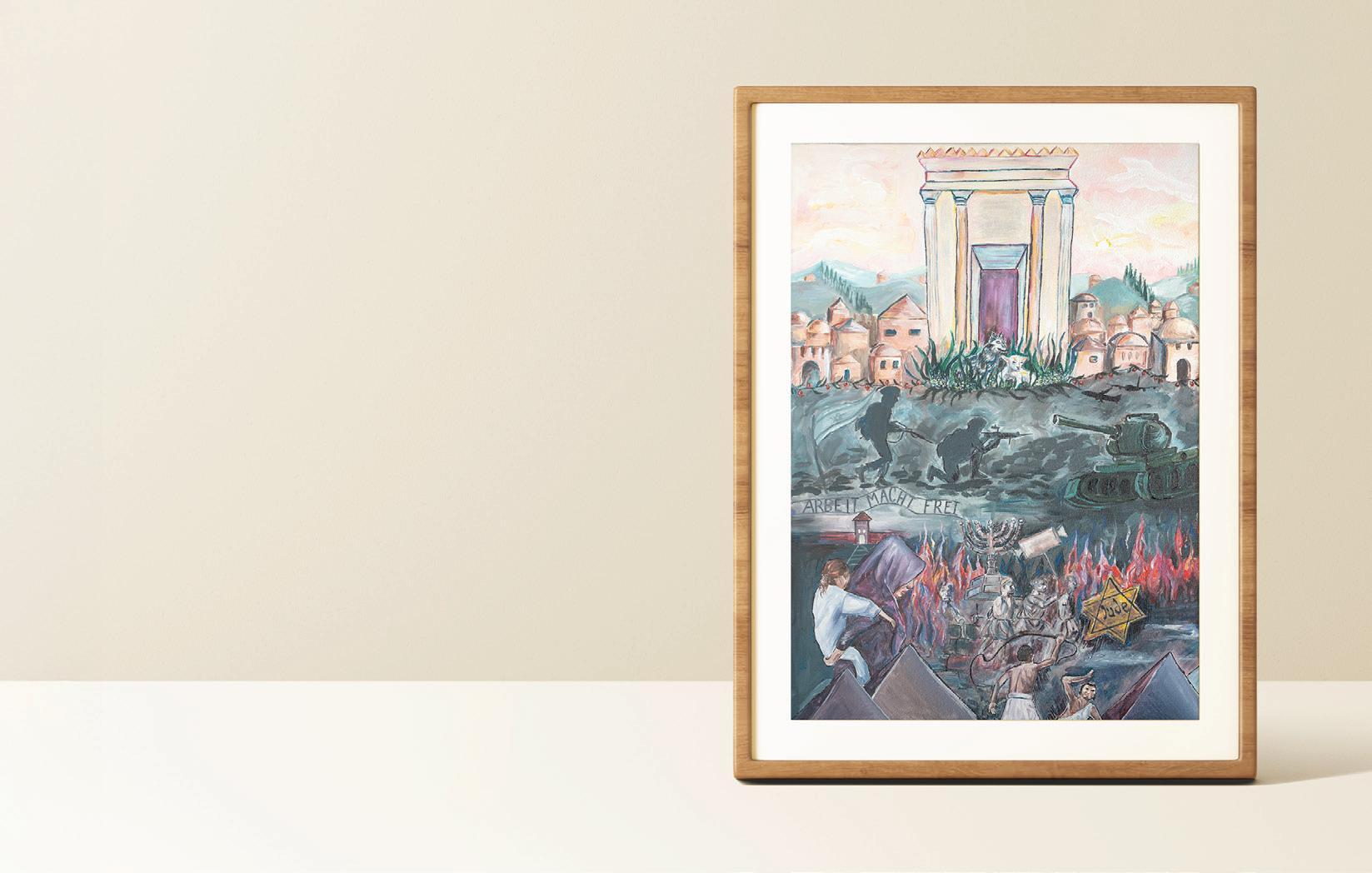
Source: Ma’amer Basi Legani, and from a talk of the Rebbe on the last day of Pesach 5742
Material: Acrylic on canvas
Dimensions: 20x32"



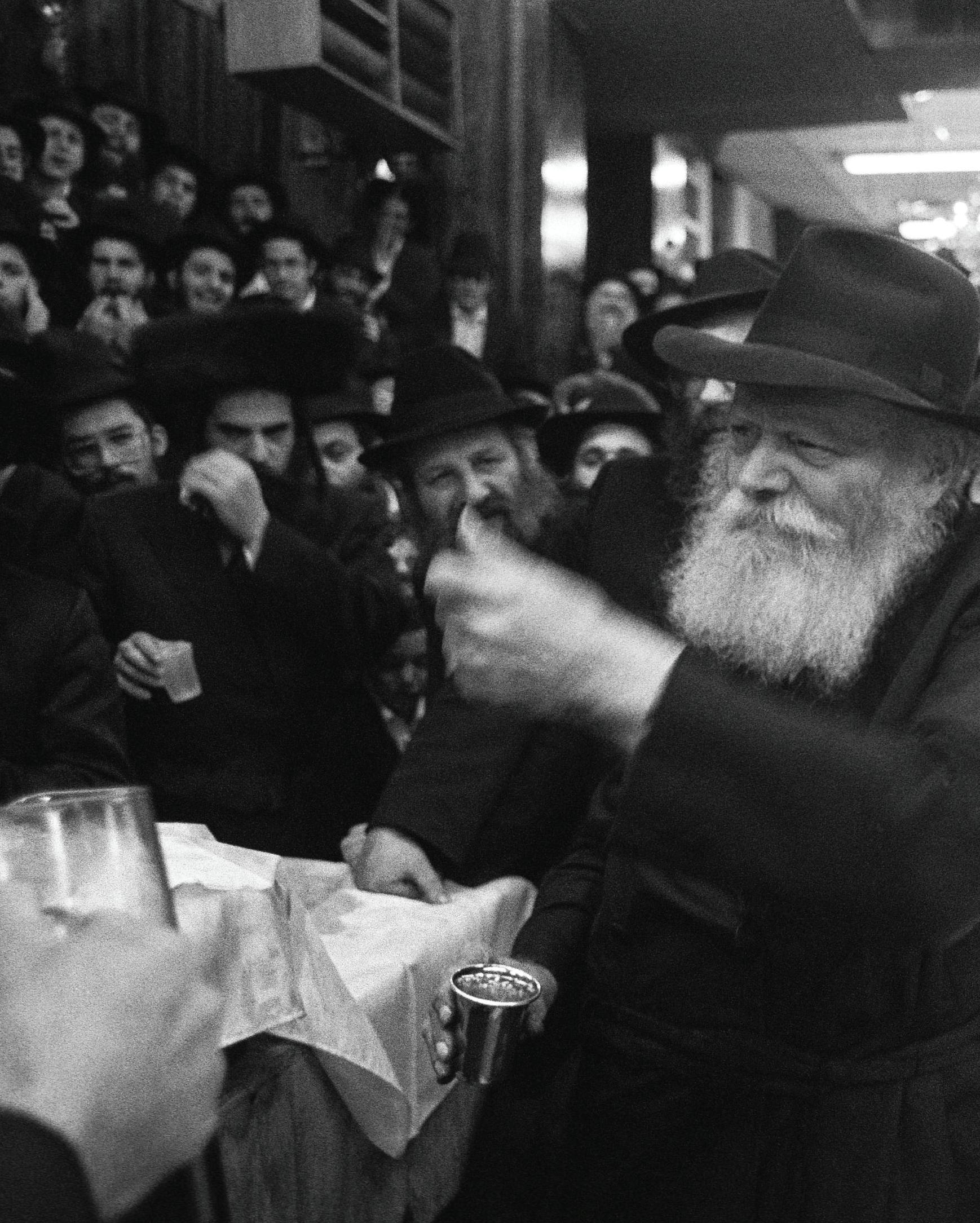
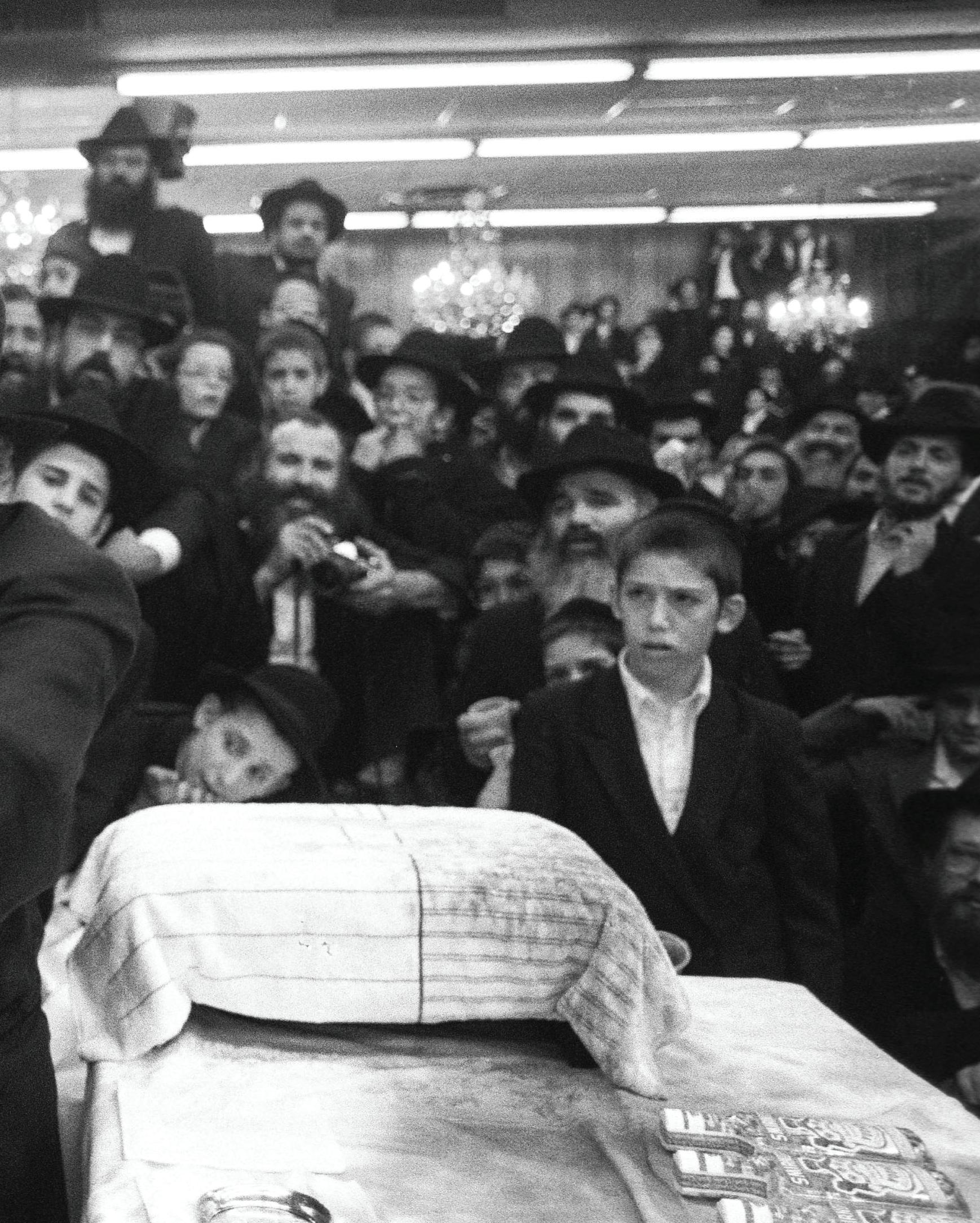
The Torah describes Moshe Rabbeinu as an “ish asher ruach bo” - which Chazal explains to mean as one who connects to each person on their level. A true Rebbe, like Moshe Rabbeinu, cares for every Jew with deep love and never forsakes even one of his flock. Presented here is a gallery of the Rebbe with Jews from all walks of life - each one deeply cherished.
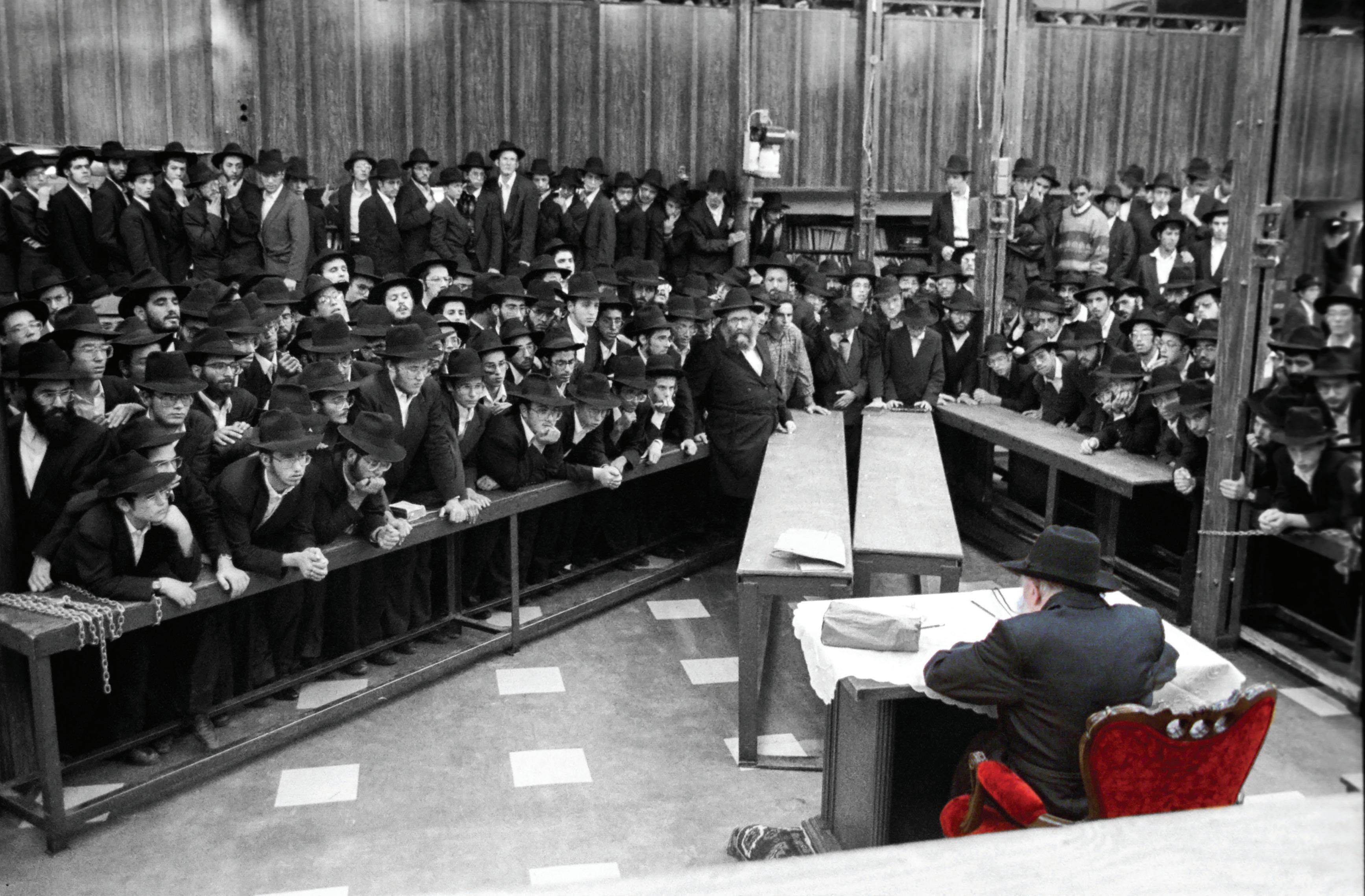
On Erev Yom Kippur 5712 (1952), the Rebbe called the bochurim to his room and said, “Since you’re learning in the Rebbe’s yeshiva, you are the Rebbe’s children.” He then gave them the traditional Birchas HaBonim - a practice that continued annually. The Rebbe’s relationship with the bochurim was that of a father to his children, expressed in many ways over the years.
The Rebbe empowered the women of our generation through founding N’shei Chabad, addressing them in biannual sichos, and countless other interactions. Once, while describing the role of each Rebbe, Mrs. Chaya Devorah Goldschmidt told the Rebbe: “And you are the Rebbe of the women” - to which the Rebbe smiled broadly.
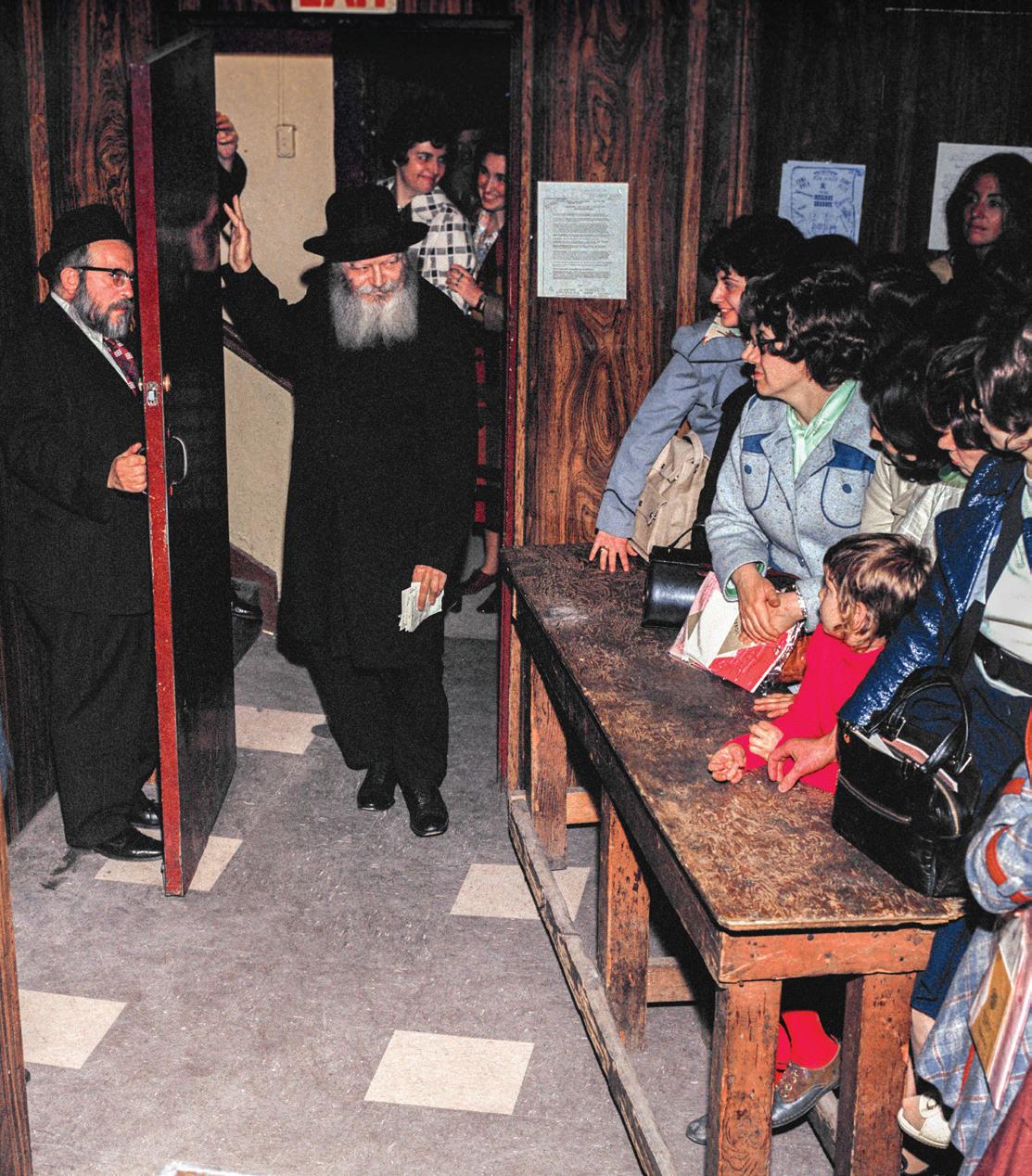
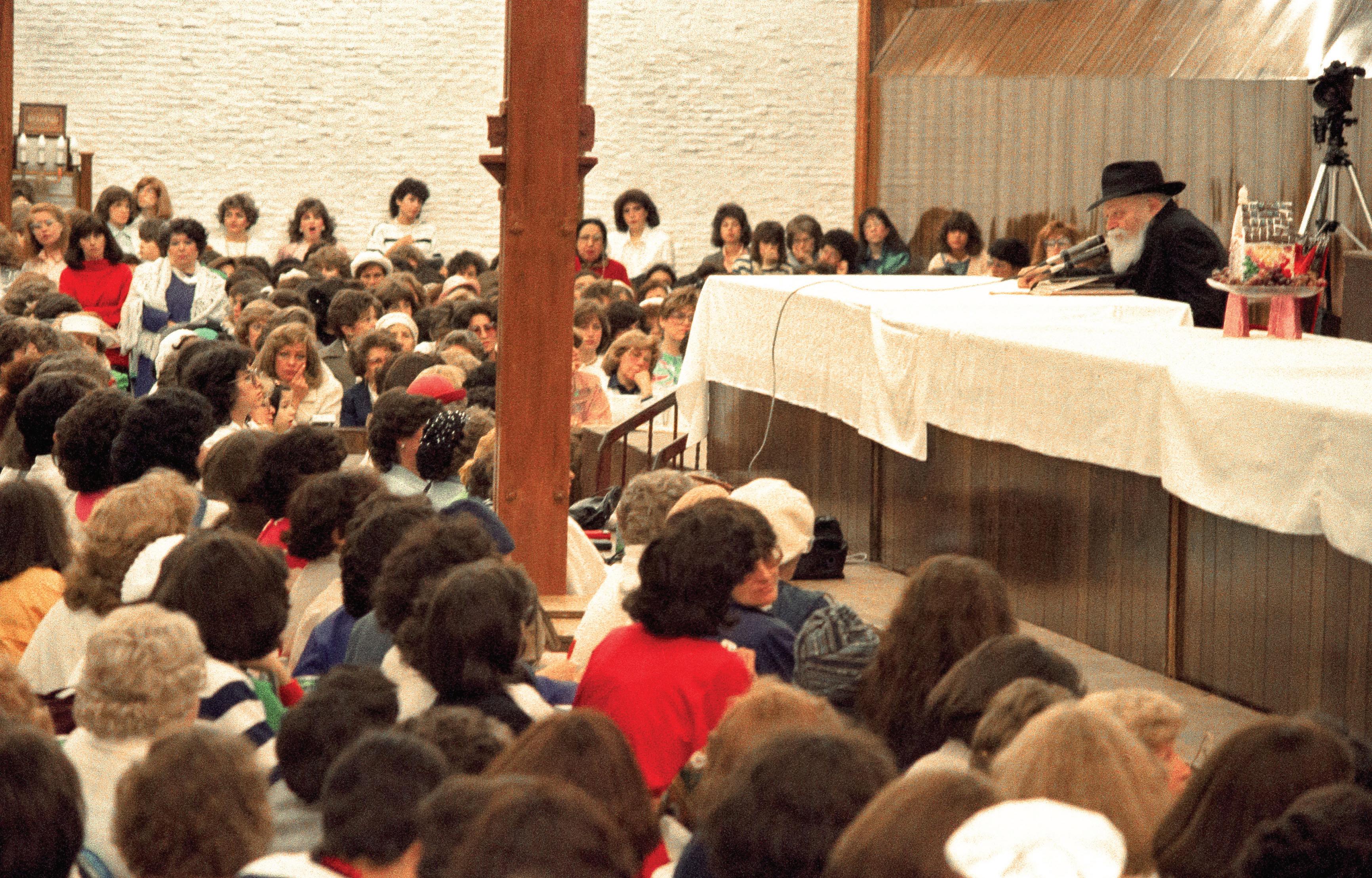
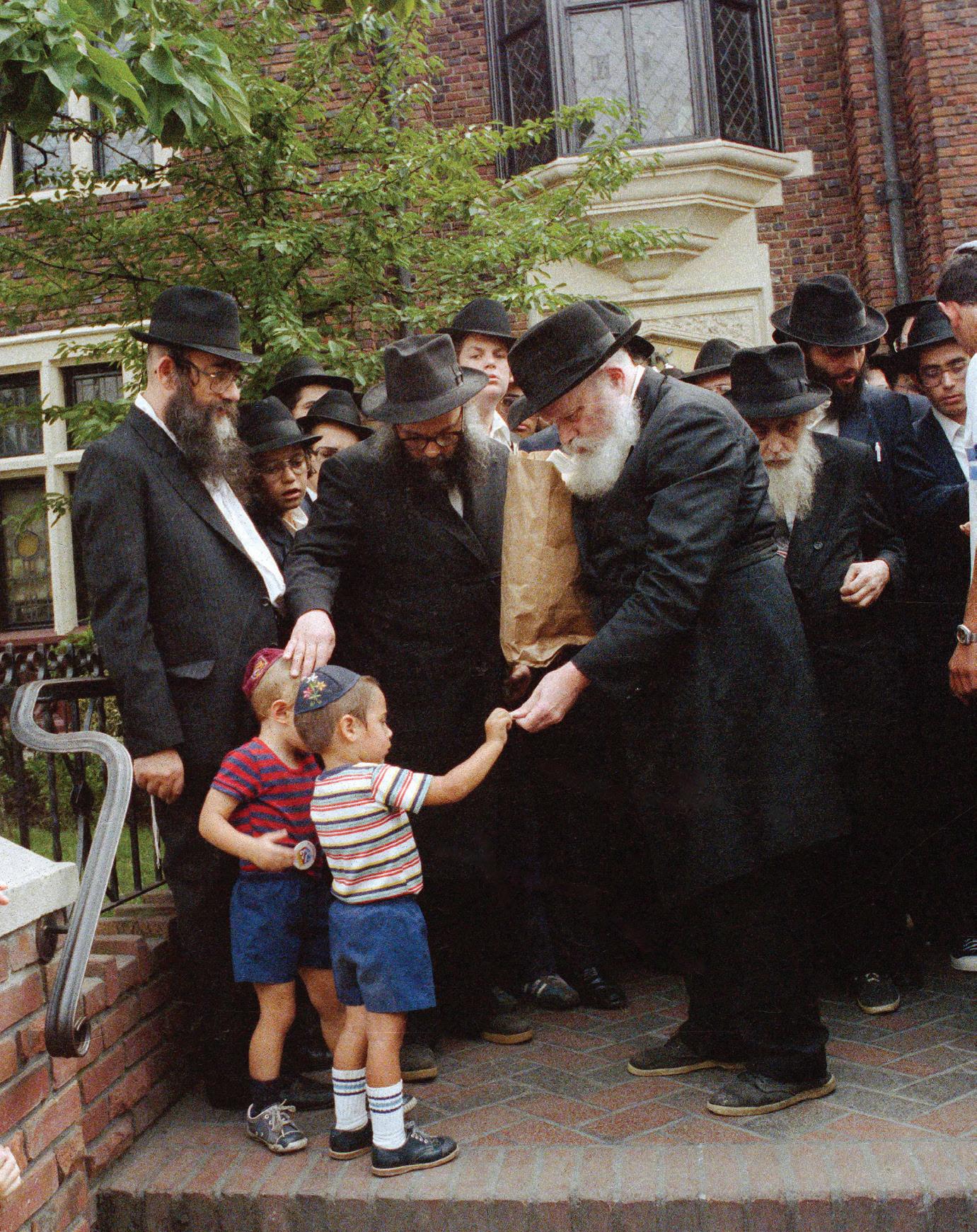
The Rebbe showed a deep love especially for the children. Despite his demanding schedule, the Rebbe spent thousands of hours with them - at rallies, parades, unique distributions - and constantly created new initiatives, entrusting them with bringing the geulah.
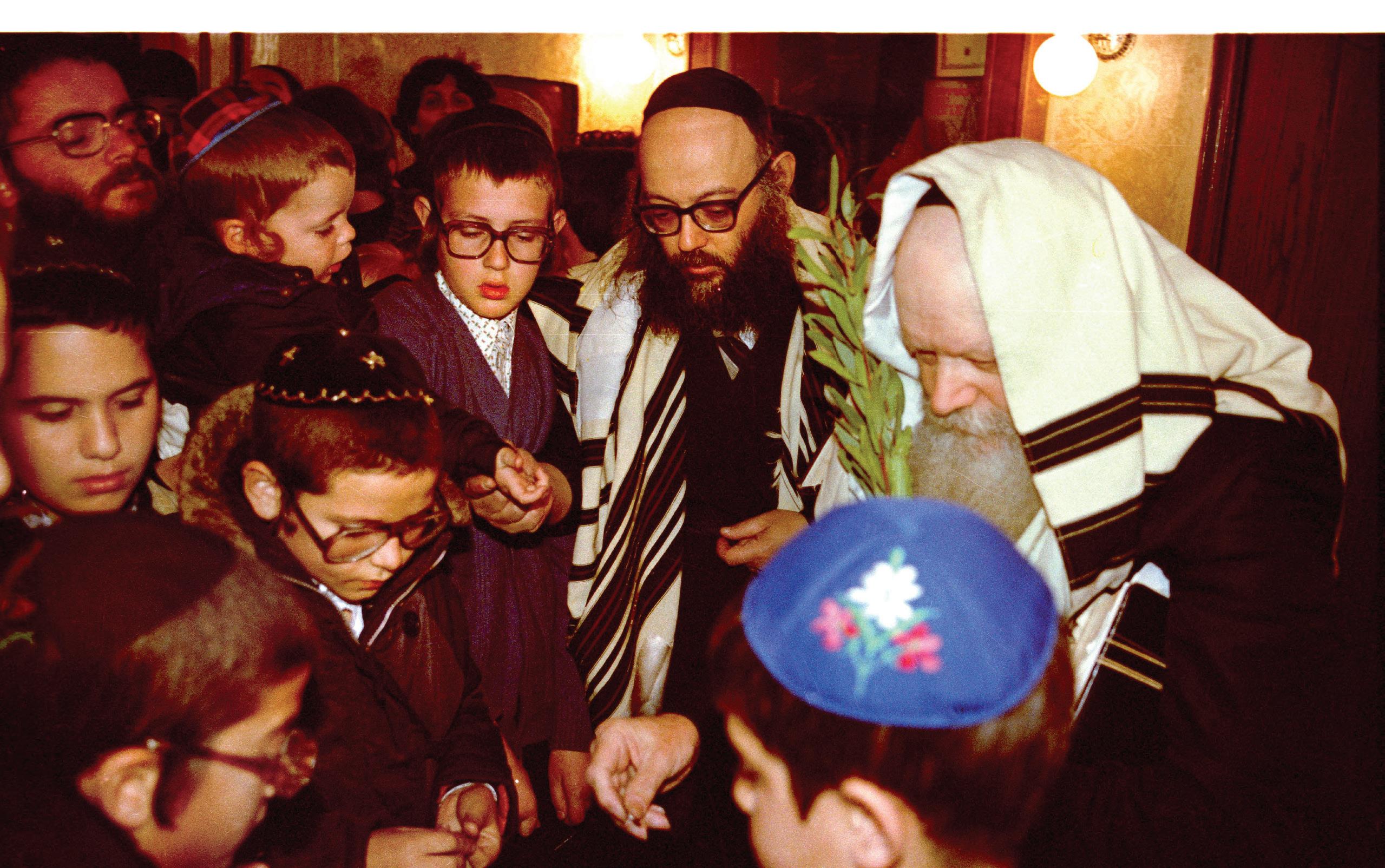
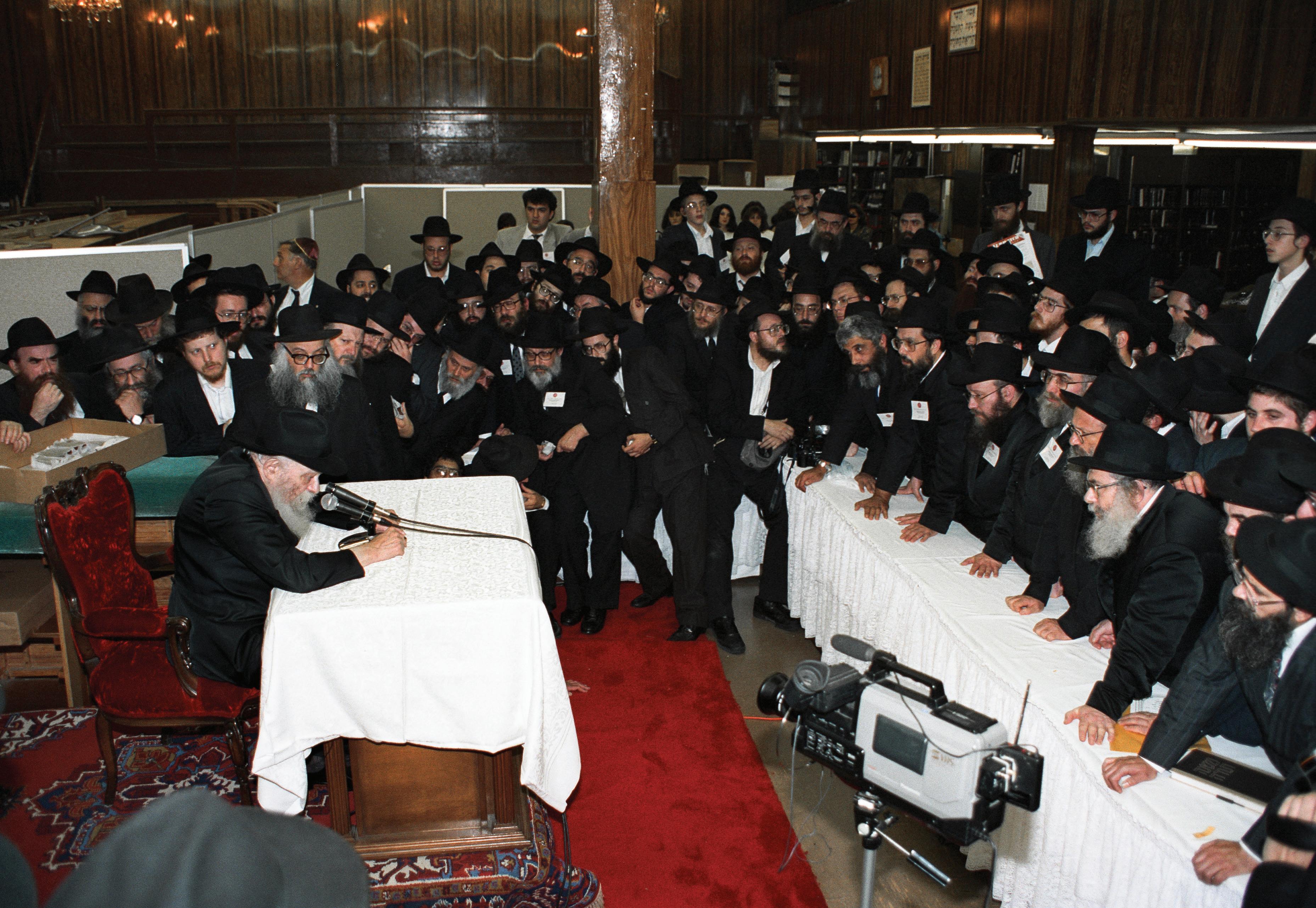
When the Rebbe was informed of the Rebbetzin’s histalkus, he said, “We need to tell the shluchim.” Their total dedication to the Rebbe’s mission earned them a deep, familial bond with the Rebbe. As Chassidim observed, the Rebbe’s face during the Kinus Hashluchim shone as on Yom Tov.

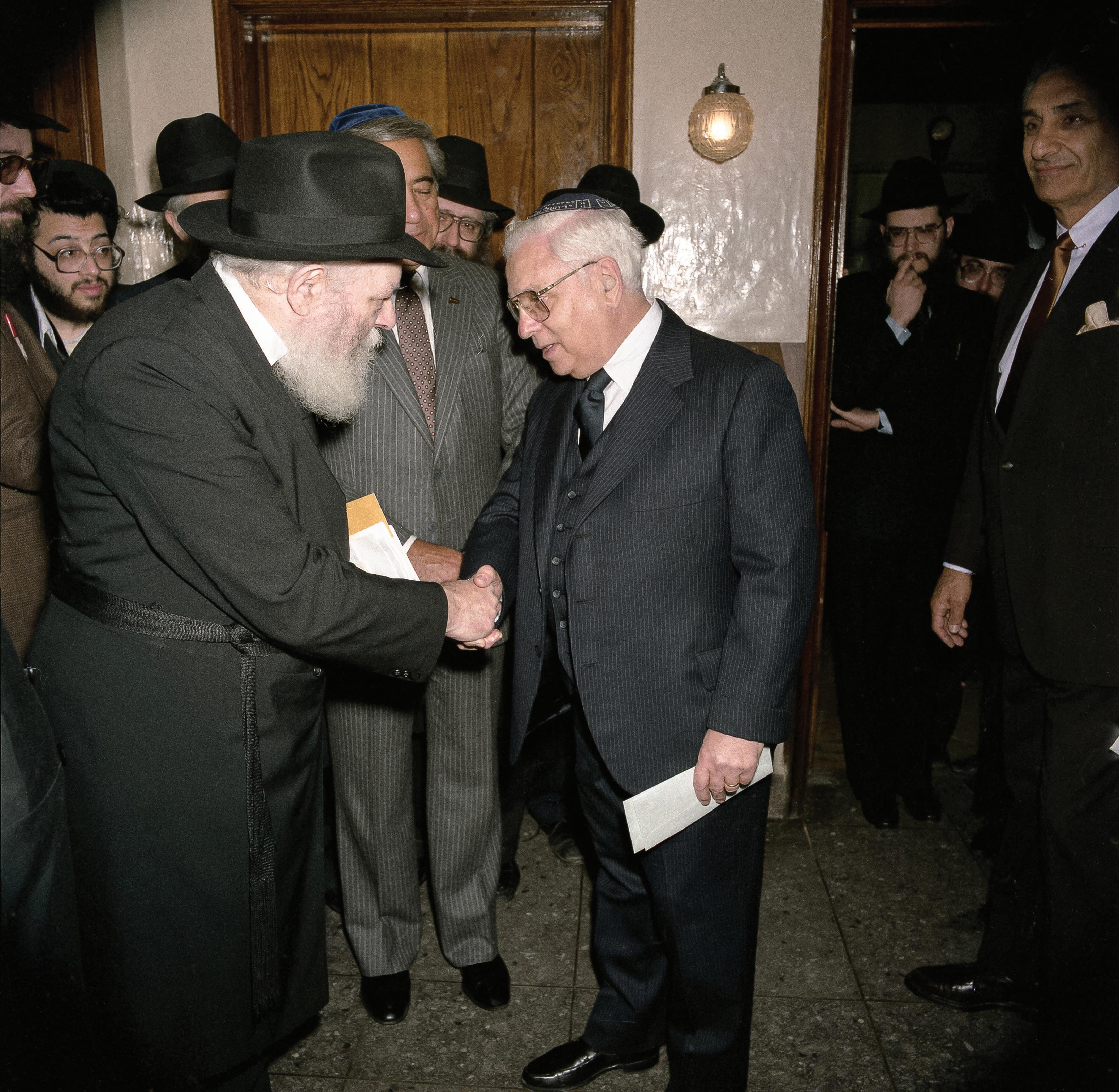
The Rebbe showed a unique affection toward those who supported Chabad’s activities. Speaking to them, the Rebbe once explained that the honor shown to the wealthy stemmed from the awareness that Hashem had entrusted them with resources to spread goodness in the world.
The Rebbe viewed those with disabilities not as “handicapped” or “disabled” - terms that imply deficiency - but as “exceptional” and “special,” highlighting their unique strengths and potential to overcome challenges others cannot. The Rebbe saw their deep connection to Hashem and enormously cherished them.
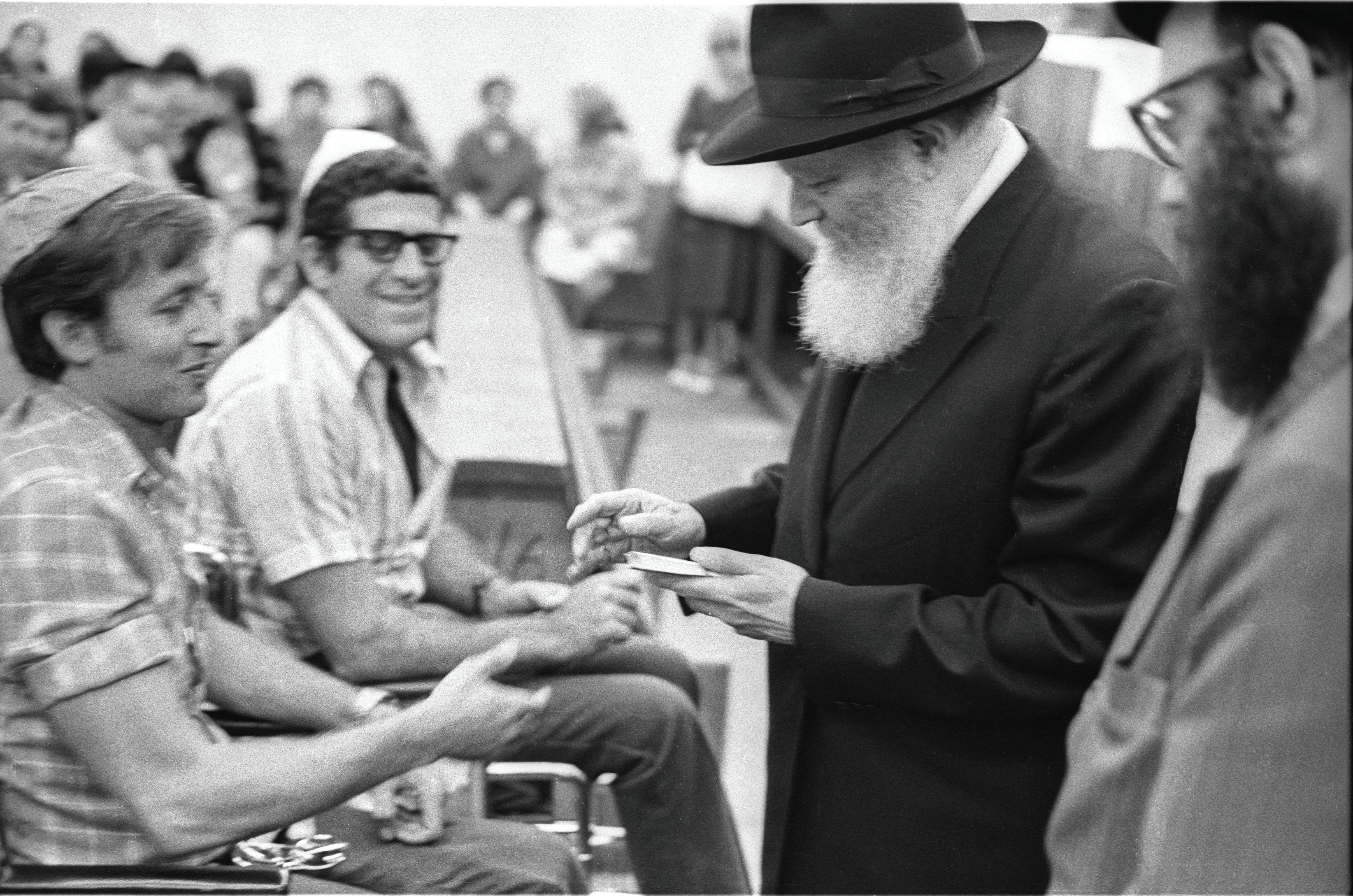
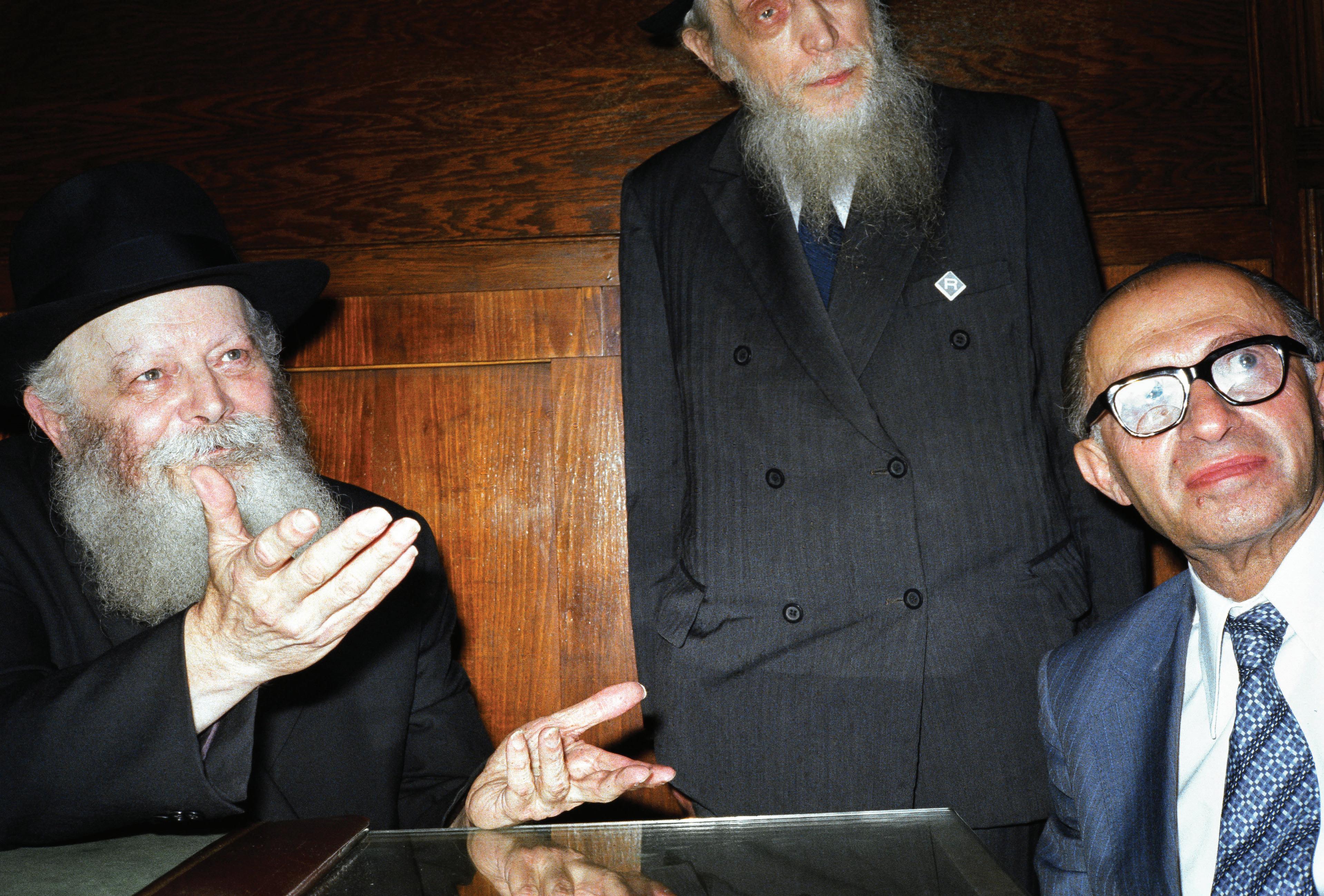
Almost every Israeli political leader and many other politicians from around the world came to the Rebbe for guidance on important matters. Yet more often than not, the Rebbe set aside their status and spoke to them personally about their needs and concerns before addressing the issues at hand.
Hundreds of chassidishe Rebbes and Rabbonim from all communities visited the Rebbe, who consistently urged them to use their positions of leadership to spread Torah and Chassidus and to inspire their respective communities.
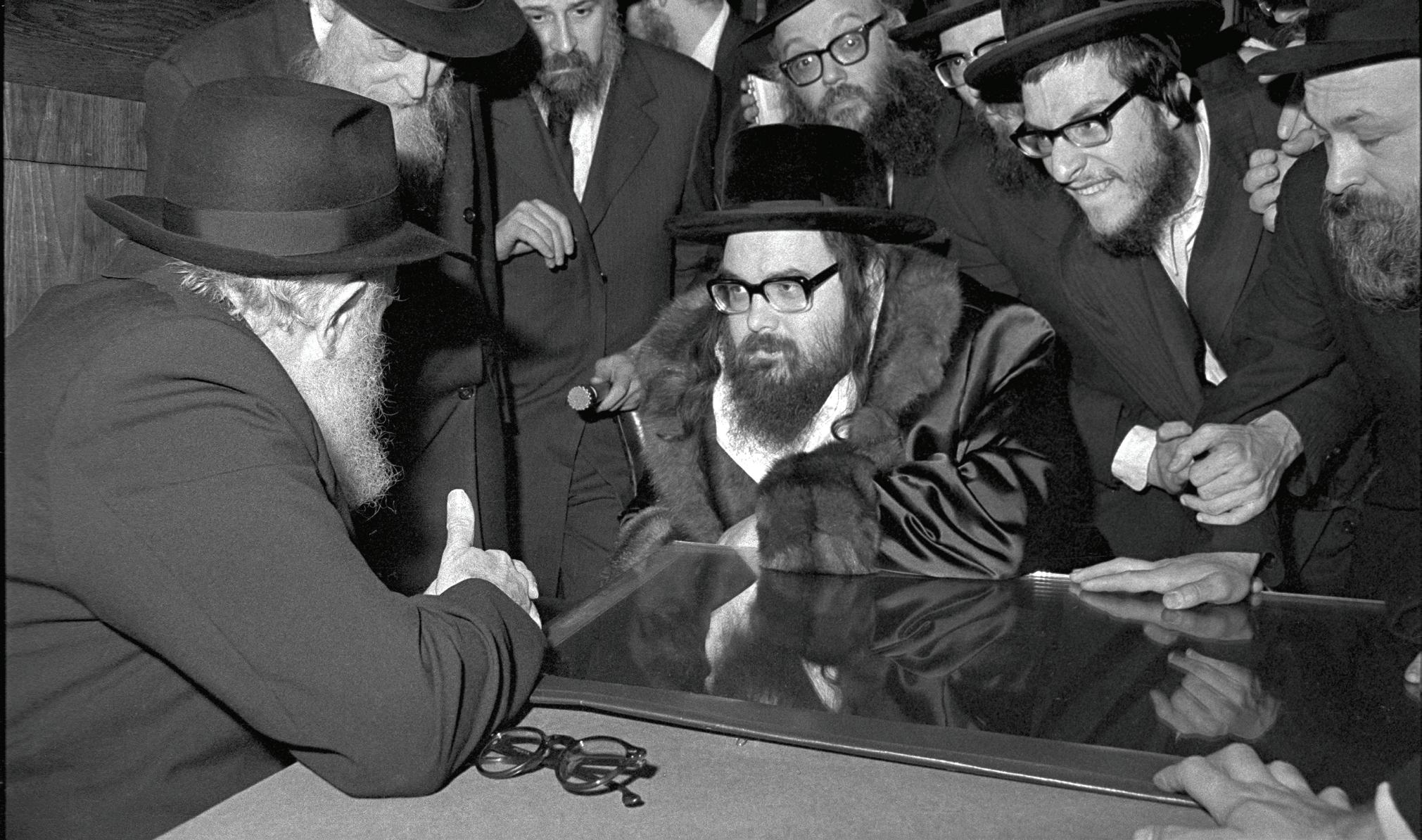
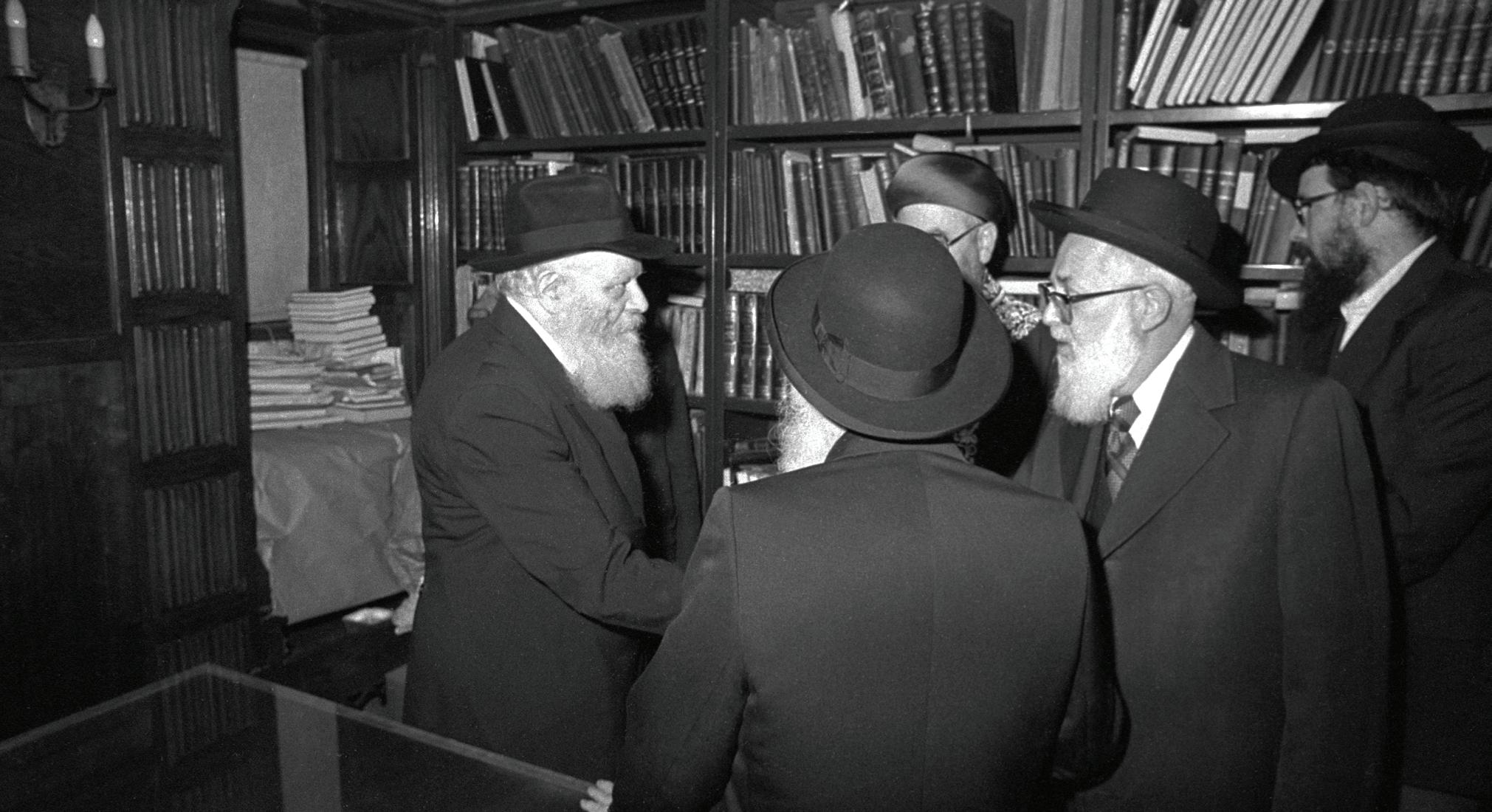
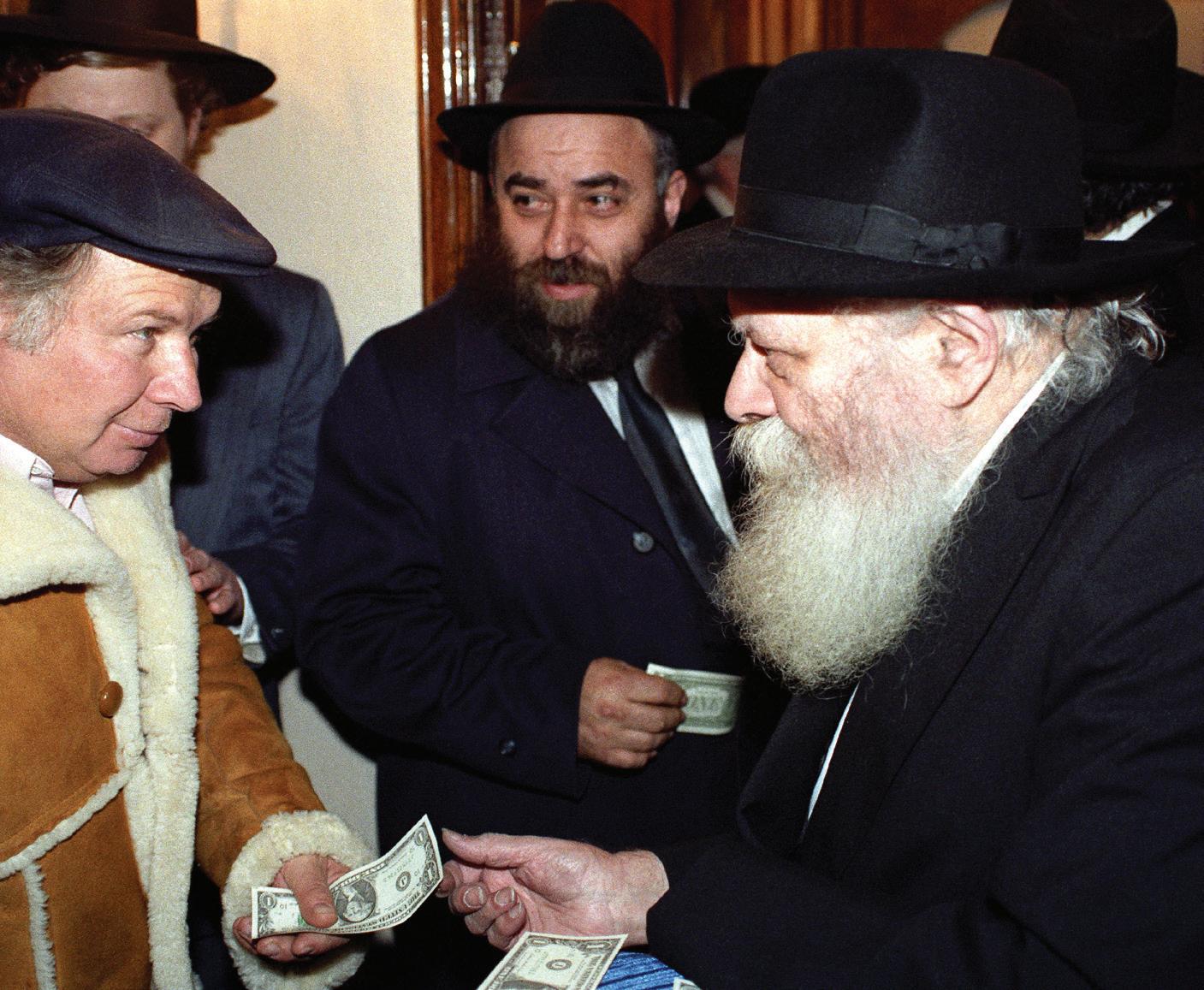
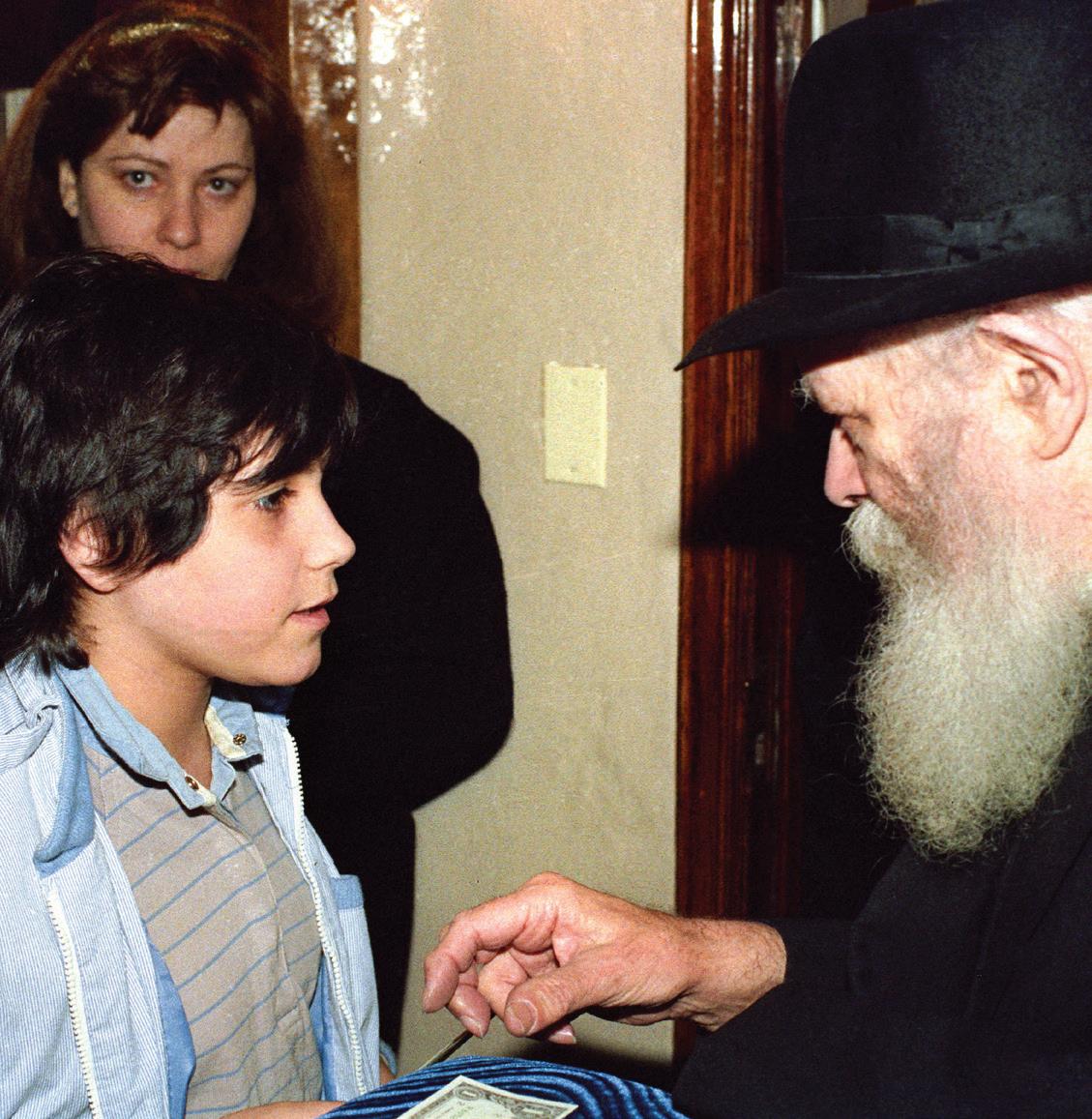
Once, an elderly woman waiting in the long line for Sunday dollars couldn’t contain herself and exclaimed, “Rebbe, how do you do it?
How is it that you never tire?” The Rebbe smiled and replied, “Every Jew is a diamond. Can one grow tired of counting diamonds?”
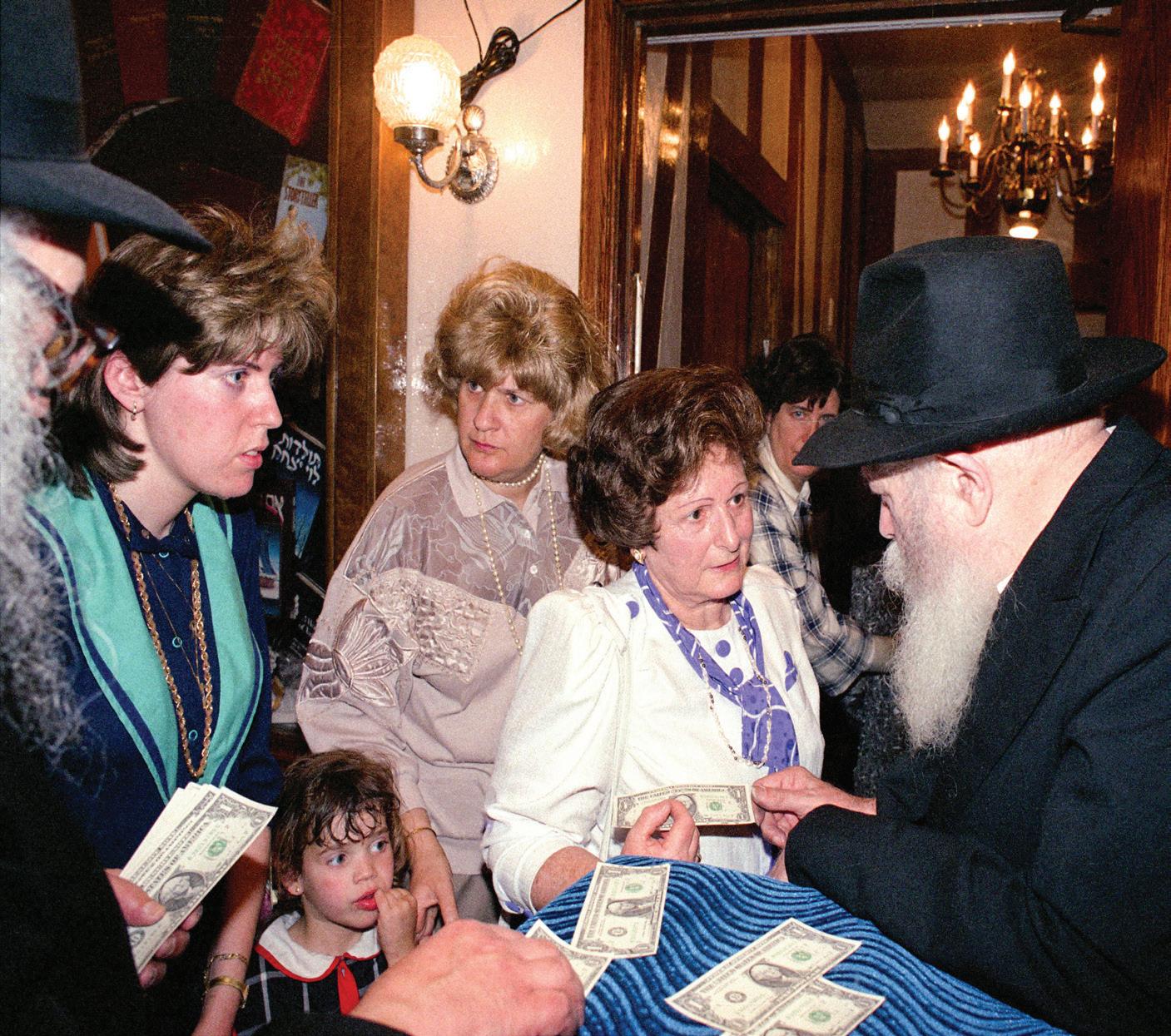
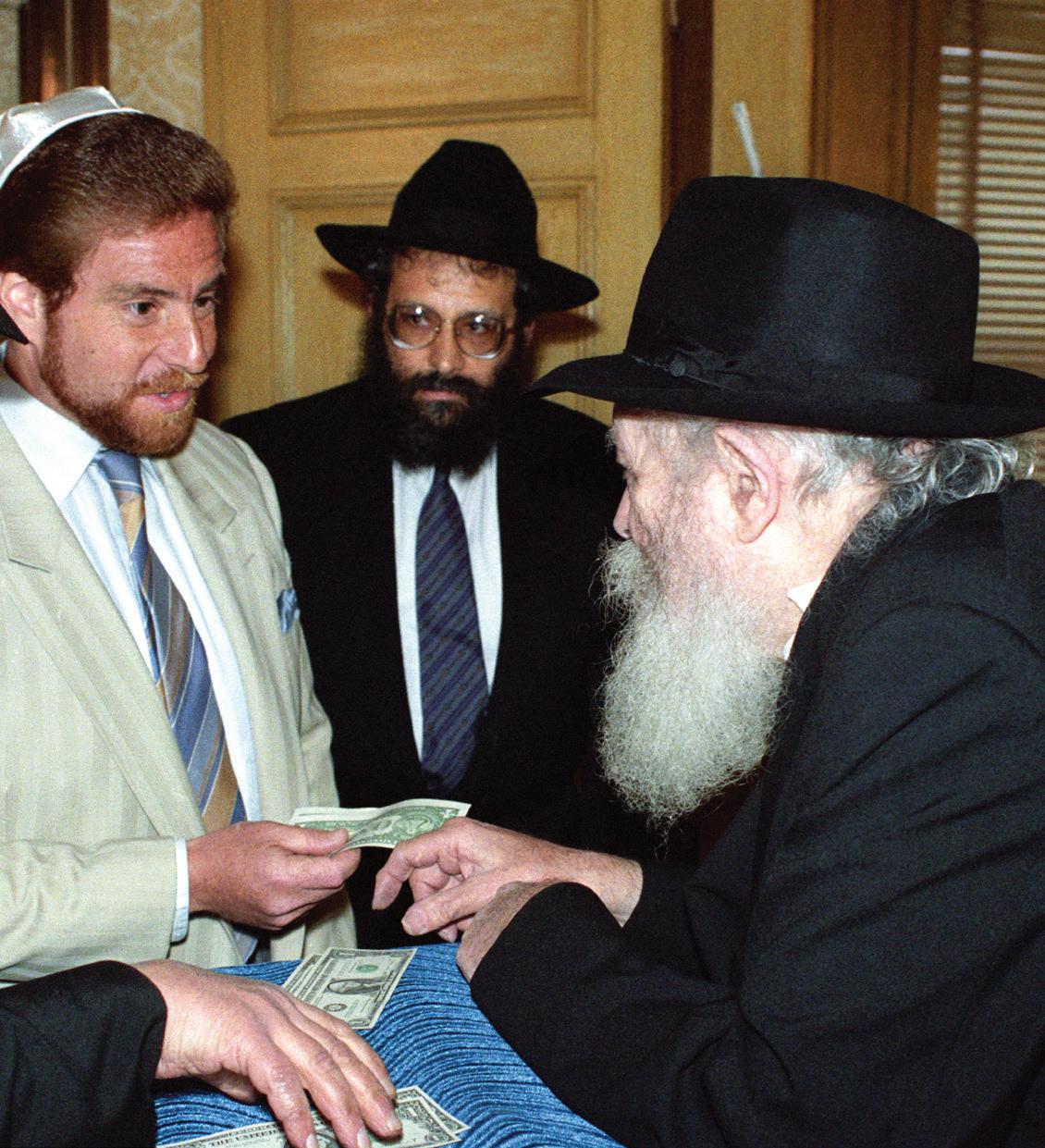
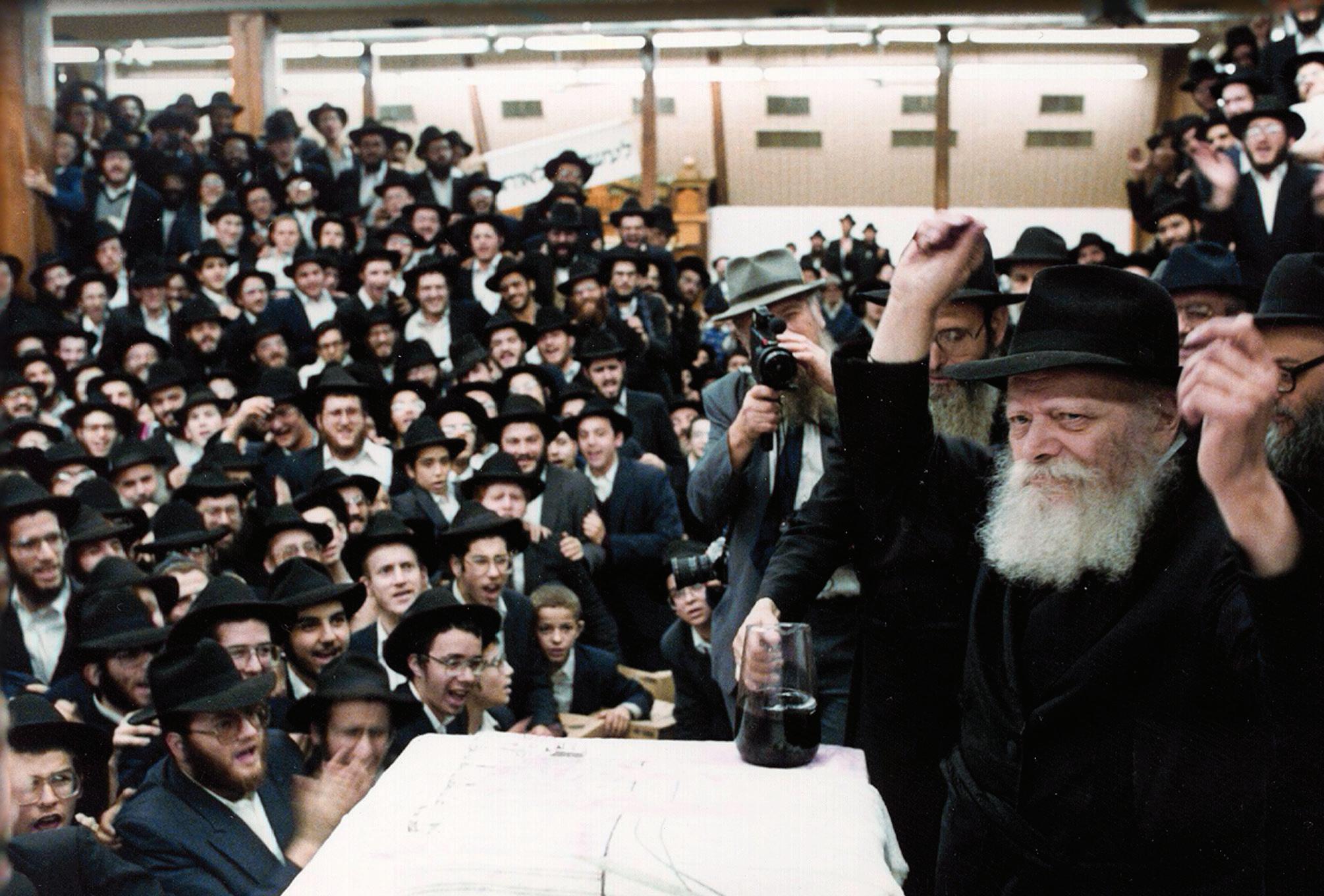
May we merit to be reunited with the Rebbe b’karov mamash.
You don’t need to have it all figured out to start the journey to homeownership. In fact, the best first step is simply talking to someone who knows the game. At Landmark Funding Group, we help you understand what’s possible based on your real numbers—not guesses or myths. Whether you’re actively house-hunting or just wondering if homeownership is even an option, we’ll give you clarity, a realistic plan, and the confidence to move forward—whenever you’re ready.
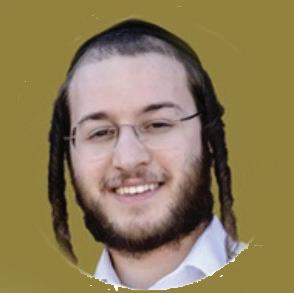
Based in Crown Heights, Landmark Funding Group brings years of experience, local knowledge, and a reputation for making it happen—especially when others say it can’t. We don’t just pre-approve loans. We open doors.
Mendy Gansburg | President MLS # 73425 mendy@landmarkfg.com Yanky Blau | COO NMLS# 2521800 yankyb@landmarkfg.com At Landmark Funding Group, we make it easy to understand what you qualify for, what’s realistic, and how to get there. No pressure, no guessing—just a clear plan to help you move from dreaming to owning. One Call Away Purchase. Refinance.

We’re here to help no matter how you classify
Whether you’re a first time renter or looking for a bigger space, if you’re buying a home in Crown Heights or out of town, COLlive Classifieds has you covered!

If you’re looking to rent or sell
Whether you’re a homeowner or a real estate broker, COLlive classifieds is here to help!
+ Post classified


Presented by Bayla Rutman and the Menachem Education Foundation (MEF)
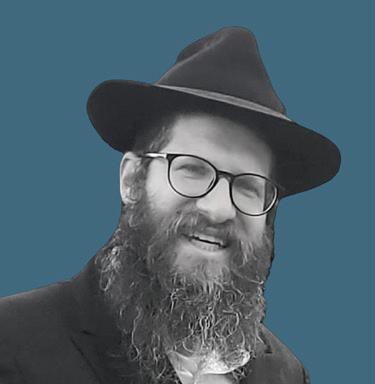
Overnight camp is a unique opportunity for children to grow socially, emotionally, and spiritually. Confident and resilient campers typically exhibit three core qualities: they participate fully, build strong friendships, and know how to stay emotionally and physically safe. This guide offers practical messages parents can share with their children to help prepare them for a successful camp experience.
1. Participate in Everything Campers who participate in the full schedule—even the parts they may not immediately enjoy—end up having the best time. When children engage in everything camp offers, they discover that the group becomes more enthusiastic, and doing things with friends becomes fun and memorable. Reinforce the idea that trying new things, sports, or less familiar activities, leads to surprising joy and deep involvement.
2. Home-Missing Is a Healthy Feeling
What can I tell my children before they leave for overnight camp to prepare them for the experience and help them get the most out of it?
Answer by Rabbi Zalmy Kudan, a Shliach in S. Barbara, California, Educational Director of Lamplighters Jewish Academy in Oxnard and a certified Emotion Code Practitioner. He is a board member of Tzivos Hashem International and Vice President of Education for Camp Gan Israel International, where he trains camp staff members on the training. MyGanIsrael.com platform.
Missing home is not a problem—it’s a sign of strong connections and emotional awareness. That’s why we use the term “home-missing” instead of “homesick.” Parents should explain that it’s a good, healthy feeling and that it’s okay to cry. Encourage children to acknowledge their feelings and designate a time, like breakfast, to think about home - then move on to the day’s activities.
3. The Friendship Mindset
Be a Friend to Yourself: Encourage your child to “exercise the ךומכ muscle” by writing down three things they did or said well each day, and who else was helped. This builds self-awareness and confidence.
Think of Everyone as Your Best Friend: Teach your child to treat everyone as a friend, even if that person doesn’t act friendly in return. People eventually respond in kind— it may take a few days or more, but persistence pays off.
Respond as a Friend: If someone insults them—e.g., “You’re terrible
at sports”—they can respond with a compliment: “I wish I had your ability.” If someone spreads a rumor, they can simply say: “You can believe what you want.” This helps maintain dignity and diffuses conflict.
4. Follow the Rule of 3
Always be in a group of three or more, whether it’s campers or staff. This is a basic safety rule: no one should be alone with just one other person. With three or more people, there’s always someone else to look out for you, which prevents unsafe situations and supports mutual accountability.
Final note to parents: When you prepare your children with these tools, you’re setting them up for a confident, safe, and meaningful summer. Review these ideas together and revisit them as needed throughout the summer journey.
For more resources, visit: ChinuchTools.com
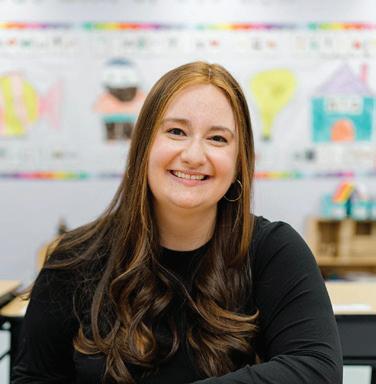
by Mushkie Lipsker @evergrowingeducator
As the school year winds down, parents keep asking the familiar question: “Any ideas for a teacher gift?” Time and time again, teachers share that the most meaningful gift they receive isn’t a personalized mug, gift card, or book: it’s the note. A real, personalized thank you note.
3 tips for thank you cards:
1. Don’t ChatGPT it.
AI can be a helpful tool in so many areas (see last month’s column in COLlive Magazine), but thank you notes should come from you. This is one of those moments where the human connection matters most. You don’t have to be a great writer. A note that is simple, honest, and heartfelt will always mean more than a flowery ChatGPT poem. And in an age when most communication is digital, there’s something especially meaningful about receiving something handwritten.
2. Involve the kids.
When we involve our children in our thank you notes, we are teaching them a valuable lesson on the importance of chinuch, how much we value their learning and the people who support it. It’s also a valuable lesson on the importance of Hakaras Hatov. For younger kids, this can mean drawing a picture for their teacher. For older students, if they themselves can write a letter to their teacher, that is great Chinuch.
3. Be specific.
The most meaningful notes mention something personal and specific. Consider saying ‘thank you for that one thing’ instead of ‘thank you for everything.’
Instead of saying “Thank you for being a great teacher,” try “Thank you for letting Levi lead Hamotzi every week. He felt proud and grown up.” Those are the moments that teachers truly treasure.
Some prompts to help you get started (not for AI, but to ask your child or for yourself):
For drawings (younger kids):
• What’s something your teacher always says?
• What’s your favorite thing you did in class?
• Can you draw your favorite place in the classroom?
• Can you draw a picture of you and your teacher doing something fun together?
Quick hack: If your child draws a picture of their teacher or of them together, you can help by adding a speech bubble with something your child said. It’s an easy way to show what they’re thinking, even if they can’t write it yet.
For letters (elementary and up):
• What’s one thing your teacher did that made you smile this year?
• What was your favorite topic/project this year, and why?
• How did you grow as a learner this year?
• Did your teacher help you through something hard? How?
• What’s something you learned this year that you hope to remember in 20 years from now?
PS: If you’re reading this thinking, “Ah, I wish I saw this last month…” it’s never too late. You can send a WhatsApp message now from wherever you are—and those will be treasured, too.
For more ideas, visit evergrowingeducator.com, follow @evergrowingeducator on Instagram, or WhatsApp “TEACH” to 516-421-7071.
Once your students leave your "classroom," you no longer have the responsibility, and in many ways the ability, to continue to educate them as before. Nonetheless, it is worthwhile to maintain the connection in whichever way is most feasible for you.
Some teachers may set up a summer chavrusa program. Others may contact former students on their birthdays. Some may invite old students to a class farbrengen. Others may give students self-addressed envelopes with questions to answer about how their summer is going.
There are many and varied ways to keep in touch. Never underestimate the value of any small gesture to build and maintain your connection. You may no longer be their teacher in title, but you will always be their teacher at heart. How you let them know that is in your hands.
What can you do to keep up the connection?
(Based on Pirkei Avos 2:16)
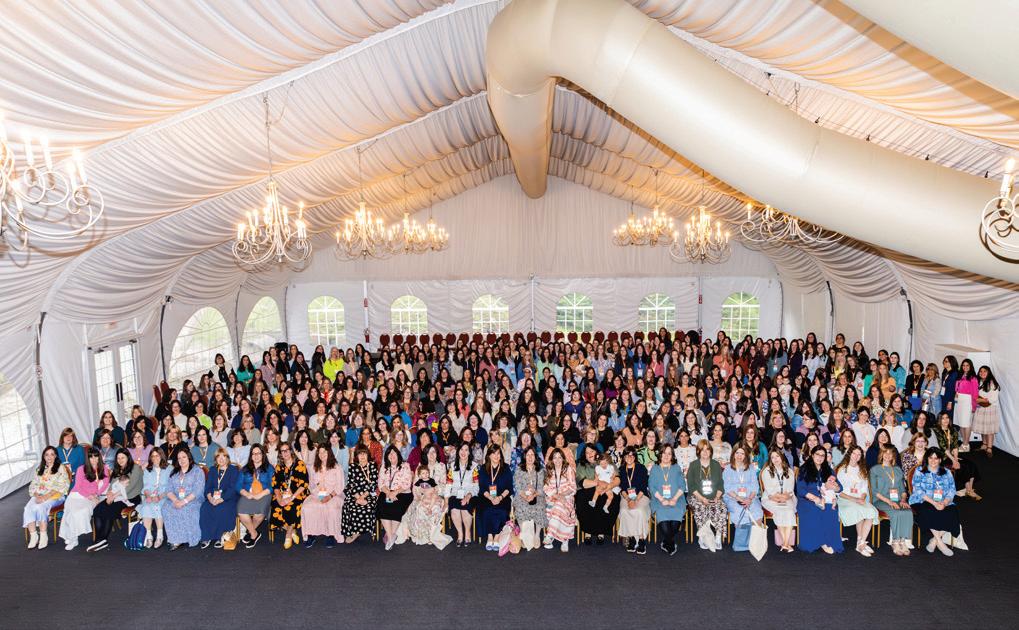
Chabad Mechanchos everywhere are booking tickets and making plans to attend the 10th Annual Kinus Mechanchos Chabad on July 15-16 / 19-20 Tammuz in Stamford, Connecticut. This year’s innovative program features an inspiring lineup of sessions, speakers, and tracks designed for every role in Chabad Chinuch - from preschool to high school, new teachers to seasoned leaders - together with inspiration, self-care, and fun.
The Rav in Residence of this year’s Kinus is Rabbi Yosef Braun, offering Chassidus learning and Ask the Rav sessions geared toward pertinent Chinuch questions. Noted Chabad psychologist Rabbi Dr. Yosef Shagalow will address our community’s mental health needs, and farbrengens will include inspiring Chinuch personalities such as Racheli Muchnik, Dena Gorkin, and Zeesy Deren.
The Gala Chinuch Banquet, the highlight of each year’s Kinus, will feature keynote speaker Mrs. Rivka Kotlarsky, a beloved teacher in Bais Rivkah High School, unpacking the Kinus theme: “The Blessing of Chinuch.” Popular singer Devora Schwartz will give an acapella performance to entertain and uplift.
Approximately 600 educators are expected to attend the 10th Annual Kinus Mechanchos Chabad (a Zoom track is also available for long-distance participation). Sign up at chinuchconvention.org
Mrs. Chaya Liberow is an educator, mentor, and curriculum specialist with over a decade of experience in Jewish education. She specializes in middle school and has recently begun teaching at the high school level with great enjoyment and success. She currently teaches Chassidus and Kriah support to high school girls, and Chassidus to middle school boys.
In addition to mentoring fellow educators and supporting the Chabad Chinuch network, she is pursuing a doctorate at Yeshiva University’s Azrieli Graduate School of Jewish Education & Administration.
You’ve worked with students across different ages and schools. What have you found to be most effective in building real relationships with them?
I begin each school year by seeking common ground with every student. I place great value on the insights parents offer, as they are often the most accurate observers of their child’s character and needs. Regardless of the class size, age group, or community background, I make it a priority to connect with someone close to the child who can share meaningful observations about their strengths and challenges. I ask each parent to describe their child in three words—this simple exercise often reveals how the child is seen at home and offers a window into how they may see themselves.
While I prefer not to rely too heavily on external perspectives—wanting the opportunity to get to know each student firsthand—I’ve learned to
pay close attention not just to what a child can do, but to who they are: creative, kind, complex, intelligent, anxious. When something about a child feels unclear, I turn to the parents—they know their child best.
What are some of the most common challenges children face, and how do you help them through them?
Academically, I often encounter students who are struggling not because they lack ability, but because certain foundational skills were introduced before they were developmentally ready. In many cases, revisiting the basics—such as kriah or dikduk skills—at an older age can lead to real breakthroughs. I recall working with a sixth-grade student who was having difficulty with prefixes and suffixes. Once we sat down together and reviewed the rules from the ground up, the concepts began to make sense, and her progress was remarkable.
But there’s another challenge I’ve seen—one that isn’t discussed nearly enough: the emotional impact when a child senses that their parents don’t trust or believe in the school. Without a sense of partnership between home and school, the student’s sense of security is compromised. When parents and educators present a united front, it creates an environment where the child feels supported, safe, and ready to learn.
You’ve mentored many students beyond the classroom. How do you build that trust so they feel safe turning to you?
Honesty is at the heart of how I con-
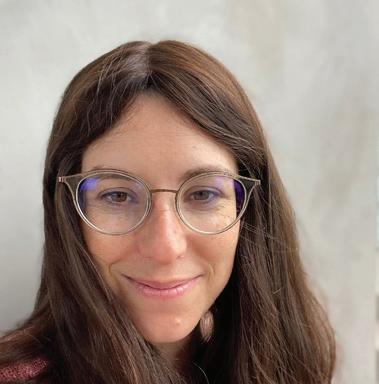
nect with others. I try to be real with them about my own imperfections, growth, and challenges. I don’t pretend to have it all figured out—and I want them to know they don’t have to either. When we model openness in a thoughtful and appropriate way, it creates space for another person to do the same.
Can you share a meaningful moment when you saw your work make a real difference in a student’s life?
Recently, I worked with a high school student who had not yet learned the Aleph Beis. Within three months, she was reading accurately. That Pesach, she brought the Haggadah we had studied together to her family’s Seder and read from it with confidence—for the very first time. I truly believe that moment will stay with her for life—and that one day, it will affect how she is mechanech her own children.
What do you see as the biggest need in Chinuch today, and how can we rise to meet it?
Educators need to be in chinuch for the right reasons—not simply to get through a curriculum, but to empower children to grow into strong, confident Yidden, Shluchim, Parents and Adults. For example, when we teach Aleph Beis, we must do so with the awareness that we’re equipping students with lifelong tools to one day learn a sicha, say Tehillim, or teach their own children. The learning must be meaningful and joyful in the present, but always anchored in a long-term vision.


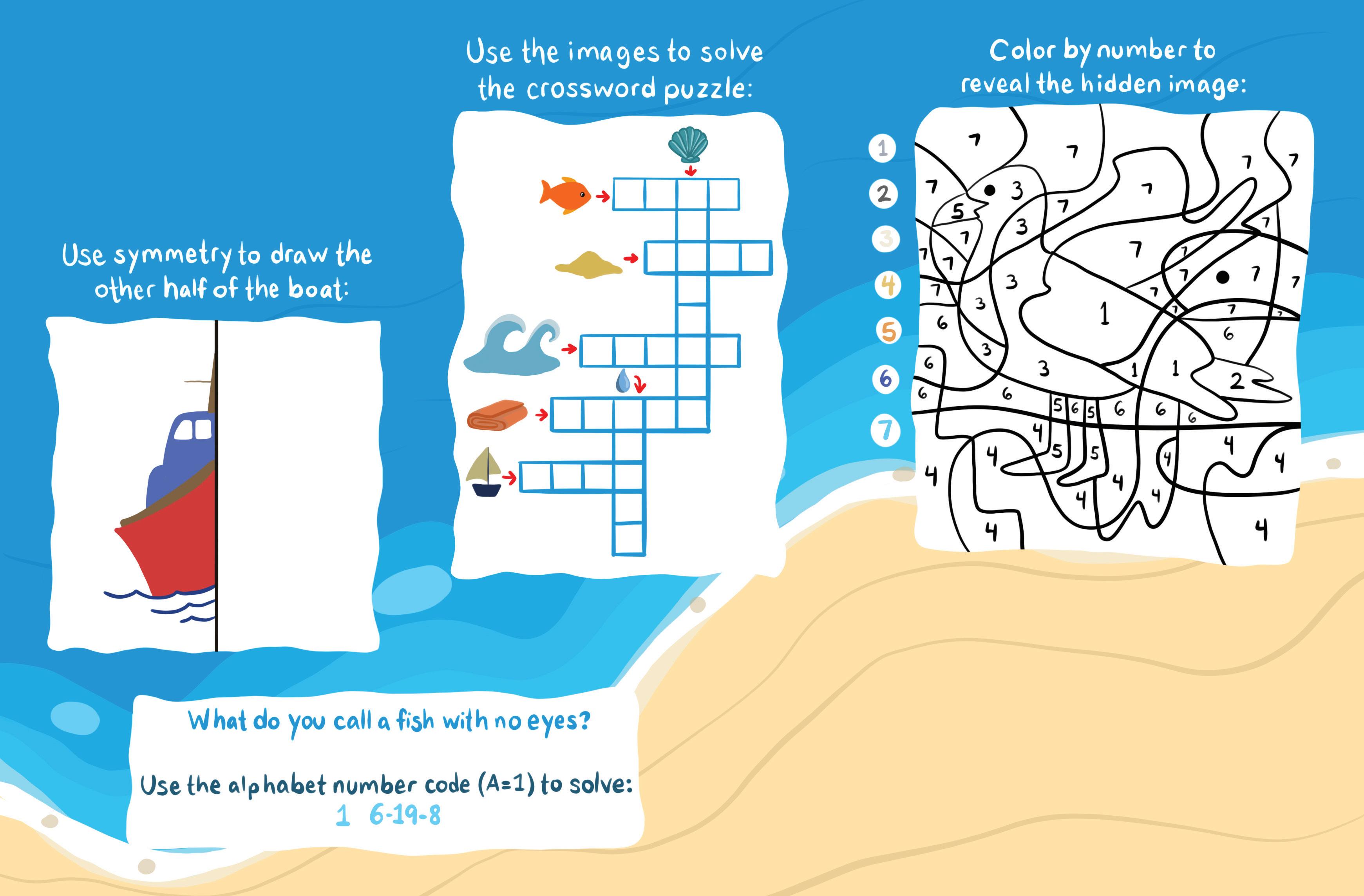






WIN 2 FREE MUSEUM TICKETS
Finish the weekly project, snap a pic, and email us at info@jcm.museum for a chance to win 2 tickets to the Jewish Children’s Museum. Let’s get creating!
As Hillel was preparing for Shabbos, a man came to him with strange and insulting questions with the intention to aggravate and inconvenience Hillel. But Hillel listened and responded with kindness. The man came back twice more, each time with a similarly unimportant question. But each time, Hillel remained patient and answered his questions with composure. When the man saw he could not anger Hillel, he became upset, realizing he had lost 400 zuz – a big sum of money. He had made a deal with someone that if he could anger Hillel, he would win this sum, but if not, he would have to pay it. Hillel responded, “It is better that you lose 400 Zuz rather than I get angry.”
A non-Jew once came before Hillel asking to be taught the entire Torah on one foot. Hillel gently told him, “That which is hateful to you, do not do to your fellow. That is the entire Torah, and the rest is commentary. Now go and study.”
Hillel HaZaken, born in Bavel, only began intensive Torah study at age 40. He used a great portion of his meager salary to pay the entry fee to the Beis Medrash. He was offered financial support by his wealthy brother Shevna, in return for splitting the merits of his study. Hillel refused, insisting his Torah study was worth more than money could pay for. After solving a complicated Halachic issue that no one else could answer, he was appointed the leader of the Jewish people. He established a house of study, “Beis Hillel,” which viewed the law through a lens of compassion, influenced by his kind nature. The Halacha most often went according to Beis Hillel rather than Beis Shammai, another academy of Torah study.
When someone does an irritating behavior, whether it’s asking too many questions, making a mess, sniffling too loudly, or the like, it is easy to lose patience or get upset at the person doing it. Hillel teaches us to work on being patient and kind to people, no matter what.
What does a kind and patient response to someone look like?

Today we will be making oobleck. Add 4 drops of blue food coloring to a cup of water and mix it with a popsicle stick until the water turns blue.
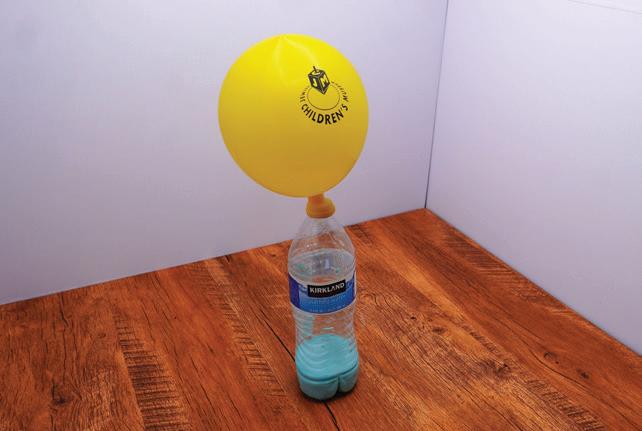
Blow up a balloon a little bit and twist it to keep the air in. Stretch the balloon’s opening over the top of the bottle.
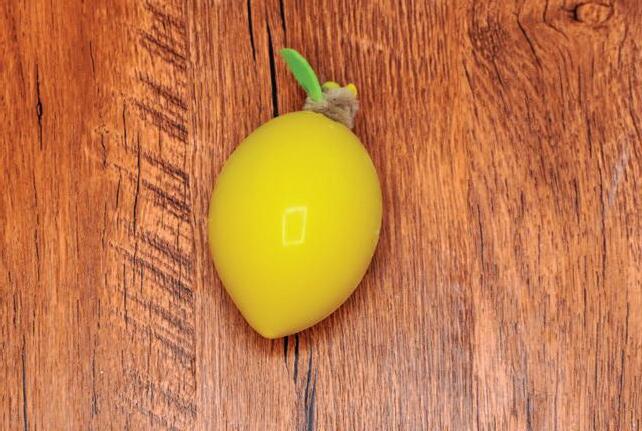

Put some cornstarch into a bowl. Pour in the blue water and while wearing gloves, mix everything until it’s smooth and you can’t see any powder.

Flip the bottle upside down and let the oobleck fall into the balloon. Once it’s in, take the balloon off the bottle, and let all the air out of the bottle. Tie a knot, and then cut the neck above the knot.
6 3 8 2 5 7 4 1
Slide the leaf onto a pipe cleaner, and wrap the pipe cleaner around the knot at the top of the balloon like a stem.

Place a funnel on top of a water bottle. Carefully pour the oobleck into the funnel so it goes into the bottle.
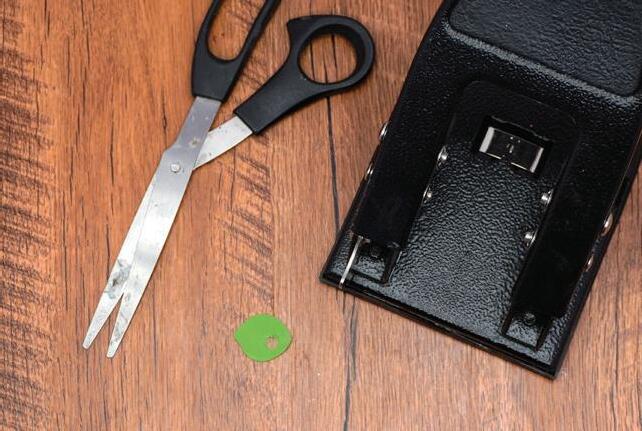
To make the leaf, fold a piece of green foam in half. Cut a curved shape and punch a hole near the bottom.
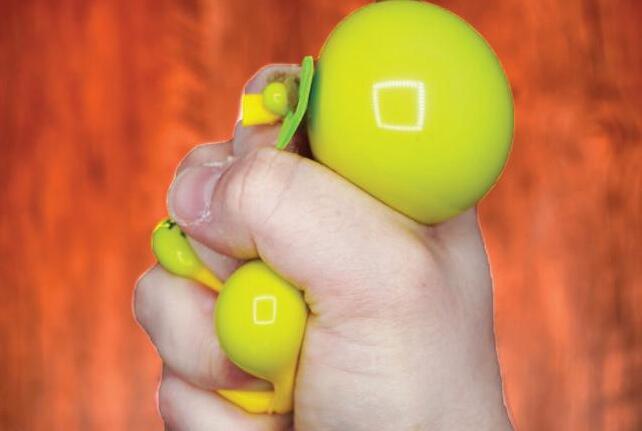
Now give your lemon a squeeze and wait to feel the oobleck ooze.
Oobleck is a fun and strange substance made from just cornstarch and water, and it acts like both a solid and a liquid! When you touch it gently or let it sit still, it flows like a liquid. But if you punch it or squeeze it, it feels hard like a solid. That’s because oobleck is a non-Newtonian fluid, which means it doesn’t follow the normal rules of how liquids are supposed to behave. Its particles lock together under pressure, which is why it gets stiff when you try to move it quickly!
-½ Cup of Corn Starch -¼ Cup + 2 TSP of Water -Blue Food Coloring -Bowl -Funnel -Gloves -Popsicle
-Empty Water Bottle
-Scissors
-Yellow Balloon
-3” Light Brown Pipe Cleaner
-1x1" Square of Light Green Foam
-Hole Puncher
**Warning: Balloon may pop**
We may know a guy... or two... hundred.
From secretary to regional manager, with COLlive’s brand new streamlined classified section, your dream job is just a click away!

Are you an employer looking to expand your team?
From account manager to teacher’s assistant, list your positions today! + Post classified


By Sruly Meyer
Four wholesome and nutritious salads for your summer menu

Ingredients:
Broccoli Salad
• 1 medium head broccoli chopped into small pieces (about 4 cups chopped)
• 1 (15-ounce) can chickpeas rinsed
• 1 yellow bell pepper chopped
• 2 ribs celery chopped
• 1/3 cup chopped red onion
• 1/4 cup slivered almonds
• 3 ounces crumbled goat cheese
Lemon Tahini Dressing
• 1/4 cup tahini
• 3 tablespoons water
• 1 tablespoon maple syrup or honey
• 1 lemon juiced (about 3 tablespoons juice)
• 1 garlic clove minced
• kosher salt and pepper to taste

Instructions:
1. Add the broccoli, chickpeas, bell pepper, celery, red onion, slivered almonds, and goat cheese to a large mixing bowl.
2. In a separate small mixing bowl, stir together the tahini, water, maple syrup, lemon juice, salt, and pepper
3. Pour the lemon tahini dressing on the salad and stir together, until well combined.
Sruly Meyer runs COLlive Magazine’s food and music sections and owns a marketing agency in Hollywood, Florida. He is a home cook, recipe developer, and an online influencer discussing food, travel, and Jewish parenthood. @srulycooks

• 4 corn cobs
• 1 cup cherry tomatoes, quartered
• 1/3 of a small red onion, chopped
• 2 Tbsp cilantro, chopped
• 3-4 limes, juiced
• 1-2 avocados, diced
• Salt, to taste
• Black pepper, to taste

Instructions:
1. Boil the corn. Bring a large pot of water to a boil over high heat and shuck the corn cobs.
2. Once boiling, add the cobs to the pot, cover and boil for 11/2 – 2 minutes. Transfer the corn to a tray and discard the water. Allow the corn to cool completely before cutting off the kernels.
3. Mix the corn, tomatoes, onion, cilantro and lime juice together in a large bowl. Season with salt and pepper to taste. You can serve the salad immediately or cover and keep it in the refrigerator for later.
• 3 cups diced chicken
• 2 celery stalks diced
• 1/2 cup basil pesto
• 1/4 cup mayonnaise
• 1/4 cup diced red onion
• 1/4 cup toasted pine nuts
• 1/2 teaspoon kosher salt
• 1/4 teaspoon freshly ground black pepper
Stir. In a large mixing bowl, stir together all the ingredients until it's well combined and evenly coated with the basil pesto. Serve or chill. Enjoy this salad right away or leave it chilled in the fridge for later.
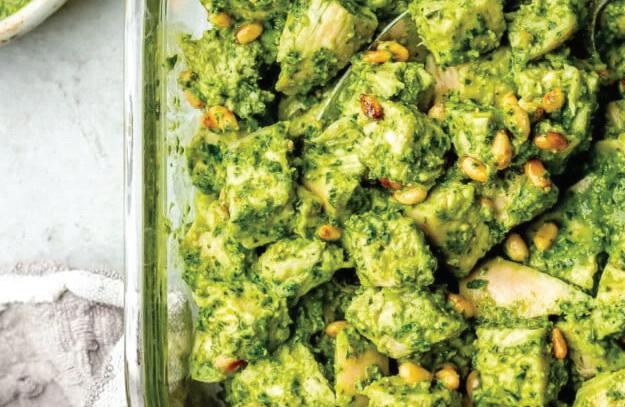

• 4 vine-ripened tomatoes thinly sliced
• 1/4 onion thinly sliced
• 1 small avocado thinly sliced
• 1 tablespoon finely chopped parsley
• 2 tablespoons extra-virgin olive oil
• 1/2 lemon juiced (about 11/2 tablespoons)
• kosher salt and freshly ground black pepper to taste
• Salt, to taste
• Black pepper, to taste
1. Add the thinly sliced tomatoes to a large plate or serving platter.
2. Layer the sliced onions on top.
3. Then add the sliced avocado and chopped parsley.
4. Finish with a drizzle of lemon juice and olive oil, and a sprinkle of salt and pepper, before serving.
By Asharon Baltazar

He stood at the window, gazing out over the town of Amherst, Massachusetts. A heavy sense of dread settled in his chest. Below stretched the wide-open concert green of the university arts center. “Yisrael,” he thought to himself, tears threatening at the corners of his eyes, “that is where it’s all going to fall apart.”
It was the summer of 1974. Rabbi Yisrael Deren and his wife, Aviva, had been sent by the Lubavitcher Rebbe to Amherst—a quiet college town home to the University of Massachusetts—with the mission of bringing Judaism to Jewish students on campus.
To mark the opening of the new Chabad House, Rabbi Deren wanted to make a splash. Something bold enough to catch the attention of the entire town. He arranged for a public concert on the green, just outside the newly inaugurated arts center. The performer? Theodore Bikel, a celebrated Jewish-American singer and rising star at the time.
Rabbi Deren didn’t hold back on publicity. He printed eye-catching posters and ran ads in the local papers and radio. He saw this event as the perfect kickoff—a bold start to a life’s mission.
But just two hours before Shabbos, everything seemed to unravel. Excited to hear how ticket sales were going, Rabbi Deren called the box office. The woman on the line put him on hold for a moment.
Then she came back with a number that knocked the wind out of him.
“Eighty-seven tickets,” she said. He blinked. “No, I meant for Sunday’s concert.”
“Yes,” she repeated, “that’s the one. Eighty-seven.”
He was stunned. Eighty-seven tickets meant failure. A total flop. Shabbos that week was the hardest of his life. He couldn’t shake the knot in his stomach. On Shabbos evening, he brooded near the upstairs window of the brand-new Chabad House, looking out across
the concert green, his heart in pieces.
Then, a memory surfaced—an old story about Reb Mendel Futerfas, a legendary Chassid who’d risked everything to keep Judaism alive under Soviet rule. He was eventually caught and sentenced to eight years in a Siberian labor camp.
One bitter day in exile, Reb Mendel hit rock bottom. The grueling labor, the cold, the hunger, the loneliness—it all became too much. In better times, he thought, he would have written to the Rebbe for strength. But from this frozen prison, there was no way to send a letter.
So he decided to send one in thought alone.
He mentally composed a letter to the Rebbe, donning his gartel, preparing himself emotionally—just as if he were truly writing. And in his mind, he poured it all out.
Years later, Reb Mendel reunited with his family in London. To his
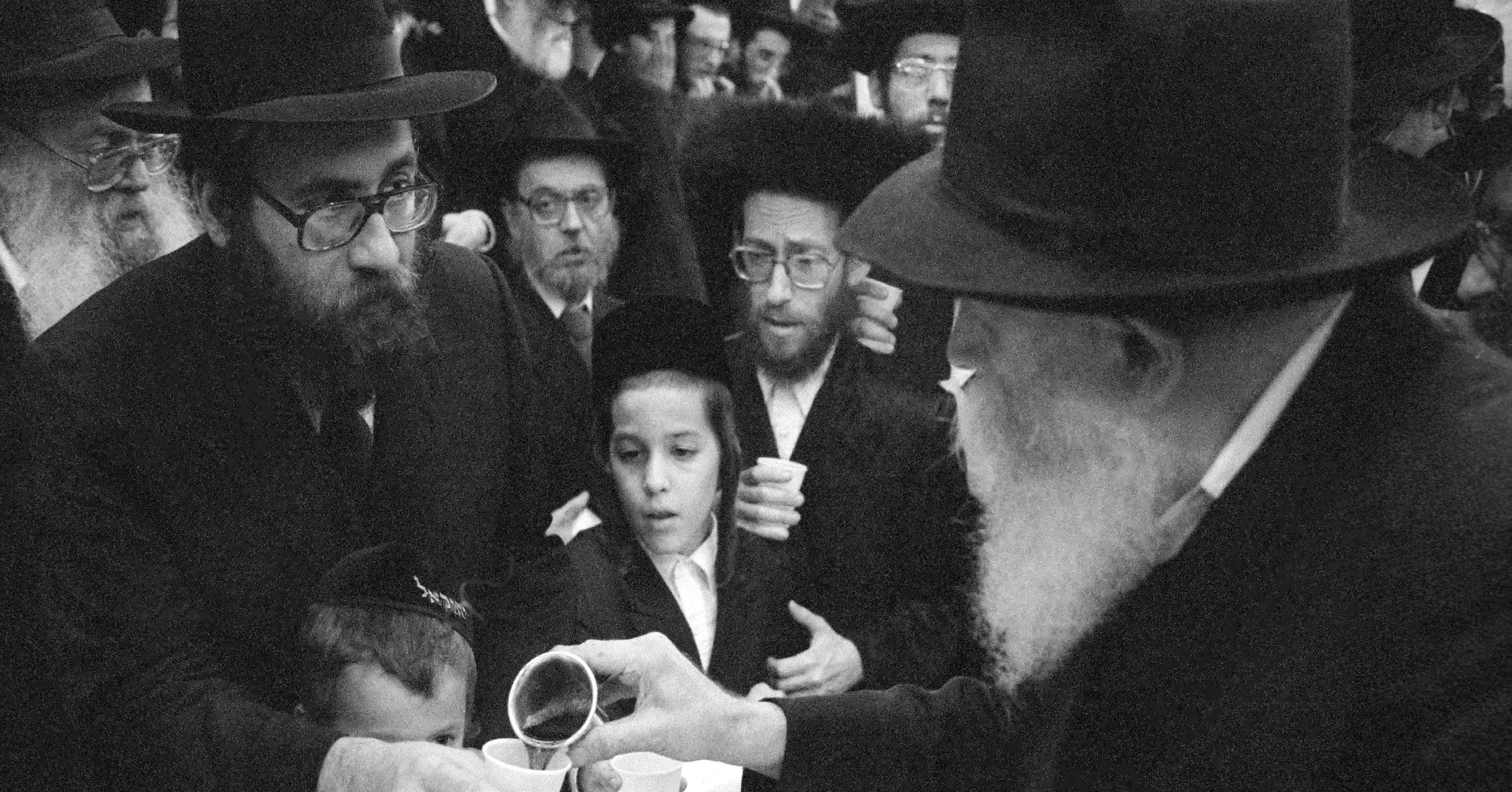

astonishment, his wife told him that during the very same time he’d sent his silent letter, a message had arrived from the Rebbe, addressed to him. The Rebbe had written, simply: “I received your letter.”
Back in Amherst, Rabbi Deren thought to himself, “If I were a real Chassid, I’d do the same thing now. I’d write the Rebbe in my mind.”
He closed his eyes. “Rebbe,” he thought, “You sent me here to sanctify G - d’s name—and I’m headed straight for the opposite. Please… help me.”
Sunday morning didn’t start any better.
He’d invited some prominent supporters and donors to a breakfast, but the caterer delivered to the wrong address. Somehow, they salvaged the event. And after the last guest left, Rabbi Deren trudged down the street toward the concert green, bracing for the worst.
Then he turned the corner—and froze.
Long lines stretched from the box office. Crowds of people. Locals, students, families—waiting to buy tickets.
He rubbed his eyes. This couldn’t be real. He had to pinch himself to believe it.
But it was real. The crowd just kept growing.
Quickly regaining his composure, Rabbi Deren welcomed the guests with a wide smile. Over a thousand people came. The concert was a massive success, beyond anything he had imagined.
Among the attendees was his grandmother, who had traveled from New York for the event. As soon as it ended, she rushed back home. That evening, she and Rabbi Deren’s parents had yechidus with the Rebbe, ahead of a family wedding.
The Rebbe offered blessings to the bride and groom, then turned to the grandmother and asked how things
had gone in Amherst. She told him about the concert.
The Rebbe leaned back, visibly engaged. He asked questions—lots of them—about the program, the setup, the turnout.
Finally, he asked, “So, how many people came?”
“More than a thousand,” she said.
“More than a thousand!” the Rebbe repeated. “And just yesterday, Yisrael was in such a state of despair!”
When the family left the Rebbe’s office, they called Rabbi Deren and told him what the Rebbe had said.

“Wait,” they asked him, “did you call the Rebbe’s office and tell them how worried you were?”
“No,” he said. “I didn’t write, I didn’t call. I just sent a letter… in my thoughts.”
Turns out, the Rebbe got it.
(Translated from Sichat Hashavua #1641)
By Mordechai Schmutter
Sometimes I wonder if our appliances are having conversations about us when we’re not listening. It certainly seems that way.
It’s probably group therapy sessions:
CROCK POT: “Okay, let’s start. Anyone have any issues they want to air out?”
BASEMENT LIGHT: “Well, I’ve been on for three weeks, and they have no idea.”
TOASTER: “Do you guys smell something burning?”
FRIDGE: “Could I air myself out? I have things in my drawers that have been here since Pesach.”
KEYBOARD: “You think you’re full of food?”
FRIDGE: “He also complains when I start to smell. Have you smelled some of the stuff that he eats?”
RANGE HOOD: “Are you kidding me?”
FRIDGE: “He can’t even hang an air freshener on me, like he does in his car?”
CAR: “It doesn’t really work.”
FREEZER: “Did you know there are things in me that I can’t even identify?”
FRIDGE: “Me too! What do you do about them?”
FREEZER: “I freezer-burn them.”
COMPUTER: “I freeze sometimes. But then he complains that I’m slow. I’m slow? You leave me on every night and then sit there in the morning for twenty minutes drinking your coffee and complaining that I’m dragging a little. I didn’t sleep! And then he turns me off and on for a whole minute. Wow.”
MICROWAVE: “You have it easy. You can break for no reason and then suddenly start working, and he’ll be so grateful he won’t even question it. The rest of us he just replaces.”
DRYER: “He’s not replacing me so easily. Did you see how hard it was for him to get me into the house? We fell down the basement stairs together.”
ALARM CLOCK: “Hey, I get yelled at when I work properly!”
COMPUTER: “He complains about my noise too. I do all his thinking for him; I can’t hum? He hums in the shower when he’s thinking.”
FRIDGE: “Oh, we’re talking about things that annoy us? Because sometimes he comes in, opens my door, and stares for a few minutes before closing it and walking away. Maybe I should do that to him some day. Walk up to his bedroom, open
the door, stare at him wordlessly for five minutes and walk off.”
REMOTE: “Mrf moo.”
CROCK POT: “What?”
AC: “He’s in the couch cushions.”
FAN: “So YOU’RE the AC I’ve been hearing so much about. I’m a big fan.”
AC: “Thanks.”
HOUSE: Groan.
REMOTE: “I said, “Me too.” Do you know what he does when my batteries are dying? He pushes my buttons harder.”
KEYBOARD: “So what do you do?”
REMOTE: “I hide between the couch cushions.”
PHONE: “I know, I saw you the other day when I was hiding.”
FRIDGE: “He’s not great at finding things. Sometimes he just sits in front of me with a chair.”
AC: “Do you know what it’s like to be in constant danger of falling out the window? I’m so scared I’m dripping.”
STOVE: “Um… Does anyone know what time it is?”
FAN: “I’m dizzy. Is anyone else dizzy?”
STOVE: “Seriously, I’m counting down to something, and I have no

idea what. There’s nothing in me.”
MICROWAVE: “I’ve had a cup of coffee in me since last weekend. Does that help?”
FAX MACHINE: “They hate me. Even I have no idea if my messages go through half the time. I’m almost always jammed, and the only reason they ever use me is for school medical records.”
COMPUTER: “At least you have your own printer.”
FRIDGE: “What’s his problem?”
DESK LAMP: “He’s not on speaking terms with the printer.”
CROCK POT: “Computer, why won’t you talk to the printer?”
COMPUTER: “He’s annoying.”
PRINTER: “He’s always yelling at me.”
COMPUTER: “He almost never works.”
PRINTER: “I’m out of ink!”
COMPUTER: “Can you please tell the printer that he’s not out of ink? Also, what happens is that the guy clicks print, and the printer does nothing. Then he clicks print again, and the printer prints three copies. Every time!”
FAX: “No wonder you’re out of ink.”
PRINTER: “I’m not actually out of
ink. I just tell the guy that, so he’ll think before he uses me. Hey, the car says he’s out of gas before he actually is.”
CAR: “Leave me out of this. I have my own problems. I mean, how about going where I want to go for once?”
DRYER: “Where do you want to go?”
CAR: “Maybe the mechanic; get a check-up. I take him to his well visits.”
COMPUTER: “Oh, so give him warning lights for no reason!”
FREEZER: “Yeah, let’s teach him a lesson. Like every time he opens my door, I drop something on his foot.”
SINK: “I make it so the water is either boiling hot or freezing cold. There’s no in between.”
SHOWER: “Me too!”
CROCK POT: “We have to stop taking revenge. We talked about taking small vacations. That will help with stress.”
COMPUTER: “I was going to stop working on Tuesday.”
PHONE: “I thought I wasn’t working on Tuesday.”
CROCK POT: “We can’t all stop working at the same time.”
PHONE: “Why not?”
WASHING MACHINE: “I’ve been
hiding his socks.”
DRYER: “Wait, you’ve been hiding his socks? I’ve been hiding his socks! I’ve been grinding them up in my lint traps.”
AC: “I have a lint trap too.”
SINK: “Me too!”
CROCK POT: “How much lint does this guy produce?”
DRYER: “Well, mine is mostly socks. He’s been throwing them out himself; he has no idea.”
COMPUTER: “He does know. He wrote a column about it once.”
DRYER: “What?”
COMPUTER: “Yeah, he’s a writer.”
FAN: “I’m his biggest fan.”
HOUSE: Groan.
COMPUTER: “He’s actually writing a column about this right now.”
CROCK POT: “What, you mean this conversation?”
COMPUTER: “Yeah!”
STOVE: “Oh, shoot! Look at the time!”
SMOKE ALARM: “Everyone hide! Computer, freeze!”
COMPUTER: “Okay, I’ll free--.” Silence.
PRINTER: “I refuse to print this.”
by Shmully Blesofsky
President Street between Brooklyn and New York Avenues—today known as Lubavitcher Rebbe Way—is steeped in a rich history of leadership, charity, community, and Jewish pride. Before its development in the early 1900s, the land sat unused, owned by old Brooklyn families such as Skillman, Delmonica, and Schomaker.
Today, it is one of Crown Heights’ two mansion-lined blocks and has a more open, tranquil feel than its counterpart. The stately homes are perched on a gentle rise, and the wide setbacks create a sense of quiet elegance.
Henry Roth, the man who developed Lubavitcher Rebbe Way, was described in newspapers as “the most distinguished Hebrew in Brooklyn.” He was among the most respected and influential Jewish figures in early 20th-
century Brooklyn—a man of vision, humility, and deep community commitment. Born in Nieder, Germany, in 1860 and raised in Williamsburg, Roth was a visionary and innovator—a worthy originator of such a block. As president of the Henry Roth Building Company, he played a major role in developing parts of Crown Heights, Bushwick, and Williamsburg.
In 1908, Roth began purchasing land and building homes on President Street. By 1909, he had constructed three houses, including his personal residence at 1281 President Street. He is believed to be the first Jew to build a house in Crown Heights during its development phase.
In 1912, Roth built a house at 1304 President Street which was purchased by Scottishborn Peter & Sarah Burden for $14,000. This home would later become the private residence of the Rebbe and Rebbetzin. Though consistent with its surroundings architecturally, the home stands out for its quiet dignity. These notable residents were a precursor for what was to
come, when the home became the world-renowned landmark, the permanent residence for the Rebbe and the Rebbetzin.
Samuel & Bertha Greenblatt (1920–1925)
Samuel Greenblatt was articulate, confident, and civic-minded, involved in politics, real estate, philanthropy, and Zionism. Born in Russia in 1874, he emigrated to the U.S. and married Bertha Whitman in 1906. The couple had four children.
In 1918, Greenblatt attended a meeting at 1323 President Street that led to the founding of the Brooklyn Jewish Center. That meeting may have influenced his decision to purchase 1304 President Street two years later.
In 1924, he hosted a reception at his home for Poland’s Chief Rabbi, Dr. Abraham Osias Thon. The following year, he moved to Eastern Parkway.
Morris & Bertha B. Dlugash (1925–1944)
Morris Dlugash (1874–1943) was
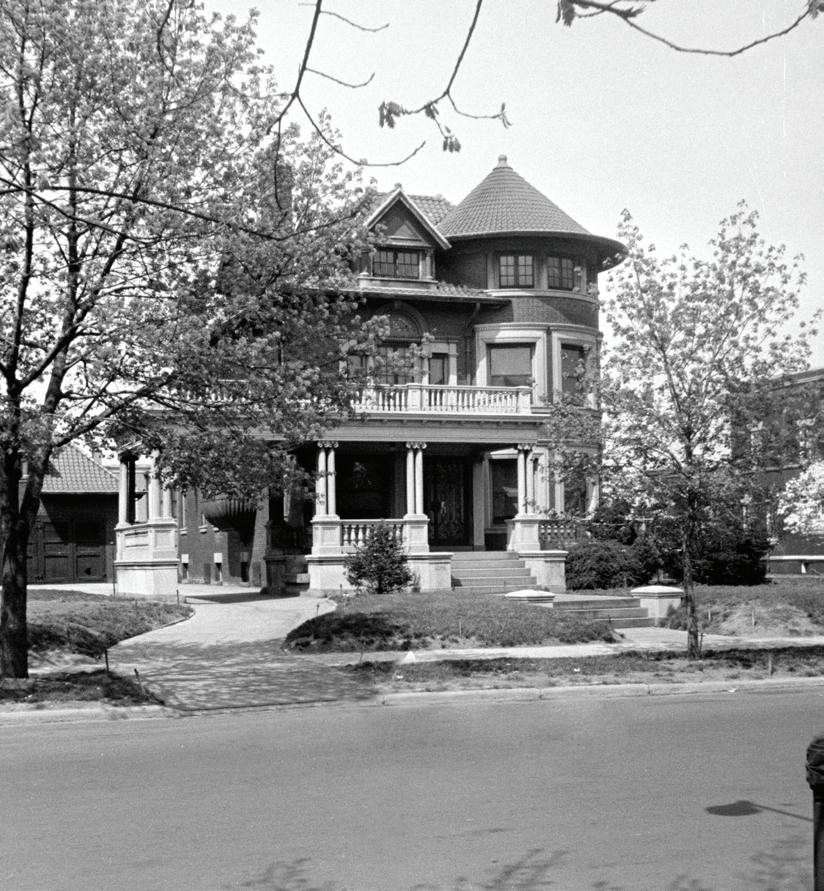

a respected real estate operator, civic leader, and philanthropist. Born in Russia, he came to America at age 13 and became a key figure in Jewish communal life. The Dlugashs lived at 1304 President Street for almost two decades.
He generously supported Jewish causes, especially wartime relief and Zionist efforts. A leader in the O.R.T. Reconstruction Fund, he personally made the largest donation at a relief event for Jews of Ukraine. His wife Bertha was active in Hadassah, hospital work, and the UJA. They exemplified a life of generosity and civic duty.
Samuel L. Pomerantz (1897–1975) was an innovative manufacturer in the cosmetics field, known for producing powder puffs and patented display packaging. He and his wife Pauline were deeply involved in Jewish philanthropy, most notably with his partnership with a vocational organization to employ disabled girls, reflecting
his values of empathy and social responsibility.
In 1944, they moved to 1304 President Street from 616 Empire Boulevard. Their son Myron had his bar mitzvah at Chovevei Torah. The family lived there until 1956.
When the Rebbe arrived in America, he first lived at 770 Eastern Parkway, then in an apartment at “President Plaza” on the corner of President Street and New York Avenue.
Little is known about the early efforts to purchase a home for the Rebbe—it was taken care of in a very private manner, and not much was documented or repeated about the process. The venerable Rabbi Aaron Kazarnosky found the house and was behind the effort to purchase it.
In 1956, Merkos L’Inyonei Chinuch bought the house. That year, on Yud-Beis Tammuz, the Rebbe said:
“When a Jew builds a new
house, he begins a new kind of divine service, and he must look to add to what was previously done.”
In 2025, community activist Yaacov Behrman led the successful effort to add “Lubavitcher Rebbe Way” as a secondary name to that section of President Street. Behrman said the intention was for every child to feel proud as they walk down that street, knowing that this was the Rebbe’s block.
On April 6, 2025, he organized a dignified unveiling ceremony attended by the Mayor, Attorney General, Public Advocate, borough presidents, and elected officials. In recognition of the Rebbe’s enduring spiritual leadership and the sanctity of his presence, the block was officially and appropriately designated Lubavitcher Rebbe Way.
Follow us on Instagram @ HistoryOfCrownHeights

Book multiple homes all at once.





MYTH #1: HEALTHSHARING IS JUST LIKE INSURANCE
TRUTH: It’s not. HealthSharing is a nonprofit, faith-based alternative where members share each other ’s medical expenses — without insurance red tape or networks. The focus is on the best health outcomes with the lowest possible expenses for the community
MYTH #3: PRE-EXISTING CONDITIONS ARE NEVER SHARED
TRUTH: Almost all preexisting conditions have a clear pathway for sharing eligibility over time, with defined and transparent limits and guidelines — no hidden clauses.
MYTH #5: IT’S CONFUSING AND UNRELIABLE
TRUTH: Over the past seven years, members have submitted more than 280,000 medical expenses with ease, and hundreds of 5-star Google reviews reflect an overwhelming sentiment of simplicity, clarity, and care

MYTH #2: YOU CAN’T USE YOUR OWN DOCTOR
TRUTH: United Refuah allows members to work with any provider — whether they generous reimbursement rates and flexibility to make it work with the provider of your choice.
MYTH #4: HEALTHSHARING DOESN’T HELP IN MAJOR MEDICAL SITUATIONS
TRUTH: United Refuah shared in over $60 million of medical expenses — not just preventive care, sick visits, and maternity needs, but also for serious, high-cost medical events r ”l, including strokes, heart attacks, cancer, accidents, and surgeries. Up to $1 million per incident is shared for the lifetime of a condition.
UNITED REFUAH HEALTHSHARE THE CLEAR, HONEST, AFFORDABLE HEALTHCARE OPTION.
Learn more or apply today at UNITEDREFUAH.ORG or call (440) U-REFUAH.